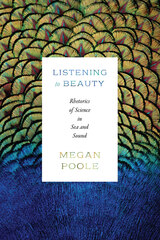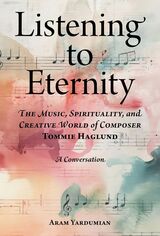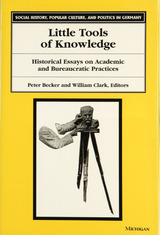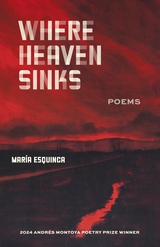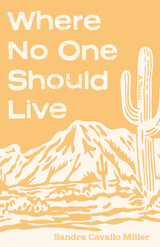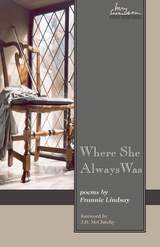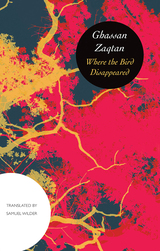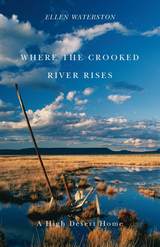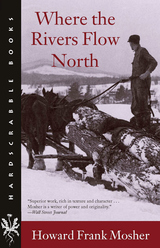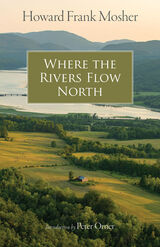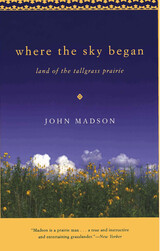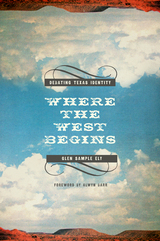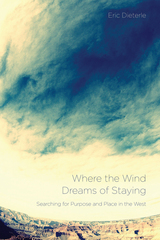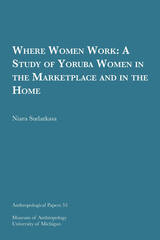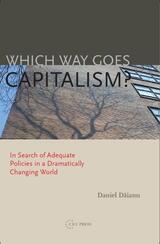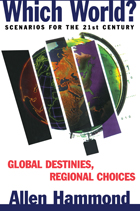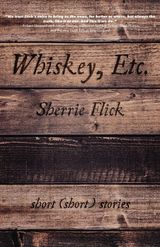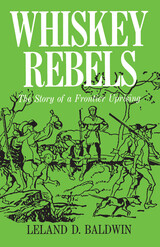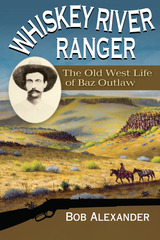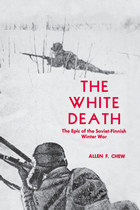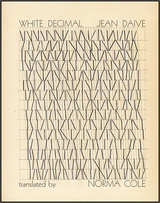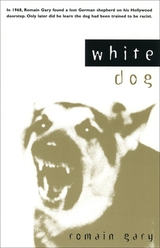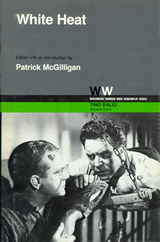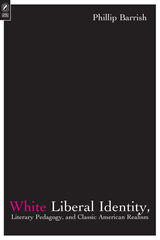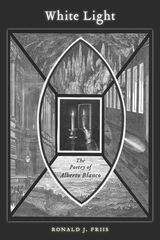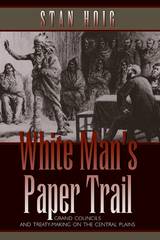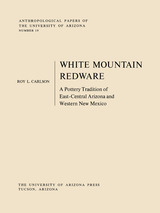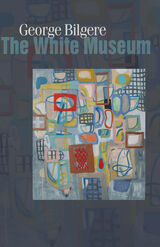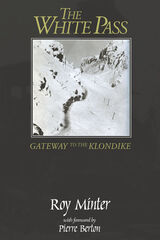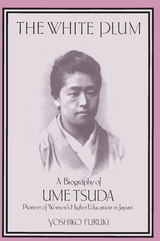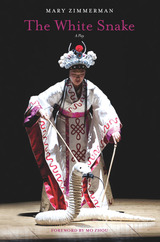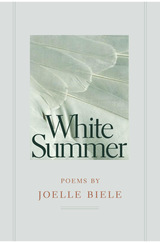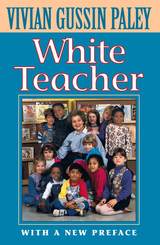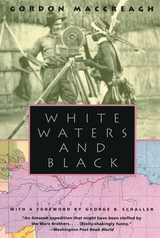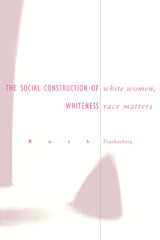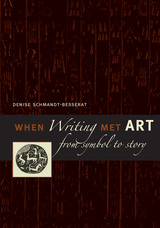 When Writing Met Art: From Symbol to Story
By Denise Schmandt-Besserat
University of Texas Press, 2007 Denise Schmandt-Besserat opened a major new chapter in the history of literacy when she demonstrated that the cuneiform script invented in the ancient Near East in the late fourth millennium BC—the world's oldest known system of writing—derived from an archaic counting device. Her discovery, which she published in Before Writing: From Counting to Cuneiform and How Writing Came About, was widely reported in professional journals and the popular press. In 1999, American Scientist chose How Writing Came About as one of the "100 or so Books that shaped a Century of Science." In When Writing Met Art, Schmandt-Besserat expands her history of writing into the visual realm of communication. Using examples of ancient Near Eastern writing and masterpieces of art, she shows that between 3500 and 3000 BC the conventions of writing—everything from its linear organization to its semantic use of the form, size, order, and placement of signs—spread to the making of art, resulting in artworks that presented complex visual narratives in place of the repetitive motifs found on preliterate art objects. Schmandt-Besserat then demonstrates art's reciprocal impact on the development of writing. She shows how, beginning in 2700-2600 BC, the inclusion of inscriptions on funerary and votive art objects emancipated writing from its original accounting function. To fulfill its new role, writing evolved to replicate speech; this in turn made it possible to compile, organize, and synthesize unlimited amounts of information; and to preserve and disseminate information across time and space. Schmandt-Besserat's pioneering investigation of the interface between writing and art documents a key turning point in human history, when two of our most fundamental information media reciprocally multiplied their capacities to communicate. When writing met art, literate civilization was born.
When You Dare to Say Yes: Jill Derby and Nevada Activism
Jill Derby
University of Nevada Press, 2024 In 1973, a radical choice that Jill Derby made while under pressure changed the trajectory of her career from a potential profession in academia to that of a lifelong political activist. When You Dare to Say Yes is a decades-spanning account of how a conservative and conventional upbringing, which began in rural Nevada, evolved into progressive political activism that influenced the course of the state’s education system and advanced women’s gender equality in public life.
Derby’s account of the awakening of her post-college experience living abroad and stories of her global travels infuse this memoir with an international perspective and entertaining vignettes. Ultimately, Derby shares her personal understanding of the transformative power of living among different cultures.
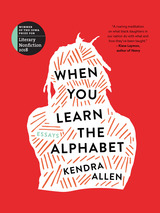 When You Learn the Alphabet
Kendra Allen
University of Iowa Press, 2019 Kendra Allen’s first collection of essays—at its core—is a bunch of mad stories about things she never learned to let go of. Unifying personal narrative and cultural commentary, this collection grapples with the lessons that have been stored between parent and daughter. These parental relationships expose the conditioning that subconsciously informed her ideas on social issues such as colorism, feminism, war-induced PTSD, homophobia, marriage, and “the n-word,” among other things.
These dynamics strive for some semblance of accountability, and the essays within this collection are used as displays of deep unlearning and restoring—balancing trauma and humor, poetics and reality, forgiveness and resentment.
When You Learn the Alphabet allots space for large moments of tenderness and empathy for all black bodies—but especially all black woman bodies—space for the underrepresented humanity and uncared for pain of black girls, and space to have the opportunity to be listened to in order to evolve past it.
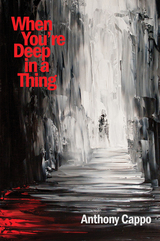 When You’re Deep in a Thing
Anthony Cappo
Four Way Books, 2022 When You're Deep in a Thing reimagines the coming of age book and the masculine tropes of the bildungsroman, suggesting that adulthood never vanquishes the kids we were. When Cappo's speaker returns home for holidays, "memories / of hangdog childhood seep in / like methane." Despite temporal distance, he perpetually finds himself in the museum of paternal absence, the house his father left, where "ghosts whisper" and "frames / fade to shame." From this possessed site, the collection bravely asks, how does one make sense of boyhood? Become a man without guidance? As the certainties of a religious upbringing vanish, the physical and spiritual boundaries of the world threaten to disintegrate. From depression, to political violence, to the certainty of death, Cappo's exigent debut ventures to discover an intimate humanity against all odds. At these poems' horizons, a tenacity remains, a determination to find sweetness, candor, and connection in this troubled world, where "the air's still, // The ground a trembling silence," yet "scathed we set out again."
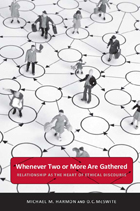 Whenever Two or More Are Gathered: Relationship as the Heart of Ethical Discourse
Michael M. Harmon and O. C. McSwite
University of Alabama Press, 2011 Rethinking governance through the lens of human connection. Whenever Two or More Are Gathered focuses on the critical role of ethics and moral responsibility in the field of public administration. Michael M. Harmon and O. C. McSwite posit that administrative ethics, as presently conceived and practiced, is largely a failure, incapable of delivering on its original promise of effectively regulating official conduct in order to promote the public interest. They argue that administrative ethics is compromised at its very foundations by two core assumptions: that human beings act rationally and that language is capable of conveying clear, stable, and unambiguous principles of ethical conduct. The result is the illusion that values, principles, and rules of ethical conduct can be specified in workably clear ways, in particular, through their formalization in official codes of ethics; that people are capable of comprehending and responding to them as they are intended; and that the rewards and punishments attached to them will be effective in structuring daily behavior. In a series of essays that draw on both fiction and film, as well as the disciplines of pragmatism, organizational theory, psychoanalysis, structural linguistics, and economics, Harmon and McSwite make their case for human relationship as the proper foundation of administrative ethics. “Exercising responsible ethical practice requires attaining a special kind of relationship with other people. Relationship is how the pure freedom that resides in the human psyche—for ethical choice, creativity, or original action of any type—can be brought into the structured world of human social relations without damaging or destroying it.” Furthermore, they make the case for dropping the term “ethics” in favor of the term “responsibility,” as “responsibility accentuates the social [relational] nature of moral action.”
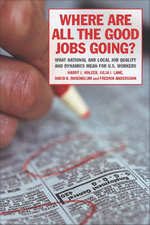 Where Are All the Good Jobs Going?: What National and Local Job Quality and Dynamics Mean for U.S. Workers
Harry J. Holzer
Russell Sage Foundation, 2011 Deindustrialization in the United States has triggered record-setting joblessness in manufacturing centers from Detroit to Baltimore. At the same time, global competition and technological change have actually stimulated both new businesses and new jobs. The jury is still out, however, on how many of these positions represent a significant source of long-term job quality and security. Where Are All the Good Jobs Going? addresses the most pressing questions for today's workers: whether the U.S. labor market can still produce jobs with good pay and benefits for the majority of workers and whether these jobs can remain stable over time. What constitutes a "good" job, who gets them, and are they becoming more or less secure? Where Are All the Good Jobs Going? examines U.S. job quality and volatility from the perspectives of both workers and employers. The authors analyze the Longitudinal Employer Household Dynamics (LEHD) data compiled by the U.S. Census Bureau, and the book covers data for twelve states during twelve years, 1992–2003, resulting in an unprecedented examination of workers and firms in several industries over time. Counter to conventional wisdom, the authors find that good jobs are not disappearing, but their character and location have changed. The market produces fewer good jobs in manufacturing and more in professional services and finance. Not surprisingly, the best jobs with the highest pay still go to the most educated workers. The most vulnerable workers—older, low-income, and low-skilled—work in the most insecure environments where they can be easily downsized or displaced by a fickle labor market. A higher federal minimum wage and increased unionization can contribute to the creation of well paying jobs. So can economic strategies that help smaller metropolitan areas support new businesses. These efforts, however, must function in tandem with policies that prepare workers for available positions, such as improving general educational attainment and providing career education. Where Are All the Good Jobs Going? makes clear that future policies will need to address not only how to produce good jobs but how to produce good workers. This cohesive study takes the necessary first steps with a sensible approach to the needs of workers and the firms that hire them.
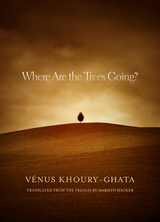 Where Are the Trees Going?
Vénus Khoury-Ghata Translated from the French by Marilyn Hacker
Northwestern University Press, 2014 Longlist finalist, 2015 PEN Award for Poetry in Translation
Bringing the work of acclaimed poet Venus Khoury-Ghata to a new generation of anglophone readers, renowned award-winning poet and translator Marilyn Hacker has rendered Khoury-Gata's highly praised collection Où vont les arbres? into unforgettable English verse. In it, Khoury-Ghata takes on perennial themes of womanhood, immigration, and cultural conflict. Characters take root in her memory as weathered trees and garden plants, lending grit and body to the imaginative collection. As bracing as the turn of seasons, Where Are the Trees Going? highlights a poet writing with renewed urgency and maturity.
Khoury-Ghata's collection has been translated into fifteen languages. In this special edition, Paris-resident Hacker has also included selections from Khoury-Ghata's short fiction collection La maison aux orties (The House of Nettles). The resulting interplay illuminates the poet’s contrasting and complementary drives toward surreal lyricism and stark narrative exposition.
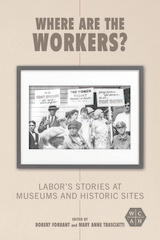 Where Are the Workers?: Labor's Stories at Museums and Historic Sites
Edited by Robert Forrant and Mary Anne Trasciatti
University of Illinois Press, 2022 The labor movement in the United States is a bulwark of democracy and a driving force for social and economic equality. Yet its stories remain largely unknown to Americans. Robert Forrant and Mary Anne Trasciatti edit a collection of essays focused on nationwide efforts to propel the history of labor and working people into mainstream narratives of US history. In Part One, the contributors concentrate on ways to collect and interpret worker-oriented history for public consumption. Part Two moves from National Park sites to murals to examine the writing and visual representation of labor history. Together, the essayists explore how place-based labor history initiatives promote understanding of past struggles, create awareness of present challenges, and support efforts to build power, expand democracy, and achieve justice for working people. A wide-ranging blueprint for change, Where Are the Workers? shows how working-class perspectives can expand our historical memory and inform and inspire contemporary activism. Contributors: Jim Beauchesne, Rebekah Bryer, Rebecca Bush, Conor Casey, Rachel Donaldson, Kathleen Flynn, Elijah Gaddis, Susan Grabski, Amanda Kay Gustin, Karen Lane, Rob Linné, Erik Loomis, Tom MacMillan, Lou Martin, Scott McLaughlin, Kristin O’Brassill-Kulfan, Karen Sieber, and Katrina Windon
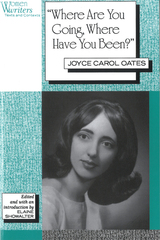 'Where Are You Going, Where Have You Been?': Joyce Carol Oates
Showalter, Elaine
Rutgers University Press, 1994 Joyce Carol Oates’s prize-winning story “Where Are You Going, Where Have You Been?” takes up troubling subjects that continue to occupy her in her fiction: the romantic longings and limited options of adolescent women; the tensions between mothers and daughters; the sexual victimization of women; and the American obsession with violence. Inspired by a magazine story about a serial killer, its remarkable portrait of the dreamy teenager Connie has made it a feminist classic. Connie’s life anticipates the emergence of American society from the social innocence of the fifties into the harsher contemporary realities of war, random violence, and crime. The story was the basis for the movie Smooth Talk, which became the subject of much feminist debate. This casebook includes an introduction by the editor, a chronology of Oates’s life, an authoritative text of “Where Are You Going, Where Have You Been,” an essay by Oates on Smooth Talk, the original Life article about the serial killer, ten critical essays (including two about the film), and a bibliography. The contributors are Brenda O. Daly, Christina Marsden Gillis, Don Moser, Tom Quirk, B. Ruby Rich, R.J.R. Rockwood, Larry Rubin, Gretchen Schulz, Marie Mitchell Oleson Urbanski, Joyce M. Wegs, Marilyn C. Wesley, and Joan D. Winslow.
 Where Bad Jobs Are Better: Retail Jobs Across Countries and Companies
Francoise Carre
Russell Sage Foundation, 2017 Retail is now the largest employer in the United States. For the most part, retail jobs are “bad jobs” characterized by low wages, unpredictable work schedules, and few opportunities for advancement. However, labor experts Françoise Carré and Chris Tilly show that these conditions are not inevitable. In Where Bad Jobs Are Better, they investigate retail work across different industries and seven countries to demonstrate that better retail jobs are not just possible, but already exist. By carefully analyzing the factors that lead to more desirable retail jobs, Where Bad Jobs Are Better charts a path to improving job quality for all low-wage jobs.
In surveying retail work across the United States, Carré and Tilly find that the majority of retail workers receive low pay and nearly half work part-time, which contributes to high turnover and low productivity. Jobs staffed predominantly by women, such as grocery store cashiers, pay even less than retail jobs in male-dominated fields, such as consumer electronics. Yet, when comparing these jobs to similar positions in Western Europe, Carré and Tilly find surprising differences. In France, though supermarket cashiers perform essentially the same work as cashiers in the United States, they receive higher pay, are mostly full-time, and experience lower turnover and higher productivity. And unlike the United States, where many retail employees are subject to unpredictable schedules, in Germany, retailers are required by law to provide their employees notice of work schedules six months in advance.
The authors show that disparities in job quality are largely the result of differing social norms and national institutions. For instance, weak labor regulations and the decline of unions in the United States have enabled retailers to cut labor costs aggressively in ways that depress wages and discourage full-time work. On the other hand, higher minimum wages, greater government regulation of work schedules, and stronger collective bargaining through unions and works councils have improved the quality of retail jobs in Europe.
As retail and service work continue to expand, American employers and policymakers will have to decide the extent to which these jobs will be good or bad. Where Bad Jobs Are Better shows how stronger rules and regulations can improve the lives of retail workers and boost the quality of low-wage jobs across the board.
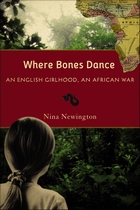 Where Bones Dance: An English Girlhood, An African War
Nina Newington
University of Wisconsin Press, 2007 In this stunning debut novel, a child dissects the darkness at the heart of her British diplomatic family. Living in Nigeria on the brink of civil war, Anna—also known as Jake—becomes blood brothers with Dave, the Korean American daughter of a C.I.A. operative. They do push-ups, collect pornography, and plot lives of unmarried freedom while around them a country disintegrates. Luscious, terrifying, and raw, Nigeria itself becomes a lesson in endurance, suffering, love.
Stories are layered upon stories: Anna's grandmother tells stories about life as a white woman on the Gold Coast; the clairvoyant and closeted "Aunt" Elsie gives Anna a story of transformation to hold onto in the coming tumult of adolescence. Yet Where Bones Dance also spirals down to the stories that are not told—sexual abuse, the myth of benign colonialism, the chaos of postcolonial Africa. Sensual and fantastical by turns, this moving, funny, immensely readable book delivers an understanding of the interplay of sexuality, gender, race, and war that is sophisticated beyond the years of its intrepid narrator. Winner, Georges Bugnet Award for Novel, Alberta Literary Awards, Writers Guild of Alberta Best Books for General Audiences, selected by the American Association of School Librarians and the Public Library Association
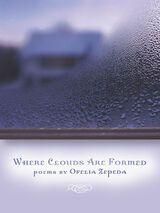 Where Clouds Are Formed
Ofelia Zepeda
University of Arizona Press, 2008 Ofelia Zepeda is a Native American poet who possesses a kind of double vision. She sees the contemporary world through her own highly observant eyes and, at the same time, through the eyes of her Tohono O’odham ancestors. Seeing this way infuses her poetry with a resonance and depth that makes it a delight to read—and re-read.
Zepeda is as clear-eyed about the past as she is about the present. She recalls waiting for the school bus on a cold morning inside her father’s truck, listening to the sounds of the engine, the windshield wipers, and the “soft rain on the hood.” She remembers celebrating Mass on the “cold dirt floor of the Winter Solstice.” In the present, she sees both the frustration and the humor in a woman she observes trying to eat pancakes with one hand while her other resides in a cast: “Watching her, I realize eating pancakes is a two-handed job.”
Whatever she sees, she filters through her second set of eyes, which keep the past always present. She tells of traveling to Waw Giwulig, the most sacred mountain of the Tohono O’odham, to ask for blessings—and forgiveness. She writes that one should always bring music to the mountains, “so they are generous with the summer rains.” And, still, “the scent of burning wood / holds the strongest memory. / Mesquite, cedar, piñon, juniper, . . . / we catch the scent of burning wood; / we are brought home.” It is a joy to see the world afresh through her eyes.
 Where Currents Meet: Frontiers of Memory in Post-Soviet Fiction of Kharkiv, Ukraine
Tanya Zaharchenko
Central European University Press, 2016 Where Currents Meet, Tanya Zaharchenko’s path-breaking study of literature and cultural memory, moves decisively beyond the simplistic view of a post-Soviet Ukraine divided between east and west. It positions the Ukrainian and Russian components of cultural experience in the country’s east as elements of a complex continuum. Combining insights from memory studies and border studies, Zaharchenko analyzes a generation of younger riters in the city of Kharkiv—a “doubletake generation” that came of age at the time of the Soviet Union’s collapse and now revisits this experience through fiction. In the works of Serhiy Zhadan, Andreĭ Krasniashchikh, Yuri Tsaplin, Oleh Kotsarev, and others the author reveals how borderlands and frontiers, both geographical and conceptual, acquire zonal qualities of their own as these writers navigate the historical legacy they have inherited.
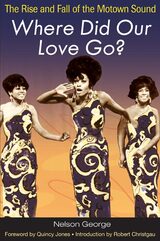 Where Did Our Love Go?: The Rise and Fall of the Motown Sound
Nelson George. Foreword by Quincy Jones, Introduction by Robert Christgau.
University of Illinois Press, 2007 Nelson George's chronicle of Motown Records' rise and fall remains a classic account of an essential American music company and its dynamic founder Berry Gordy Jr. Gordy's uncanny instinct for finding extraordinary talent--from performers and musicians to songwriters and producers—packed the label's roster with a who's who of historic artists and hitmakers. Here is the story of the Supremes and superstar Diana Ross, of the towering solo acts Marvin Gaye and Stevie Wonder, of vocal groups led by the Temptations and Four Tops, of the phenomenal Jackson Five and Michael Jackson, and of singer/songwriter and Motown executive Smokey Robinson. Up front about Gordy's manipulative and complex relationships with his artists, George reveals the inner workings of how Motown conducted its business. He also offers portraits of the Funk Brothers and other musicians who played the unforgettable songs. George's preface shows how Motown influenced a later generation of young artists and music moguls, including R. Kelly, D'Angelo, Sean Combs, and Russell Simmons.
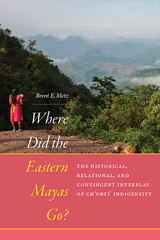 Where Did the Eastern Mayas Go?: The Historical, Relational, and Contingent Interplay of Ch’orti’ Indigeneity
by Brent E. Metz
University Press of Colorado, 2022 Copublished with the Institute for Mesoamerican Studies, University of Albany In Where Did the Eastern Mayas Go? Brent E. Metz explores the complicated issue of who is Indigenous by focusing on the sociohistorical transformations over the past two millennia of the population currently known as the Ch’orti’ Maya. Epigraphers agree that the language of elite writers in Classic Maya civilization was Proto-Ch’olan, the precursor of the Maya languages Ch’orti’, Ch’olti’, Ch’ol, and Chontal. When the Spanish invaded in the early 1500s, the eastern half of this area was dominated by people speaking various dialects of Ch’olti’ and closely related Apay (Ch’orti’), but by the end of the colonial period (1524–1821) only a few pockets of Ch’orti’ speakers remained.
From 2003 to 2018 Metz partnered with Indigenous leaders to conduct a historical and ethnographic survey of Ch’orti’ Maya identity in what was once the eastern side of the Classic period lowland Maya region and colonial period Ch’orti’-speaking region of eastern Guatemala, western Honduras, and northwestern El Salvador. Today only 15,000 Ch’orti’ speakers remain, concentrated in two municipalities in eastern Guatemala, but since the 1990s nearly 100,000 impoverished farmers have identified as Ch’orti’ in thirteen Guatemalan and Honduran municipalities, with signs of Indigenous revitalization in several Salvadoran municipalities as well. Indigenous movements have raised the ethnic consciousness of many non-Ch’orti’-speaking semi-subsistence farmers, or campesinos. The region’s inhabitants employ diverse measures to assess identity, referencing language, history, traditions, rurality, “blood,” lineage, discrimination, and more.
Where Did the Eastern Mayas Go? approaches Indigenous identity as being grounded in historical processes, contemporary politics, and distinctive senses of place. The book is an engaged, activist ethnography not on but, rather, in collaboration with a marginalized population that will be of interest to scholars of the eastern lowland Maya region, indigeneity generally, and ethnographic experimentation.
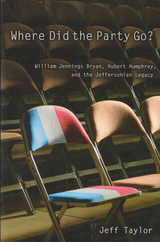 Where Did the Party Go?: William Jennings Bryan, Hubert Humphrey, and the Jeffersonian Legacy
Jeff Taylor
University of Missouri Press, 2006 It doesn’t take a pundit to recognize that the Democratic Party has changed. With frustrating losses in the national elections of 2000 and 2004 and the erosion of its traditional base, the party of Jefferson and Jackson has become something neither would recognize. In this intriguing book, Jeff Taylor looks beyond the shortcomings of individual candidates to focus on the party’s real problem: its philosophical underpinnings have changed in ways that turn off many Americans. Rank-and-file party members may still hold to traditional views, but Taylor argues that those who finance, manage, and represent the party at the national level have become nothing less than Hamiltonian elitists—a stance that flies in the face of the party’s bedrock Jeffersonian principles. Where Did the Party Go? is a prodigious work of scholarship that converts extensive research into an accessible book. Taylor offers up a unique twelve-point model of Jefferson’s thought—as relevant to our time as to his—and uses it to appraise competing views of liberalism in the party during two key eras. Bypassing the well-worn assessments of high-profile Democratic presidents, he shows instead how liberalism from 1885 to 1925 was distinctly Jeffersonian as exemplified by the populism of William Jennings Bryan, while from 1938 to 1978 it became largely elitist under national leaders such as Hubert Humphrey who embraced a centralized state and economy, as well as imperial intervention abroad. In the first book to look closely at the ideologies of these two midwestern liberals, Taylor chronicles Bryan’s battles with the conservative wing of the party—putting today’s conflicts in sharp historical perspective—and then tells how Humphrey followed those who rejected Jeffersonian principles. By demonstrating how Jefferson’s legacy has gradually weakened, Taylor clearly shows why the party has lost its place in Middle America and how its transformation has led to widespread confusion. His provocative look at the post-Humphrey era considers why so many of today’s voters on both the Left and the Right agree on issues such as economic policy, foreign relations, and political reform—united against elitists of the Center while rarely recognizing their common kinship in Jeffersonian ideals. If party leaders have wondered where their traditional supporters have gone, they might well consider that those very voters have asked what became of the party they once knew. Taylor’s book forces many to question where the party of Jefferson has gone . . . and whether it can ever come back.
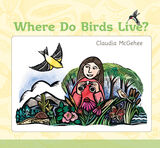 Where Do Birds Live?
Claudia McGehee
University of Iowa Press, 2010 Claudia McGehee brought the glory of the prairie to life in A Tallgrass Prairie Alphabet and explored the wonders of the woodlands in A Woodland Counting Book. Now this award-winning artist focuses on the birds of the United States, bringing children and their parents closer to the habitats and lives of birds from the Pacific coast to open rangeland to the cityscape of Manhattan. McGehee introduces us to fourteen representative habitats, giving each its own double-page spread that features a signature bird. She devotes one page of each spread to depicting the bird in the full complexity of its complete habitat—at home in its environment with other animal companions—and the other page describes and illustrates its nesting, feeding, soaring, and paddling lifeways. Highlighting ideas for preserving and protecting each habitat and its inhabitants, McGehee also provides ways that children can make their own backyards safe havens for birdlife while they learn to enjoy the magic of birdwatching. Claudia’s birds include bobolinks on the tallgrass prairie, common ravens in the Pacific rainforest, brown pelicans on barrier islands in the Gulf of Mexico, scarlet tanagers in the northwoods, red-cockaded woodpeckers in longleaf pine forests, greater roadrunners in the southwestern desert, and roseate spoonbills in red mangrove forests. Her energizing, engaging illustrations create worlds of vibrant color that ring with the calls and songs of birds across the panorama of American landscapes.
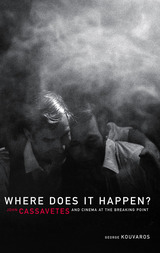 Where Does It Happen: John Cassavetes And Cinema At The Breaking Point
George Kouvaros
University of Minnesota Press, 2004 “A good movie,” John Cassavetes has remarked, “will ask you questions you don’t already know the answers to.” And in his films, Cassavetes is as good as his word. Taking up the radical question that Cassavetes’s films consistently pose—specifically, where is the line between actor and character, fiction and reality, film and life?—George Kouvaros reveals the unique and illuminating position that Cassavetes’s work occupies at the intersection of filmmaking and film theory.Central to any understanding of Cassavetes’s achievement is the issue of performance. Looking at the work of Gena Rowlands, Ben Gazzara, and Cassavetes himself in films such as Faces, A Woman under the Influence, and The Killing of a Chinese Bookie, Kouvaros shows how performative instances—gestures, words, or glances—open up intimations of dramas belonging neither strictly to these films nor to the everyday worlds in which they are immersed. A major reassessment of the filmmaker as a formal experimenter, Where Does It Happen? gives Cassavetes his due as a filmmaker whose critical place in the modern cinema is only now becoming clear. George Kouvaros is senior lecturer in the School of Theatre, Film, and Dance at the University of New South Wales, Australia.
 Where FDI Goes in Decentralized Authoritarian Countries: The Politics of Taiwanese Site Selection for Investment in Mainland China
Kelan Lu
University of Michigan Press, 2023 Among all the decentralized authoritarian countries, China is distinctive not only because of its emergence as one of the largest foreign direct investment (FDI) recipient countries with one of the highest levels of fiscal decentralization, but also because of the combination of its fiscal decentralization and the cadre promotion system as incentive institutions for attracting FDI inflows. China is an important case to empirically investigate the impact of fiscal autonomy on adversarial investment because it has become the largest investment destination of its long-term adversary, Taiwan, with Taiwanese FDI being among the largest FDI in mainland China. Given the special role played by local Chinese governments in attracting and hosting Taiwanese FDI, it is important to study the differences between where Taiwanese FDI and other FDI goes.
Given the uniqueness of the China case and that of Taiwanese investment in mainland China, this book explores the following questions. What determines where FDI goes in authoritarian countries like China? Fiscal decentralization has been argued to be a driving force of skyrocketing FDI inflows in China due to its impact on local governments’ incentives. However, is the impact of fiscal autonomy on FDI monolithic with the dynamically changing levels of FDI inflows at the lower administrative levels in China, especially with its special cadre management system? Does the impact of fiscal decentralization on FDI strengthen or weaken or stay the same when attracting FDI inflows from adversarial states? And what are the implications of such adversarial investment—especially as it diffuses from coastal cities to the interior regions, or from key cities to peripheral regions—of decentralized authoritarian countries targeted by this investment?
 Where Have All the Voters Gone?
Martin P. Wattenberg
Harvard University Press, 2002 As the confusion over the ballots in Florida in 2000 demonstrated, American elections are complex and anything but user-friendly. This phenomenon is by no means new, but with the weakening of political parties in recent decades and the rise of candidate-centered politics, the high level of complexity has become ever more difficult for many citizens to navigate. Thus the combination of complex elections and the steady decline of the party system has led to a decline in voter turnout.
In this timely book, Martin Wattenberg confronts the question of what low participation rates mean for democracy. At the individual level, turnout decline has been highest among the types of people who most need to have electoral decisions simplified for them through a strong party system--those with the least education, political knowledge, and life experience.
As Wattenberg shows, rather than lamenting how many Americans fail to exercise their democratic rights, we should be impressed with how many arrive at the polls in spite of a political system that asks more of a typical person than is reasonable. Meanwhile, we must find ways to make the American electoral process more user-friendly.
Where Heaven Sinks: Poems
María Esquinca
University of Nevada Press, 2025 2024 Andrés Montoya Poetry Prize Winner!
María Esquinca delivers a searing collection of poems that traverse borders—both physical and emotional. Set against the backdrop of El Paso and Ciudad Juárez, these experimental works weave fragmented verses, striking imagery, and bold typography to confront the brutal realities of immigration and identity. With the precision of a journalist and the heart of a storyteller, Esquinca exposes injustice while celebrating resilience and hope. Her work is shaped by the intersection of cultures, histories, and experiences found in the US-Mexico borderlands. Each poem is a tribute to those who have endured and a call to challenge the systems that oppress. Where Heaven Sinks is a love letter, a memorial for those lost, and a testament to the transformative power of language.
 Where Histories Reside: India as Filmed Space
Priya Jaikumar
Duke University Press, 2019 In Where Histories Reside Priya Jaikumar examines eight decades of films shot on location in India to show how attending to filmed space reveals alternative timelines and histories of cinema. In this bold “spatial” film historiography, Jaikumar outlines factors that shape India's filmed space, from state bureaucracies and commercial infrastructures to aesthetic styles and neoliberal policies. Whether discussing how educational shorts from Britain and India transform natural landscapes into instructional lessons or how Jean Renoir’s The River (1951) presents a universal human condition through the particularities of place, Jaikumar demonstrates that the history of filming a location has always been a history of competing assumptions, experiences, practices, and representational regimes. In so doing, she reveals that addressing the persistent question of “what is cinema?” must account for an aesthetics and politics of space.
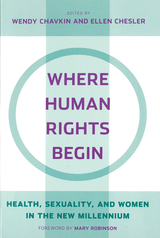 Where Human Rights Begin
Edited by Wendy Chavkin and Ellen Chesler
Rutgers University Press, 2005 More than a decade ago, three landmark world conferences placed the human rights of women on the international agenda. The first, in Vienna, officially extended the definition of human rights to include a woman’s right to self-determination and equality. A year later, in Cairo, this concept was elaborated to deal explicitly with issues of sexuality and procreation. Subsequently, at a conference in Beijing, the international community committed to a wide range of practical interventions to advance women’s sexual, social, political, and economic rights.
Despite these accomplishments, we find ourselves at an ever more difficult juncture in the struggle to fully realize women’s rights as human rights. Complications, such as terrorism and the “war” against it, the HIV/AIDS pandemic, the incursion of religious fundamentalism into governments, and the U.S. government’s retreat from the international agenda on sexual and reproductive rights have raised questions about the direction of policy implementations and have prevented straightforward progress.
This timely collection brings together eight wide-reaching and provocative essays that examine the practical and theoretical issues of sexual and reproductive health policy and implementation.
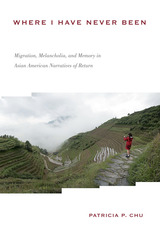 Where I Have Never Been: Migration, Melancholia, and Memory in Asian American Narratives of Return
Patricia P. Chu
Temple University Press, 2019 In researching accounts of diasporic Chinese offspring who returned to their parents’ ancestral country, author Patricia Chu learned that she was not alone in the experience of growing up in America with an abstract affinity to an ancestral homeland and community. The bittersweet emotions she had are shared in Asian American literature that depicts migration-related melancholia, contests official histories, and portrays Asian American families as flexible and transpacific. Where I Have Never Been explores the tropes of return, tracing both literal return visits by Asian emigrants and symbolic “returns”: first visits by diasporic offspring. Chu argues that these Asian American narratives seek to remedy widely held anxieties about cultural loss and the erasure of personal and family histories from public memory. In fiction, memoirs, and personal essays, the writers of return narratives—including novelists Lisa See, May-lee Chai, Lydia Minatoya, and Ruth Ozeki, and best-selling author Denise Chong, diplomat Yung Wing, scholar Winberg Chai, essayist Josephine Khu, and many others—register and respond to personal and family losses through acts of remembrance and countermemory.
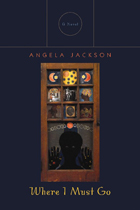 Where I Must Go: A Novel
Angela Jackson
Northwestern University Press, 2009 Lyrical, penetrating, and highly charged, this novel displays a delicately tuned sense of difference and belonging. Poet Angela Jackson brings her superb sense of language and of human possibility to the story of young Magdalena Grace, whose narration takes readers through both privilege and privation at the time of the American civil rights movement. The novel moves from the privileged yet racially exclusive atmosphere of the fictional Eden University to the black neighborhoods of a Midwestern city and to ancestral Mississippi. Magdalena’s story includes a wide range of characters—black and white, male and female, favored with opportunity or denied it, the young in love and elders wise with hope. With and through each other, they struggle to understand the history they are living and making. With dazzling perceptiveness, Jackson’s narrator Magdalena tells of the complex interactions of people around her who embody the personal and the political at a crucial moment in their own lives and in the making of America.
 Where Is Ana Mendieta?: Identity, Performativity, and Exile
Jane Blocker
Duke University Press, 1999 Ana Mendieta, a Cuban-born artist who lived in exile in the United States, was one of the most provocative and complex personalities of the 1970s’ artworld. In Where Is Ana Mendieta? art historian Jane Blocker provides an in-depth critical analysis of Mendieta’s diverse body of work. Although her untimely death in 1985 remains shrouded in controversy, her life and artistic legacy provide a unique vantage point from which to consider the history of performance art, installation, and earth works, as well as feminism, multiculturalism, and postmodernism.
Taken from banners carried in a 1992 protest outside the Guggenheim Museum in New York, the title phrase “Where is Ana Mendieta?” evokes not only the suspicious and tragic circumstances surrounding her death but also the conspicuous absence of women artists from high-profile exhibitions. Drawing on the work of such theorists as Judith Butler, Joseph Roach, Edward Said, and Homi Bhabha, Blocker discusses the power of Mendieta’s earth-and-body art to alter, unsettle, and broaden the terms of identity itself. She shows how Mendieta used exile as a discursive position from which to disrupt dominant categories, analyzing as well Mendieta’s use of mythology and anthropology, the ephemeral nature of her media, and the debates over her ethnic, gender, and national identities.
As the first major critical examination of this enigmatic artist’s work, Where Is Ana Mendieta? will interest a broad audience, particularly those involved with the production, criticism, theory, and history of contemporary art.
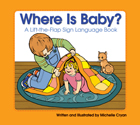 Where Is Baby?: A Lift-the-Flap Sign Language Book
Michelle Cryan
Gallaudet University Press, 2007 Here’s a fun, interactive way to teach youngsters ages 1- 4 basic American Sign Language signs. Where Is Baby? A Lift-the-Flap Sign Language Book features 12 basic questions in ASL with English translations. Little ones can find the answer for each question by lifting the flap on the opposite page to reveal a charming, full-color illustration. The questions and answers engage children with everyday subjects of high interest to them: Where is the airplane, train, bug, cat, elephant, shoe, pizza, Mama, Daddy, sister, and of course, Baby.
By introducing young children to sign language, Where Is Baby? can help them strengthen their vocabulary, grammar, and other language skills while also allowing them to communicate their needs and feelings at an earlier age. This sturdy book offers an enjoyable, instructive way for parents, teachers, and other caregivers to begin reading and signing together with children at a wonderful age for learning.
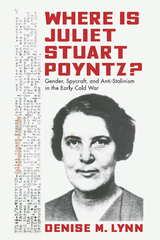 Where Is Juliet Stuart Poyntz?: Gender, Spycraft, and Anti-Stalinism in the Early Cold War
Denise Lynn
University of Massachusetts Press, 2021 On a sweltering June evening in 1937, American Juliet Stuart Poyntz left her boardinghouse in Manhattan and walked toward Central Park, three short blocks away. She was never seen or heard from again. Seven months passed before a formal missing person's report was made, since Poyntz worked for the Soviet Secret Police and her friends (many of whom were anti-Stalinist radicals in the United States) were scared to alert authorities. Her disappearance coincided with Josef Stalin's purges of his political enemies in the Soviet Union and it was feared that Poyntz was a casualty of Soviet brutality.
In Where Is Juliet Stuart Poyntz?, Denise M. Lynn argues that Poyntz's sudden disappearance was the final straw for many on the American political left, who then abandoned Marxism and began to embrace anti-communism. In the years to follow, the left crafted narratives of her disappearance that became central to the Cold War. While scholars have thoroughly analyzed the influence of the political right in the anti-communism of this era, this captivating and compelling study is unique in exploring the influence of the political left.
 Where Is Knowing Going?: The Horizons of the Knowing Subject
John C. Haughey, SJ
Georgetown University Press, 2009 Catholic institutions of higher learning are at a crossroads: How can they remain true to their roots while recognizing that many of their administrations, faculties, and student bodies have little connection with the tradition? How can these institutions remain competitive while maintaining a relationship to the Church? During the past several years Catholic theologian John C. Haughey, SJ, has conducted groundbreaking research on these questions. He has done this in tandem with a team of Catholic scholars from around the United States. Haughey has also conducted numerous workshops with faculty at a dozen Catholic colleges and universities to learn firsthand about their research and teaching aspirations. Those relationships and conversations provide the foundation for this book’s many insights. In Where Is Knowing Going? Haughey explores what constitutes the Catholic identity of Catholic colleges and universities. Going beyond a doctrinal understanding of Catholic identity to one that engages and is engaged by the intellectual tradition of Catholicism, Haughey does not find that the issue of Catholic identity is adequately dealt with by marketing the distinctive identities of institutions in terms of their founding religious orders or saints. He provides a sure-handed process whereby the pursuits of individual faculty can be better aligned with the formal mission of the institution.
 Where Light Comes and Goes: A Novel
Sandra Cavallo Miller
University of Nevada Press, 2020 Book 2 in the Dr. Abby Wilmore Series
Where Light Comes and Goes brings back Dr. Abby Wilmore, the young family physician who was the protagonist of Miller’s first novel, The Color of Rock. Abby has accepted the directorship of a summer clinic in Yellowstone National Park where she hopes to expand her medical skills. She arrives to find herself working above the increasingly restless Yellowstone supervolcano, treating visitors, staff, and locals, all while evading the advances of a lecherous concession manager and maintaining a long-distance relationship with her partner who stays at the Grand Canyon Clinic. As tremors in the park escalate and the lakes seethe with bubbling gases, Abby learns that some-one is mysteriously killing the bison.
What follows is an engrossing mystery unfolding in a spectacular setting with rich, quirky, and endearing characters and unexpected plot turns. While an overworked Abby makes new friends among her clinic staff and patients, tension builds as the volcano seems to be moving closer to a major eruption and the bison killings become more frequent. Soon, Abby finds herself in mortal danger as the story races to a thrilling and unexpected conclusion.
Sandra Cavallo Miller demonstrated in The Color of Rock that she is a gifted storyteller. Where Light Comes and Goes deftly combines a gripping mystery set in the accurately depicted routine of a busy medical practice amid the wonders of Yellowstone’s magnificent scenery and wildlife. This is entertaining reading at its best.
 Where Love Leaves Us
Renee Manfredi
University of Iowa Press, 1994 These nine superbly crafted stories, set primarily in Pittsburgh's Italian American neighborhoods, concentrate on families, on the poignant nature of father-daughter relationships, and on the fate of those who are refugees from their physical or spiritual communities. “Love is born only out of wreckage,” Manfredi's characters declare bravely. Her vigorous families are both the wrecking crews and the architects of the human foundation. In “The Projectionist,” a displaced Sicilian is forced to confront the family he lost in war-torn Italy at the same time that his current family is disintegrating; his disillusionment with the American dream overwhelms him when his oldest daughter exchanges Old World values for the hippie-inspired climate of permissiveness. Ten-year-old Elena, in “Bocci,” takes the teachings of her strict Catholic upbringing to the extreme, and it is her devoutness that is cruelly used against her when violence compels her to reject becoming “a nun or a saint.” The father in “Tall Pittsburgh” sends his daughter to charm school at Sears, then enters her in a beauty pageant for tall women. Distraught in spite of her second-place win, he begins to relive his grief over the death of his beautiful wife. Many of Manfredi's vital, luminous characters are outsiders, dispossessed by their inability to bridge the gap between the self and others, forced to deal with loss through death and lapse of faith, yet always managing to survive despite their place on the bewildering margins. Manfredi reveals an affirmation, finally, that hope is a permanent possession of every human spirit.
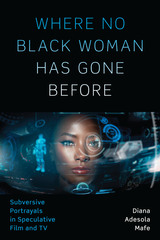 Where No Black Woman Has Gone Before: Subversive Portrayals in Speculative Film and TV
By Diana Adesola Mafe
University of Texas Press, 2018 When Lieutenant Uhura took her place on the bridge of the Starship Enterprise on Star Trek, the actress Nichelle Nichols went where no African American woman had ever gone before. Yet several decades passed before many other black women began playing significant roles in speculative (i.e., science fiction, fantasy, and horror) film and television—a troubling omission, given that these genres offer significant opportunities for reinventing social constructs such as race, gender, and class. Challenging cinema’s history of stereotyping or erasing black women on-screen, Where No Black Woman Has Gone Before showcases twenty-first-century examples that portray them as central figures of action and agency. Writing for fans as well as scholars, Diana Adesola Mafe looks at representations of black womanhood and girlhood in American and British speculative film and television, including 28 Days Later, AVP: Alien vs. Predator, Children of Men, Beasts of the Southern Wild, Firefly, and Doctor Who: Series 3. Each of these has a subversive black female character in its main cast, and Mafe draws on critical race, postcolonial, and gender theories to explore each film and show, placing the black female characters at the center of the analysis and demonstrating their agency. The first full study of black female characters in speculative film and television, Where No Black Woman Has Gone Before shows why heroines such as Lex in AVP and Zoë in Firefly are inspiring a generation of fans, just as Uhura did.
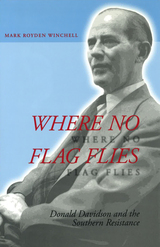 Where No Flag Flies: Donald Davidson and the Southern Resistance
Mark Royden Winchell
University of Missouri Press, 2000
Donald Davidson (1893-1968) may well be the most unjustifiably neglected figure in twentieth-century southern literature. One of the most important poets of the Fugitive movement, he also produced a substantial body of literary criticism, the libretto for an American folk opera, a widely used composition textbook, and the recently discovered novel The Big Ballad Jamboree. As a social and political activist, Davidson had significant impact on conservative thought in this century, imfluencing important scholars from Cleanth Brooks to M. E. Bradford.
Despite these accomplishments, Donald Davidson has received little critical attention from either the literary or the southern scholarly community. Where No Flag Flies is Mark Royden Winchell's redress of this critical disservice. A comprehensive intellectual biography of Davidson, this seminal work offers a complete narrative of Davidson's life with all of its triumphs and losses, frustrations and fulfillments.
Winchell provides the reader with more than a simple study of a man and his achievements; he paints a complete portrait of the times in which Davidson published, from the 1930s to the early 1960s. Davidson was more directly involved in political and social activities than most writers of his generation, and Winchell provides the context, both literary and historical, in which Davidson's opinions and works developed. At the same time, Winchell offers detailed evaluations of Davidson's poetry, fiction, historical writings, and essays.
Drawing upon a wealth of previously unpublished archival material, including Davidson's letters and diary, Where No Flag Flies provides unique access to one of the most original minds of the twentieth-century South. Donald Davidson may not have achieved the recognition he deserved, but this remarkable biography finally makes it possible for a considerable literary audience to discover his true achievement.
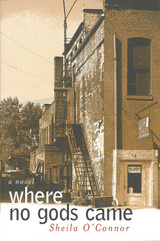 Where No Gods Came
Sheila O'Connor
University of Michigan Press, 2010 Author Sheila O'Connor tells the compelling story of Faina McCoy, a young girl caught in a perilous scheme of elaborate lies created for her own harrowing system of survival. Enmeshed in a tangled family web, Faina is abruptly uprooted against her will from her father and finds herself half a continent away on the doorstep of a mother who abandoned her years before—but who can't live without Faina now. Alone, persecuted, and exploited, Faina must fend for herself as she searches for love and answers, navigating the streets of a strange city and forging bonds of feeling with liars and outlaws.
Where No Gods Came is a powerful look at assimilation and resilience and the sacrifices we all make to adapt. It's a potent reminder, too, of the tenacity and courage required of fragile families who endure on the edge. Faina McCoy triumphs as an unlikely—and unforgettable—heroine, a stubborn child who will survive to tell the tale.
Where No One Should Live: A Novel
Sandra Cavallo Miller
University of Nevada Press, 2021 Public health physician Dr. Maya Summer faces a myriad of medical challenges as she comes to grips with her uneasy past. Helped by faculty physician Alex Reddish, who withstands his own identity trials, she uncovers the grave truth behind a series of illnesses as she and Reddish draw close to one another.
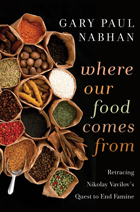 Where Our Food Comes From: Retracing Nikolay Vavilov's Quest to End Famine
Gary Paul Nabhan
Island Press, 2011 The future of our food depends on tiny seeds in orchards and fields the world over. In 1943, one of the first to recognize this fact, the great botanist Nikolay Vavilov, lay dying of starvation in a Soviet prison. But in the years before Stalin jailed him as a scapegoat for the country’s famines, Vavilov had traveled over five continents, collecting hundreds of thousands of seeds in an effort to outline the ancient centers of agricultural diversity and guard against widespread hunger. Now, another remarkable scientist—and vivid storyteller—has retraced his footsteps.
In Where Our Food Comes From, Gary Paul Nabhan weaves together Vavilov’s extraordinary story with his own expeditions to Earth’s richest agricultural landscapes and the cultures that tend them. Retracing Vavilov’s path from Mexico and the Colombian Amazon to the glaciers of the Pamirs in Tajikistan, he draws a vibrant portrait of changes that have occurred since Vavilov’s time and why they matter.
In his travels, Nabhan shows how climate change, free trade policies, genetic engineering, and loss of traditional knowledge are threatening our food supply. Through discussions with local farmers, visits to local outdoor markets, and comparison of his own observations in eleven countries to those recorded in Vavilov’s journals and photos, Nabhan reveals just how much diversity has
already been lost. But he also shows what resilient farmers and scientists in many regions are doing to save the remaining living riches of our world.
It is a cruel irony that Vavilov, a man who spent his life working to foster nutrition, ultimately died from lack of it. In telling his story, Where Our Food Comes From brings to life the intricate relationships among culture, politics, the land, and the future of the world’s food.
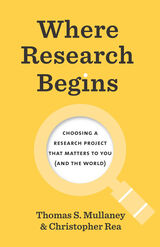 Where Research Begins: Choosing a Research Project That Matters to You (and the World)
Thomas S. Mullaney and Christopher Rea
University of Chicago Press, 2022 Plenty of books tell you how to do research. This book helps you figure out WHAT to research in the first place, and why it matters. The hardest part of research isn't answering a question. It's knowing what to do before you know what your question is. Where Research Begins tackles the two challenges every researcher faces with every new project: How do I find a compelling problem to investigate—one that truly matters to me, deeply and personally? How do I then design my research project so that the results will matter to anyone else? This book will help you start your new research project the right way for you with a series of simple yet ingenious exercises. Written in a conversational style and packed with real-world examples, this easy-to-follow workbook offers an engaging guide to finding research inspiration within yourself, and in the broader world of ideas. Read this book if you (or your students): - have difficulty choosing a research topic
- know your topic, but are unsure how to turn it into a research project
- feel intimidated by or unqualified to do research
- worry that you’re asking the wrong questions about your research topic
- have plenty of good ideas, but aren’t sure which one to commit to
- feel like your research topic was imposed by someone else
- want to learn new ways to think about how to do research.
Under the expert guidance of award-winning researchers Thomas S. Mullaney and Christopher Rea, you will find yourself on the path to a compelling and meaningful research project, one that matters to you—and the world.
 Where Rivers Meet the Sea: The Political Ecology of Water
Stephanie Kane
Temple University Press, 2012 Where fresh water appears to be abundant and generally accessible, chronic pollution may be relatively ignored as a public issue. Yet there are those whose lives, livelihoods, and traditions are touched directly by the destructive albeit essential relationship between humans and water. In her passionate and persuasively argued Where Rivers Meet the Sea, Stephanie Kane compares two cities and nations—Salvador, Brazil and Buenos Aires, Argentina—as she tells the stories of those who organize in the streets, petition the courts, and challenge their governments to implement and enforce existing laws designed to protect springs, lakes, harbors, and rivers. Illuminating the complex and distinctive cultural forces in the South Atlantic that shape conflicts and collaborations pertaining to particular waterfront settings, Kane shows the dilemmas, inventiveness, and persistence that provide the foundation for environmental and social justice movements writ large.
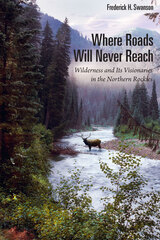 Where Roads Will Never Reach: Wilderness and Its Visionaries in the Northern Rockies
Frederick H. Swanson
University of Utah Press, 2015 The Rocky Mountains of Idaho and Montana are home to some of the most important remaining American wilderness areas, preserved because of citizens who stood against massive development schemes that would have diminished important wildlife habitat and the abiding sense of remoteness found in such places. Where Roads Will Never Reach tells the stories of hunters, anglers, outfitters, scientists, and other concerned citizens who devoted themselves to protecting remnant wild lands and ecosystems in the Northern Rockies. Environmental historian Frederick Swanson argues that their heartfelt, dedicated work helped boost the American wilderness movement to its current prominence. Based on newly available archival sources and interviews with many of the participants, this groundbreaking study explores for the first time the grassroots campaigns that yielded some of the largest designated wilderness areas in America.
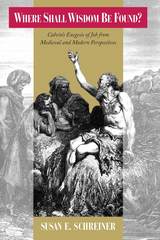 Where Shall Wisdom be Found?: Calvin's Exegesis of Job from Medieval and Modern Perspectives
Susan E. Schreiner
University of Chicago Press, 1994 Through countless retellings, from the Talmud to Archibald MacLeish and since, the story of Job has become a fixture in the cultural imagination of the West. In this study, Susan E. Schreiner analyzes interpretations of the Book of Job by Gregory the Great, Maimonides, Thomas Aquinas, and particularly John Calvin. Reading Calvin's interpretation of Job against the background of his most important medieval predecessors, Schreiner shows how central Job is to Calvin's struggles with issues of creation, the problem of evil, the meaning of history, and the doctrine of providence.
For Calvin and his predecessors, Schreiner argues, the concept of intellectual perception is the key to an understanding of Job. The texts she examines constantly raise questions about the human capacity for knowledge: What can the sufferer who stands within history perceive about the self, God, and reality? Can humans truly perceive the workings of providence in their personal lives or in the tumult of history? Are evil and injustice a reality that we must confront before finding wisdom?
In her final chapter, Schreiner turns to the wide array of twentieth-century interpretations of Job, including modern biblical commentaries, the work of Carl Jung, and literary transfigurations by Wells, MacLeish, Wiesel, and Kafka. The result is a compelling demonstration of how the history of exegesis can yield vital insights for contemporary culture.
Where She Always Was
Frannie Lindsay
Utah State University Press, 2005 In his Foreword, McClatchy speaks of the musical qualities of Lindsay's work: "It is impossible, reading her poems, not to hear a musical hand at work. This is not just a matter of delicacy or virtuosity. It is also a matter of knowing how to phrase a line... Lindsay moves from detail to trope with utter poise, with an intuitive sense of what to sustain or emphasize. Her language is crisp. I can pick a stanza at random... and praise its plosive energy, its modulated vowels, its variety and ?lan... Where She Always Was allows us . . . the rare gratification of watching a poet-wonderfully accomplished, quietly persuasive-look back on a lifetime's worth of emotions and calculate their bearing on the present. In her craft is the truth."
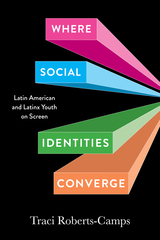 Where Social Identities Converge: Latin American and Latinx Youth on Screen
Traci Roberts-Camps
Vanderbilt University Press, 2024 Where Social Identities Converge examines adolescent girlhood as a metaphorical site in Latin American and Latinx film. Author Traci Roberts‑Camps analyzes the work of a series of female directors from Argentina, Ecuador, Mexico, Peru, Venezuela, and the United States to understand how female adolescence and young adulthood are represented in film. She argues that using an intersectional lens reveals how these directors present the image of adolescent girlhood as a site of early trauma that presages women’s lived experiences with institutional, interconnected forms of oppression. The book thus considers intersectionality through young female protagonists who represent identity struggles in Latin America and US Latinx communities. In doing so, it examines a range of genres, such as fictional film, documentary, and television miniseries. Each chapter includes a close reading of specific scenes that offer insight into the young female protagonists’ multiple identity markers and a continuous comparison between chapters.
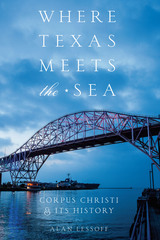 Where Texas Meets the Sea: Corpus Christi and Its History
By Alan Lessoff
University of Texas Press, 2019 A favorite destination of visitors to the Texas coast, Corpus Christi is a midsize city that manages to be both cosmopolitan and provincial, networked and local. It is an indispensable provider of urban services to South Texas, as well as a port of international significance. Its industries and military bases and, increasingly, its coastal research institutes give it a range of connections throughout North America. Despite these advantages, however, Corpus Christi has never made it into the first rank of Texas cities, and a keen self-consciousness about the city’s subordinate position has driven debates over Corpus’s identity and prospects for decades. In this masterful urban history—a study that will reshape the way that Texans look at all their cities—Alan Lessoff analyzes Corpus Christi’s place within Texas, the American Southwest, the western Gulf of Mexico, and the U.S.-Mexican borderlands from the city’s founding in 1839 to the present. He portrays Corpus as a place where westward Anglo expansion overwhelmed the Hispanic settlement process from the south, leaving a legacy of conflicting historical narratives that colors the city’s character even now. Lessoff also explores how competing visions of the city’s identity and possibilities have played out in arenas ranging from artwork in public places to schemes to embellish, redevelop, or preserve the downtown waterfront and North Padre Island. With a deep understanding of the geographic, historical, economic, and political factors that have formed the city, Lessoff demonstrates that Corpus Christi exemplifies the tensions between regional and cosmopolitan influences that have shaped cities across the Southwest.
Where the Bird Disappeared
Ghassan Zaqtan
Seagull Books, 2018 This lyrical novel, set in the surroundings of the Palestinian village of Zakariyya, weaves a narrative rich in sensory detail yet troubled by the porousness of memory. It tells the story of the relationship between two figures of deep mythical resonance in the region, Yahya and Zakariyya, figures who live in the present but bear the names—and many traits—of two saints. Ranging from today into back to pre-1948 Palestine, the book presents both a compelling portrait of a contemporary village and a sacred geography that lies beyond and beneath the present state of the world. Sensual, rich in allusion, yet at the same time focused on the struggles of today, Where the Bird Disappeared is a powerful novel of both connection and dispossession.
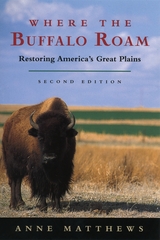 Where the Buffalo Roam: Restoring America's Great Plains
Anne Matthews
University of Chicago Press, 2002 In 1987 Frank and Deborah Popper proposed a bold solution to the decline of America's Great Plains: create a vast nature preserve by returning 139,000 square miles in ten states to prairie and reintroducing the buffalo that once roamed there. In Where the Buffalo Roam, Anne Matthews follows the Poppers from Montana to Texas as they try to sell their idea called the Buffalo Commons; in the process, she introduces us to the people who love these arid windswept lands.
This edition includes a new foreword by environmental historian Donald Worster. Matthews's new afterword describes how with growing support from Native Americans and private groups like the Nature Conservancy, the Poppers' dream of a Buffalo Commons is becoming a reality.
"An admirably crafted book, as poignant and entertaining as it is informative."—Seattle Times
"A priceless piece of Americana."—The Boston Globe
"Matthew's delightful account of the Poppers, their proposal and the controversy surrounding it does focus new attention on the region and its problems."—The Philadelphia Inquirer
"Bright, active, effective journalism. . . . An extremely savvy overlook of the dilemmas of the Great Plains."—Wallace Stegner
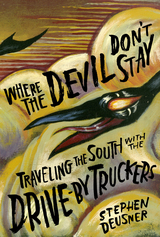 Where the Devil Don't Stay: Traveling the South with the Drive-By Truckers
Stephen Deusner
University of Texas Press, 2021 In 1996, Patterson Hood recruited friends and fellow musicians in Athens, Georgia, to form his dream band: a group with no set lineup that specialized in rowdy rock and roll. The Drive-By Truckers, as they named themselves, grew into one of the best and most consequential rock bands of the twenty-first century, a great live act whose songs deliver the truth and nuance rarely bestowed on Southerners, so often reduced to stereotypes. Where the Devil Don’t Stay tells the band’s unlikely story not chronologically but geographically. Seeing the Truckers’ albums as roadmaps through a landscape that is half-real, half-imagined, their fellow Southerner Stephen Deusner travels to the places the band’s members have lived in and written about. Tracking the band from Muscle Shoals, Alabama, to Richmond, Virginia, to the author’s hometown in McNairy County, Tennessee, Deusner explores the Truckers’ complex relationship to the South and the issues of class, race, history, and religion that run through their music. Drawing on new interviews with past and present band members, including Jason Isbell, Where the Devil Don’t Stay is more than the story of a great American band; it’s a reflection on the power of music and how it can frame and shape a larger culture.
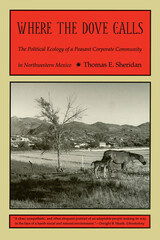 Where the Dove Calls: The Political Ecology of a Peasant Corporate Community in Northwestern Mexico
Thomas E. Sheridan
University of Arizona Press, 1988 Thomas Sheridan's study of the municipio of Cucurpe, Sonora, offers new insight into the ability of peasants to respond to ecological and political change. In order to survive as small rancher-farmers, the Cucurpeños battle aridity and one another in a society characterized by sharp economic inequality and long-standing conflict over the distribution of land and water.
Sheridan has written an ethnography of resource control, one that weds the approaches of political economy and cultural ecology in order to focus upon both the external linkages and internal adaptations that shape three peasant corporate communities. He examines the ecological and economic constraints which scarce and necessary resources place upon households in Cucurpe, and then investigates why many such households have formed corporate communities to insure their access to resources beyond their control. Finally, he identifies the class differences that exist within the corporate communities as well as between members of those organizations and the private ranchers who surround them.
Where the Dove Calls (the meaning of "Cucurpe" in the language of the Opata Indians), an important contribution to peasant studies, reveals the household as the basic unit of Cucurpe society. By viewing Cucurpe's corporate communities as organizations of fiercely independent domestic units rather than as expressions of communal solidarity, Sheridan shows that peasants are among the exploiters as well as the exploited. Cucurpe¤os struggle to maintain the autonomy of their households even as they join together to protect corporate grazing lands and irrigation water. Any attempt to weaken or destroy that independence is met with opposition that ranges from passive resistance to violence.
 Where the Dragon Meets the Angry River: Nature and Power in the People's Republic of China
R. Edward Grumbine
Island Press, 2011 China’s meteoric rise to economic powerhouse might be charted with dams. Every river in the country has been tapped to power exploding cities and factories—every river but one. Running through one of the richest natural areas in the world, the Nujiang’s raging waters were on the verge of being dammed when a 2004 government moratorium halted construction. Might the Chinese dragon bow to the "Angry River"? Would Beijing put local people and their land ahead of power and profit? Could this remote region actually become a model for sustainable growth?
Ed Grumbine traveled to the far corners of China’s Yunnan province to find out. He was driven by a single question: could this last fragment of wild nature withstand China’s unrelenting development? But as he hiked through deep-cut emerald mountains, backcountry villages, and burgeoning tourist towns, talking with trekking guides, schoolchildren, and rural farmers, he discovered that the problem wasn’t as simple as growth versus conservation.
In its struggle to "build a well-off society in an all-round way," Beijing juggles a host of competing priorities: health care for impoverished villagers; habitat for threatened tigers; cars for a growing middle class; clean air for all citizens; energy to power new cities; rubber for the global marketplace.
Where the Dragon Meets the Angry River is an incisive look at the possible fates of China and the planet. Will the Angry River continue to flow? Will Tibetan girls from subsistence farming families learn to read and write? Can China and the United States come together to lead action on climate change? Far-reaching in its history and scope, this unique book shows us the real-world consequences of conservation and development decisions now being made in Beijing and beyond.
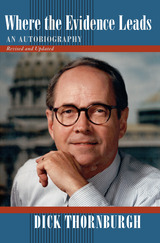 Where the Evidence Leads: An Autobiography, Revised and Updated
Dick Thornburgh
University of Pittsburgh Press, 2010
Set in any era, Dick Thornburgh’s brilliant career would merit study and retelling. He was the first Republican elected to two successive terms as governor of Pennsylvania. He served in the Department of Justice under five presidents, including three years as attorney general for Presidents Reagan and Bush. As undersecretary-
general of the United Nations, he was the highest-ranking American in the organization and a strong voice for reform.
Nationally, Thornburgh is best remembered for his three years as attorney general, when he managed some of the most vexing legal matters of the modern age: the Savings and Loan and BCCI scandals; controversy over the “Iraqgate” and INSLAW investigations and the Wichita abortion clinic protests; and prosecutions of Michael Milken, Manuel Noriega, and Marion Barry, as well as those involved in the Pan Am Flight 103 bombing, the Exxon Valdez oil spill, and the Rodney King beating.
As governor of Pennsylvania, he faced the nation’s worst nuclear accident, weeks after his inauguration in 1979. Thornburgh's cool-headed response to the Three Mile Island disaster is often studied as a textbook example of emergency management. His historic 1992 battle against Harris Wofford for the late John Heinz III’s Senate seat is one of several political campaigns, vividly recalled, that reveal the inner workings of the commonwealth’s political machinery.
Thornburgh reveals painful details of his personal life, including the automobile accident that claimed the life of his first wife and permanently disabled his infant son. He presents a frank analysis of the challenges of raising a family as a public figure, and tells the moving story of his personal and political crusade that culminated in the Americans with Disabilities Act of 1990.
This revised and updated edition includes a new chapter devoted to the highlights of Thornburgh’s continuing career. He offers fascinating insights into his experiences as Bankruptcy Court Examiner for the WorldCom proceedings, leading the investigation into the CBS News report on President George W. Bush’s military service record, representing Allegheny County coroner Cyril Wecht in a trial over alleged misuse of public office, and as part of the K&L Gates team consulted by Chiquita Brands during a federal investigation over payments made to Colombian guerillas and paramilitaries to protect banana growers.
 Where the Hood At?: Fifty Years of Change in Black Neighborhoods
Michael C. Lens
Russell Sage Foundation, 2024 Substantial gaps exist between Black Americans and other racial and ethnic groups in the U.S., most glaringly Whites, across virtually all quality-of-life indicators. Despite strong evidence that neighborhood residence affects life outcomes, we lack a comprehensive picture of Black neighborhood conditions and how they have changed over time. In Where the Hood At? urban planning and public policy scholar Michael C. Lens examines the characteristics and trajectories of Black neighborhoods across the U.S. over the fifty years since the Fair Housing Act.
Hip hop music was born out of Black neighborhoods in the 1970s and has evolved alongside them. In Where the Hood At? Lens uses rap’s growth and influence across the country to frame discussions about the development and conditions of Black neighborhoods. Lens finds that social and economic improvement in Black neighborhoods since the 1970s has been slow. However, how well Black neighborhoods are doing varies substantially by region. Overall, Black neighborhoods in the South are doing well and growing quickly. Washington D.C. and Atlanta, in particular, stand out as centers of Black affluence. Black neighborhoods in the Midwest and the Rust Belt, on the other hand, are particularly disadvantaged. The welfare of Black neighborhoods is related not only to factors within neighborhoods, such as the unemployment rate, but also to characteristics of the larger metropolitan area, such as overall income inequality. Lens finds that while gentrification is increasingly prevalent, it is growing slowly, and is not as pressing an issue as public discourse would make it seem. Instead, concentrated disadvantage is by far the most common and pressing problem in Black neighborhoods.
Lens argues that Black neighborhoods represent urban America’s greatest policy failures, and that recent housing policies have only had mild success. He provides several suggestions for policies with the goal of uplifting Black neighborhoods. One radical proposal is enacting policies and programs, such as tax breaks for entrepreneurs or other small business owners, that would encourage Black Americans to move back to the South. Black Americans migrating South would have a better chance at moving to an advantaged Black neighborhood as improving neighborhood location is higher when moving across regions. It would also help Black Americans expand their political and economic power. He also suggests a regional focus for economic development policies, particularly in the Midwest where Black neighborhoods are struggling the most. One way to boost economic development would be to move federal agencies to the area. He also calls for building more affordable housing in Black suburbs. Black poverty is lower in suburbs than in central cities, so increasing housing in Black suburbs would allow Black households to relocate to more advantaged neighborhoods, which research has shown leads to improved life outcomes.
Where the Hood At? is a remarkable and comprehensive account of Black neighborhoods that helps us to better understand the places and conditions that allow them flourish or impedes their advancement.
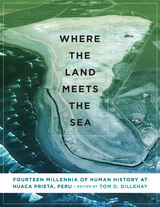 Where the Land Meets the Sea: Fourteen Millennia of Human History at Huaca Prieta, Peru
Edited by Tom D. Dillehay
University of Texas Press, 2017 Huaca Prieta—one the world’s best-known, yet least understood, early maritime mound sites—and other Preceramic sites on the north coast of Peru bear witness to the beginnings of civilization in the Americas. Across more than fourteen millennia of human occupation, the coalescence of maritime, agricultural, and pastoral economies in the north coast settlements set in motion long-term biological and cultural transformations that led to increased social complexity and food production, and later the emergence of preindustrial states and urbanism. These developments make Huaca Prieta a site of global importance in world archaeology. This landmark volume presents the findings of a major archaeological investigation carried out at Huaca Prieta, the nearby mound Paredones, and several Preceramic domestic sites in the lower Chicama Valley between 2006 and 2013 by an interdisciplinary team of more than fifty international specialists. The book’s contributors report on and analyze the extensive material records from the sites, including data on the architecture and spatial patterns; floral, faunal, and lithic remains; textiles; basketry; and more. Using this rich data, they build new models of the social, economic, and ontological practices of these early peoples, who appear to have favored cooperation and living in harmony with the environment over the accumulation of power and the development of ruling elites. This discovery adds a crucial new dimension to our understanding of emergent social complexity, cosmology, and religion in the Neolithic period.
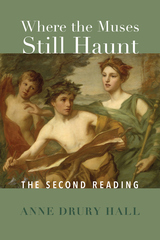 Where the Muses Still Haunt: The Second Reading
Anne Drury Hall
St. Augustine's Press, 2022 "Re-reading is one of life's joys," Anne Drury Hall reminds us. Not simply from the sweetness of remembering or because of the way a book can be like an old friend, but because returning to a great book is inseparable from the endeavor to succeed at being human. The "pull of something old and steady and reliable, the pull to rise to a higher plane" is an important aspect of this experience, where the reader truly "notices" and "connects" with the world and himself. This is why books are the cornerstones of education and the source of the power of concentration.
After leaving school and becoming lost in adulthood, can one return to these books and revive the quest to be great? For this is why we call such books "great". Yet as Hall says, "few people use the phrase 'great books' any more except ironically, because there is an odd view in the current intellectual fog that there is no such thing as 'greatness'". She is compelled, then, to reexamine the so-called great books and make the case for their eternal importance. It is a task that requires not only swimming against the disenchanted march of the post-modern reader into adulthood, but also asserting the unthinkable––namely, that great books were written by great men who achieved this status through their own labor and endurance.
Hall reintroduces the reader to Plato, Homer, Chaucer, Shakespeare, Milton and Melville and hopes this will expose the fraud of most of contemporary literature, and encourage taste and stamina for the works that promise to exhilarate. And Hall argues well that the thrill of these books draws from one shared feature: "The heart of these books is the drama of choice." If Roger Scruton is famous for showing us that ideas have consequences, Hall provides the reader the vision of himself as standing on the brink and the urgency of taking life seriously again. For many this means taking books seriously again.
This book is an important companion to the works treated therein, for teachers and students alike. Both need encouragement in the laboring of instruction or reading the impressive classics. Particularly apt is Hall's treatment of the difficulty of teaching Shakespeare. For the not-so-recent university graduate, perhaps this book will bring him once again to wander where the Muses still haunt. Indeed, even the well-read will enjoy Hall's keen interpretation of the glory of these stories. This is a book written by a true teacher.
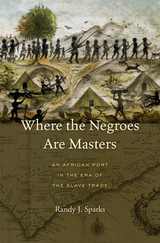 Where the Negroes Are Masters: An African Port in the Era of the Slave Trade
Randy J. Sparks
Harvard University Press, 2014 Annamaboe was the largest slave trading port on the eighteenth-century Gold Coast, and it was home to successful, wily African merchants whose unusual partnerships with their European counterparts made the town and its people an integral part of the Atlantic’s webs of exchange. Where the Negroes Are Masters brings to life the outpost’s feverish commercial bustle and continual brutality, recovering the experiences of the entrepreneurial black and white men who thrived on the lucrative traffic in human beings.
Located in present-day Ghana, the port of Annamaboe brought the town’s Fante merchants into daily contact with diverse peoples: Englishmen of the Royal African Company, Rhode Island Rum Men, European slave traders, and captured Africans from neighboring nations. Operating on their own turf, Annamaboe’s African leaders could bend negotiations with Europeans to their own advantage, as they funneled imported goods from across the Atlantic deep into the African interior and shipped vast cargoes of enslaved Africans to labor in the Americas.
Far from mere pawns in the hands of the colonial powers, African men and women were major players in the complex networks of the slave trade. Randy Sparks captures their collective experience in vivid detail, uncovering how the slave trade arose, how it functioned from day to day, and how it transformed life in Annamaboe and made the port itself a hub of Atlantic commerce. From the personal, commercial, and cultural encounters that unfolded along Annamaboe’s shore emerges a dynamic new vision of the early modern Atlantic world.
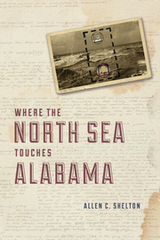 Where the North Sea Touches Alabama
Allen C. Shelton
University of Chicago Press, 2013 On a warm summer’s night in Athens, Georgia, Patrik Keim stuck a pistol into his mouth and pulled the trigger. Keim was an artist, and the room in which he died was an assemblage of the tools of his particular trade: the floor and table were covered with images, while a pair of large scissors, glue, electrical tape, and some dentures shared space with a pile of old medical journals, butcher knives, and various other small objects. Keim had cleared a space on the floor, and the wall directly behind him was bare. His body completed the tableau. Art and artists often end in tragedy and obscurity, but Keim’s story doesn’t end with his death.
A few years later, 180 miles away from Keim’s grave, a bulldozer operator uncovered a pine coffin in an old beaver swamp down the road from Allen C. Shelton’s farm. He quickly reburied it, but Shelton, a friend of Keim’s who had a suitcase of his unfinished projects, became convinced that his friend wasn’t dead and fixed in the ground, but moving between this world and the next in a traveling coffin in search of his incomplete work.
In Where the North Sea Touches Alabama, Shelton ushers us into realms of fantasy, revelation, and reflection, paced with a slow unfurling of magical correspondences. Though he is trained as a sociologist, this is a genre-crossing work of literature, a two-sided ethnography: one from the world of the living and the other from the world of the dead.
What follows isn’t a ghost story but an exciting and extraordinary kind of narrative. The psycho-sociological landscape that Shelton constructs for his reader is as evocative of Kafka, Bataille, and Benjamin as it is of Weber, Foucault, and Marx. Where the North Sea Touches Alabama is a work of sociological fictocriticism that explores not only the author’s relationship to the artist but his physical, historical, and social relationship to northeastern Alabama, in rare style.
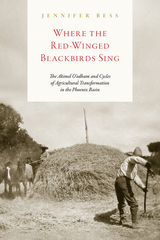 Where the Red-Winged Blackbirds Sing: The Akimel O'odham and Cycles of Agricultural Transformation in the Phoenix Basin
Jennifer Bess
University Press of Colorado, 2021 Where the Red-Winged Blackbirds Sing examines the ways in which the Akimel O’odham (“River People”) and their ancestors, the Huhugam, adapted to economic, political, and environmental constraints imposed by federal Indian policy, the Indian Bureau, and an encroaching settler population in Arizona’s Gila River Valley. Fundamental to O’odham resilience was their connection to their sense of peoplehood and their himdag (“lifeway”), which culminated in the restoration of their water rights and a revitalization of their Indigenous culture.
Author Jennifer Bess examines the Akimel O’odham’s worldview, which links their origins with a responsibility to farm the Gila River Valley and to honor their history of adaptation and obligations as “world-builders”—co-creators of an evermore life-sustaining environment and participants in flexible networks of economic exchange. Bess considers this worldview in context of the Huhugam–Akimel O’odham agricultural economy over more than a thousand years. Drawing directly on Akimel O’odham traditional ecological knowledge, innovations, and interpretive strategies in archives and interviews, Bess shows how the Akimel O’odham engaged in agricultural economy for the sake of their lifeways, collective identity, enduring future, and actualization of the values modeled in their sacred stories.
Where the Red-Winged Blackbirds Sing highlights the values of adaptation, innovation, and co-creation fundamental to Akimel O’odham lifeways and chronicles the contributions the Akimel O’odham have made to American history and to the history of agriculture. The book will be of interest to scholars of Indigenous, American Southwestern, and agricultural history.
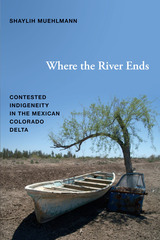 Where the River Ends: Contested Indigeneity in the Mexican Colorado Delta
Shaylih Muehlmann
Duke University Press, 2013 Living in the northwest of Mexico, the Cucapá people have relied on fishing as a means of subsistence for generations, but in the last several decades, that practice has been curtailed by water scarcity and government restrictions. The Colorado River once met the Gulf of California near the village where Shaylih Muehlmann conducted ethnographic research, but now, as a result of a treaty, 90 percent of the water from the Colorado is diverted before it reaches Mexico. The remaining water is increasingly directed to the manufacturing industry in Tijuana and Mexicali. Since 1993, the Mexican government has denied the Cucapá people fishing rights on environmental grounds. While the Cucapá have continued to fish in the Gulf of California, federal inspectors and the Mexican military are pressuring them to stop. The government maintains that the Cucapá are not sufficiently "indigenous" to warrant preferred fishing rights. Like many indigenous people in Mexico, most Cucapá people no longer speak their indigenous language; they are highly integrated into nonindigenous social networks. Where the River Ends is a moving look at how the Cucapá people have experienced and responded to the diversion of the Colorado River and the Mexican state's attempts to regulate the environmental crisis that followed.
Where the Rivers Flow North
Howard Frank Mosher
University Press of New England, 2004 The stories of Where the Rivers Flow North are “superior work, rich in texture and character,” says the Wall Street Journal; “the novella is brilliantly done.” That novella, the title story of the collection, was also made into a feature film starring Rip Torn and Michael J. Fox. These six stories, available again in this new edition, continue Mosher’s career-long exploration of Kingdom County, Vermont. “Within the borders of his fictional kingdom,” the Providence Journal has noted, “Mosher has created mountains and rivers, timber forests and crossroads villages, history and language. And he has peopled the landscape with some of the truest, most memorable characters in contemporary literature.”
Where the Rivers Flow North
Howard Frank Mosher
Brandeis University Press, 2022 A new edition of a classic short-story collection.
The stories of Where the Rivers Flow North are “superior work, rich in texture and character,” says the Wall Street Journal, and “the novella is brilliantly done.” That novella, the title story of the collection, was also made into a feature film starring Rip Torn and Michael J. Fox. These six stories, available again in this new edition, continue Howard Frank Mosher’s career-long exploration of Kingdom County, Vermont. “Within the borders of his fictional kingdom,” the Providence Journal has noted, “Mosher has created mountains and rivers, timber forests and crossroads villages, history and language. And he has peopled the landscape with some of the truest, most memorable characters in contemporary literature.” This new edition features a new introduction by novelist Peter Orner.
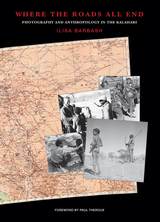 Where the Roads All End: Photography and Anthropology in the Kalahari
Ilisa Barbash
Harvard University Press Winner of the John Collier Jr. Award for Still Photography
Where the Roads All End tells the remarkable story of an American family’s eight anthropological expeditions to the remote Kalahari Desert in South-West Africa (Namibia) during the 1950s. Raytheon co-founder Laurence Marshall, his wife Lorna, and children John and Elizabeth recorded the lives of some of the last remaining hunter-gatherers, the so-called Bushmen, in what is now recognized as one of the most important ventures in the anthropology of Africa. Largely self-taught as ethnographers, the family supplemented their research with motion picture film and still photography to create an unparalleled archive that documents the Ju/’hoansi and the /Gwi just as they were being settled by the government onto a “Bushman Preserve.” The Marshalls’ films and publications popularized a strong counternarrative to existing negative stereotypes of the “Bushman” and revitalized academic studies of these southern African hunter-gatherers.
This vivid and multilayered account of a unique family enterprise focuses on 25,000 still photographs in the archives of Harvard’s Peabody Museum of Archaeology and Ethnology. Illustrated with over 300 images, Where the Roads All End reflects on the enduring ethnographic record established by the Marshalls and the influential pathways they charted in anthropological fieldwork, visual anthropology, ethnographic film, and documentary photography.
Where The Sky Began: Land of the Tallgrass Prairie
John Madson
University of Iowa Press, 2004 “It was a flowing emerald in spring and summer when the boundless winds ran across it, a tawny ocean under the winds of autumn, and a stark and painful emptiness when the great long winds drove in from the northwest. It was Beulahland for many; Gehenna for some. It was the tall prairie.”—from the “Prologue”
Originally published in 1982, Where the Sky Began, John Madson’s landmark publication, introduced readers across the nation to the wonders of the tallgrass prairie, sparking the current interest in prairie restoration. Now back in print, this classic tome will serve as inspiration to those just learning about the heartland’s native landscape and rekindle the passion of long-time prairie enthusiasts.
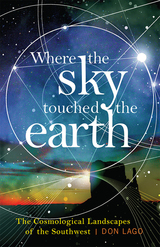 Where the Sky Touched the Earth: The Cosmological Landscapes of the Southwest
Don Lago
University of Nevada Press, 2017 The landscapes of the American Southwest—the Grand Canyon, Monument Valley, the Sedona red rocks—have long filled humans with wonder about nature. This is the home of Lowell Observatory, where astronomers first discovered evidence that the universe is expanding; Meteor Crater, where Apollo astronauts trained for the moon; and Native American tribes with their own ancient, rich ways of relating to the cosmos. With the personal, poetic style of the very best literary nature writing, Don Lago explores how these landscapes have offered humans a deeper sense of connection with the universe. While most nature writing never leaves the ground, Lago is one of the few writers who has applied it to the universe, seeking ties between humans and the astronomical forces that gave us birth.
Nowhere else in the world is the link between earth and sky so powerful. Lago witnesses a solar eclipse over the Grand Canyon, climbs primeval volcanos, and sees the universe in tree rings. Through ageless Native American ceremonies, modern telescopes, and even dreams of flying saucers, Lago, who is not only a poet but a true philosopher of science, strives to find order and meaning in the world and brings out the Southwest’s beauty and mystery.
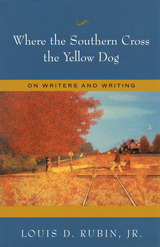 Where the Southern Cross the Yellow Dog: On Writers and Writing
Louis D. Rubin, Jr.
University of Missouri Press, 2005
In Where the Southern Cross the Yellow Dog, award-winning author Louis D. Rubin, Jr., discusses writing and writers based on his own experience as a writer, editor, teacher, and publisher. Only ten years old when he wrote his first article for publication and eighty-one when he completed the preface to this book, Rubin skillfully incorporates more than seventy years of knowledge and experience into this comprehensive and highly readable work.
The title essay, which involves a railroad crossing in Mississippi, a painting, a novel by Eudora Welty, and a comment on language and image by Walker Percy, is an effort by Rubin to come to grips with a problem that has plagued him for years: what is “Southern” about Southern literature, and how does that Southernness figure in the literary imagination of its practitioners? Most of his essays deal with various problems and possibilities characterizing the American literary scene today: the literary uses of memory, writer’s block, the nature of place in fiction, the teaching of writers and the presence of writers on campuses, the condition of poetry today, sports writing, authorial intent in fiction, how nonfiction bolsters fiction, the parlous state of literary publishing, and other matters of cultural importance.
Among the authors whose works figure in the book are Eudora Welty, William Faulkner, James Joyce, Marcel Proust, Thomas Wolfe, T. S. Eliot, Robert Frost, Flannery O’Connor, Stendhal, Mark Twain, Henry James, A. J. Liebling, Shelby Foote, William Wordsworth, Herman Melville, and Ernest Hemingway. The book concludes with a look at today’s literary situation, a diagnosis of how it got where it is, and some recommendations for rescuing it, inspired in part by the author’s failed attempt to buck the trend by founding Algonquin Books. Scholars and students of American literature, especially Southern literature, are sure to find much of value in these informative and inspirational essays from a dedicated and distinguished student of Southern letters.
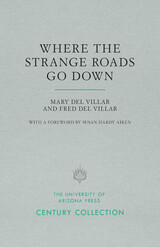 Where the Strange Roads Go Down
Mary del Villar and Fred del Villar; Foreword by Susan Hardy Aiken
University of Arizona Press, 1999 “Strange Roads is a small gem of travel literature in the tradition of works by John Van Dyke, Carl Lumholtz, Charles Lummus, Mary Austin, Edward Hoagland, and Bruce Chatwin. But for all its absorbing detail about topography, flora, and fauna, its keen observations of character, and its vivid re-creation of the sense of place, it is much more than a travel memoir. For on every page one senses the strength, character, and distinctive perspective of Mary del Villar herself. An uncommon woman by any standards, she seems all the more remarkable when one recalls the profoundly reactionary gender ideologies that prevailed in the postwar era in which she lived and wrote. Like other great female wanderers, she transcended the confining notions of woman her society would have imposed on her, living her life according to the dictates of her own intrepid spirit.” –From the foreword by Susan Hardy Aiken
Where the West Begins: Debating Texas Identity
Glen Sample Ely, with foreword by Alwyn Barr
Texas Tech University Press, 2011 Unsure which of its legacies are true and which to embrace, Texas grapples with an identity crisis. One camp insists that the state’s roots in slavery, segregation, and cotton make it southern. Another argues that its Native and ranching history make it western. Outside Texas, southern and western historians who don’t know what to make of the state ignore it altogether. In his innovative settling of the question, Glen Sample Ely examines the state’s historical DNA, making sense of Lone Star identity west of the hundredth meridian and defining Texas’s place in the American West.Focusing on the motives that shape how Texans appropriate their past—from cashing in on tourism to avoiding historical realities—Ely reveals the inner workings of a multiplicity of Texas identities.
 Where the Wild Animals Is Plentiful: Diary of an Alabama Fur Trader's Daughter, 1912-1914
May Jordan
University of Alabama Press, 2006 This rare find--a journal of a young backwoods woman--provides a unique picture of rural life in southwestern Alabama early in the 20th century. "I am a little Alabama girl living on the frontier where the wild animals is plentiful," wrote May Jordan in 1912. During the hunting season her father traveled Washington County buying furs, and May--already 23--accompanied him on two of these trips, cooking meals, helping out with the business, and recording their experiences.
May's diary of these trips from December 1912 to March 1914 describes the routine of the fur trade and provides a vivid portrait of wilderness travel and social customs. Through May's eyes, readers can experience the sights and sounds of pine forests and swamps, the difficulty of wading through waist-deep mud, and the neighborliness of the people living in this isolated area. May also shares both the solace of religious faith and her love of laughter as reflected in the jokes she records. Elisa Moore Baldwin provides an introduction that traces Jordan family history and describes economic, social, and political conditions during the period. Baldwin also includes annotations based on court records, census rolls, and other primary sources and photographs of many of the characters in May's narrative to provide a vivid picture of the times. Because few first-person accounts exist of the life of poor whites, this diary will be invaluable to students of southern and women's history; no comparable work exists for this part of Alabama during this era. May's journal takes us to another world and teaches us about the lively human spirit in the face of hardship and loneliness.
 Where the Wild Books Are: A Field Guide to Ecofiction
Jim Dwyer
University of Nevada Press, 2010 As interest in environmental issues grows, many writers of fiction have embraced themes that explore the connections between humans and the natural world. Ecologically themed fiction ranges from profound philosophical meditations to action-packed entertainments. Where the Wild Books Are offers an overview of nearly 2,000 works of nature-oriented fiction. The author includes a discussion of the precursors and history of the genre, and of its expansion since the 1970s. He also considers its forms and themes, as well as the subgenres into which it has evolved, such as speculative fiction, ecodefense, animal stories, mysteries, ecofeminist novels, cautionary tales, and others. A brief summary and critical commentary of each title is included. Dwyer’s scope is broad and covers fiction by Native American writers as well as ecofiction from writers around the world. Far more than a mere listing of books, Where the Wild Books Are is a lively introduction to a vast universe of engaging, provocative writing. It can be used to develop book collections or curricula. It also serves as an introduction to one of the most fertile areas of contemporary fiction, presenting books that will offer enjoyable reading and new insights into the vexing environmental questions of our time.
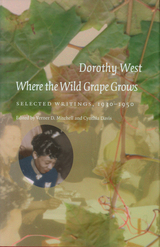 Where the Wild Grape Grows: Selected Writings, 1930-1950
Dorothy West
University of Massachusetts Press, 2026 Despite her strong associations with Massachusetts—her upbringing in Roxbury, her lifelong connection with Martha's Vineyard, and two novels documenting the Great Migration and the rise and decline of Boston's African American community—Dorothy West (1907–1998) is perhaps best known as a member of the Harlem Renaissance. Between 1927 and 1947, West and her cousin, the poet Helene Johnson, lived in New York City where West attended Columbia University, worked as a welfare investigator, wrote for the WPA, traveled to Russia, and established a literary magazine for young black writers.
During these years, West and Johnson knew virtually everyone in New York's artistic, intellectual, and political circles. Their friends included Langston Hughes, Zora Neale Hurston, Carl Van Vechten, Richard Wright, Arna Bontemps, Claude McKay, and many others. West moved easily between the bohemian milieu of her artistic soul mates and the bourgeois, respectable soirees of prominent social and political figures.
In this book, Professors Mitchell and Davis provide a carefully researched profile of West and her circle that serves as an introduction to a well-edited, representative collection of her out-of-print, little-known, or unpublished writings, supplemented by many family photographs. The editors document West's "womanist" upbringing and her relationships with her mother, Rachel Benson West, and other strong-minded women, including her longtime companion Marian Minus.
The volume includes examples of West's probing social criticism in the form of WPA essays and stories, as well as her interviews with Southern migrants. A centerpiece of the book is her unpublished novella, Where the Wild Grape Grows, which explores with grace and gentle irony the complex relationship of three retired women living on Martha's Vineyard. Several of West's exquisitely observed nature pieces, published over a span of twenty years in the Vineyard Gazette, are also reprinted.
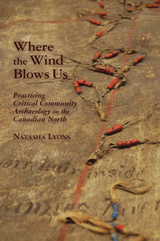 Where the Wind Blows Us: Practicing Critical Community Archaeology in the Canadian North
Natasha Lyons
University of Arizona Press, 2013 Where the Wind Blows Us unites critical practice with a community-based approach to archaeology. Author Natasha Lyons describes an inclusive archaeology that rests on a flexible but rigorous approach to research design and demonstrates a responsible, ethical practice. She traces the rise and application of community archaeologies, develops a wide-ranging set of methods for community practice, and maps out a “localized critical theory” that is suited to the needs of local and descendant communities as they pursue self-defined heritage goals. Localized critical theory aims to decenter the focus on global processes of capitalism in favor of the local processes of community dynamics. Where the Wind Blows Us emphasizes the role of individuals and the relationships they share with communities of the past and present.
Lyons offers an extended case study of her work with the Inuvialuit community of the Canadian Western Arctic. She documents the development of this longstanding research relationship and presents both the theoretical and practical products of the work to date. Integrating knowledge drawn from archaeology, ethnography, oral history, and community interviews, Lyons utilizes a multivocal approach that actively listens to Inuvialuit speak about their rich and textured history.
The overall significance of this volume lies in outlining a method of practicing archaeology that embraces local ways of knowing with a critically constructed and evolving methodology that is responsive to community needs. It will serve as a handbook to mine for elements of critical practice, a model of community-based archaeology, and a useful set of concepts and examples for classroom study.
Where the Wind Dreams of Staying: Searching for Purpose and Place in the West
Eric Dieterle
Oregon State University Press, 2016 Where the Wind Dreams of Staying is a personal memoir told through interwoven essays. In the tradition of environmental literature, Dieterle details his experiences in southeastern Washington, Utah, Nevada, Iowa, California, and Airzona. His restless search for purpose, identity, and place moves through cycles of success and failure, love and loss. He captures the emotional storms of a boy, and then a man, on a restless search for meaning in a place, or for a place with meaning.
Dieterle’s journey leads from the plateau of eastern Washington through the landscapes of seven states, ending in the shadow of the San Francisco peaks in northern Arizona. Readers will find rich, detailed explorations of western landscapes balanced with stories of personal reflection, determination, doubt, and fulfillment.
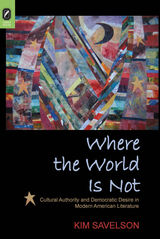 Where the World Is Not: Cultural Authority and Democratic Desire in Modern American Literature
Kim Savelson
Ohio State University Press, 2009 How do novels that literally discuss invention and inventors engage through such discussions an array of critically important conversations and issues beyond invention? And to where and how can we trace and follow such discourses? In Where the World Is Not: Cultural Authority and Democratic Desire in Modern American Literature, Kim Savelson examines the ways in which resoundingly popular U.S. novels by Frank Norris, Willa Cather, F. Scott Fitzgerald, and Ralph Ellison host the tug-of-war between thought and action, between the democratic agenda of the pragmatist movement and the aristocratic idea of aesthetics. Savelson argues for and reads these novels as a way of thinking through the implications for the meaning and making of “culture” brought about by the ongoing social revolution of democratic modernity. She thus expands the scope of the current work being done on pragmatism, as well as the work being done on literature and democracy, carving out an intersection of these two fields. Savelson demonstrates that the questions under her consideration appeared at different key moments over the course of the first half of the twentieth century, embodying and deepening the struggle between the abstract and the practical, the cultural and the commercial—a struggle that turned into a dilemma and a period of growth for modern democratic desire. In so doing, she offers a historical recontextualization of selected literary texts, analyzing them as a way of thinking about intellectual history with subtlety and particularity.
 Where Two Or Three Are Gathered
Bourg
University of Notre Dame Press, 2004 "The quality of Florence Bourg's research is outstanding--thorough, balanced, and nuanced. This excellent book takes an important step toward addressing the deficiency that exists in the scholarly literature on marriage and family." --Joann Heaney-Hunter, St. John's University, New York
Since its retrieval by the Second Vatican Council, the idea of Christian families as "domestic churches" has slowly but steadily gained favor among Catholics. Striking a careful balance between academic theology and practical spirituality, Florence Caffrey Bourg provides a comprehensive analysis of the home and family as one of the most authentic and important locations of the faith community. Bourg draws on literature pertaining to domestic churches from the period of Vatican II to the present to explore the concept of domestic church in relation to the Catholic theological traditions of sacramentality, virtue, and the consistent ethic of life.
Bourg examines the role of families--as basic cells of society and church--in character education, formation of religious identity and vision, and creation of more just social structures. She provides a foundational treatment of Christian family life as a proper concern of systematic theology, especially ecclesiology. Her analysis leads her to conclude that the increasing interest in domestic church presents a consensus-building opportunity the Catholic church cannot afford to ignore.
Where Two or Three Are Gathered offers the first comprehensive theological treatment of domestic church, and contains memorable real-life stories that help to illustrate larger theological points. This timely and important book will appeal to anyone interested in the potentially sacred significance of ordinary activity and the relationship of Christian faith and family life.
FLORENCE CAFFREY BOURG is assistant professor in the Department of Religious and Pastoral Studies at the College of Mount Saint Joseph in Cincinnati, Ohio.
Where Valor Proudly Sleeps: A History of Fredericksburg National Cemetery, 1866–1933
Donald C. Pfanz
Southern Illinois University Press, 2018 Many books discuss in great detail what happened during Civil War battles. This is one of the few that investigate what happened to the remains of those who made the ultimate sacrifice. Where Valor Proudly Sleeps explores a battle’s immediate and long-term aftermath by focusing on Fredericksburg National Cemetery, one of the largest cemeteries created by the U.S. government after the Civil War. Pfanz shows how legislation created the National Cemetery System and describes how the Burial Corps identified, collected, and interred soldier remains as well as how veterans, their wives, and their children also came to rest in national cemeteries. By sharing the stories of the Fredericksburg National Cemetery, its workers, and those buried there, Pfanz explains how the cemetery evolved into its current form, a place of beauty and reflection.
Where Was the Working Class?: REVOLUTION IN EASTERN GERMANY
Linda Fuller
University of Illinois Press, 1999 In six months bridging 1989 and 1990, the German Democratic Republic underwent a transformation that took the world almost completely by surprise. Yet unlike the revolution in Poland a decade earlier, only a small percentage of workers played apolitically active role in the fall of socialism in Germany.
In this unprecedented study, Linda Fuller sets out to explain why the working class was largely missing from the 1989-90 revolution. Drawing on pre- and post-revolutionary visits to East German work sites and dozens of interviews, Fuller documents workers' day-to-day experience of the labor process, workplace union politics, and class. She shows how all three factors led most workers to withdraw from politics, even while prompting a handful to become actively involved in the struggle.
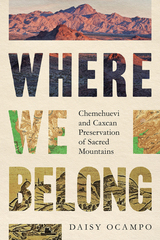 Where We Belong: Chemehuevi and Caxcan Preservation of Sacred Mountains
Daisy Ocampo
University of Arizona Press, 2023 This comparative work dispels the harmful myth that Native people are unfit stewards of their sacred places. This work establishes Indigenous preservation practices as sustaining approaches to the caretaking of the land that embody ecological sustainability, spiritual landscapes, and community well-being.
The author brings together the history and experiences of the Chemehuevi people and their ties with Mamapukaib, or the Old Woman Mountains in the East Mojave Desert, and the Caxcan people and their relationship with Tlachialoyantepec, or Cerro de las Ventanas, in Zacatecas, Mexico. Through a trans-Indigenous approach, Daisy Ocampo weaves historical methodologies (oral histories, archival research, ethnography) with Native studies and historic preservation to reveal why Native communities are the most knowledgeable and transformational caretakers of their sacred places.
This work transcends national borders to reveal how settler structures are sustained through time and space in the Americas. Challenging these structures, traditions such as the Chemehuevi Salt Songs and Caxcan Xuchitl Dance provide both an old and a fresh look at how Indigenous people are reimagining worlds that promote Indigenous-to-Indigenous futures through preservation.
Ultimately, the stories of these two peoples and places in North America illuminate Indigenous sovereignty within the field of public history, which is closely tied to governmental policies, museums, archives, and agencies involved in historic preservation.
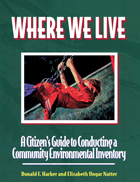 Where We Live: A Citizen's Guide To Conducting A Community Environmental Inventory
Donald F. Harker and Elizabeth Ungar Natter
Island Press, 1995 Where We Live is a practical workbook to help citizens find information concerning their local environment and to use that information in furthering environmental goals. The book includes general information on human impacts on the environment and instructions for citizens to use in creating a community environmental map. In addition, it guides the user through various environmental programs and available documentation of community environmental hazards. Included are addresses and phone numbers for state environmental and natural resource agencies in all fifty states, and a listing of chemicals and their effects on humans and the environment. The final section of the book presents a series of exercises to help groups explore methods of approaching various community issues. Where We Live is a valuable resource for community development practitioners, local government officials and citizen activists concerned with the impact of environmental decisions on local communities, as well as teachers at both the college and secondary-school levels."
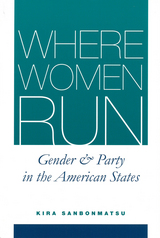 Where Women Run: Gender and Party in the American States
Kira Sanbonmatsu
University of Michigan Press, 2010 Why don’t more women run for office? Why are certain states more likely to have female candidates and representatives? Would strengthening political parties narrow the national gender gap? Where Women Run addresses these important questions through a rare and incisive look at how candidates are recruited. Drawing on surveys and case studies of party leaders and legislators in six states, political scientist Kira Sanbonmatsu analyzes the links between parties and representation, exposing the mechanism by which parties’ informal recruitment practices shape who runs—or doesn’t run—for political office in America.
“Kira Sanbonmatsu has done a masterful job of linking the representation of women in elective office to the activities of party organizations in the states. She combines qualitative and quantitative data to show how women are navigating the campaign process to become elected leaders and the changing role of party organizations in their recruitment and election. It is a significant contribution to the study of representative democracy.”
--Barbara Burrell, Northern Illinois University
“Sanbonmatsu has produced an excellent study that will invigorate research on the role of political parties and the recruitment of women candidates. Using a variety of methods and data sources, she has crafted a tightly constructed, clearly argued, and exceedingly well-written study. A commendable and convincing job.”
--Gary Moncrief, Boise State University
“Sanbonmatsu offers important insights in two neglected areas of American politics: the role of political parties in recruiting candidates and the continued under-representation of women in elected office. Connecting the two subjects through careful qualitative and statistical methods, insightful interpretation of the literature and interesting findings, the book is a significant new addition to scholarship on parties, gender, and political recruitment.”
--Linda Fowler, Dartmouth College
Kira Sanbonmatsu is Associate Professor of Political Science at Rutgers University and Senior Scholar at the Eagleton Institute of Politics’ Center for American Women and Politics (CAWP). She was previously associate professor at Ohio State University. She is the author of Democrats, Republicans, and the Politics of Women’s Place.
Where Women Work: A Study of Yoruba Women in the Marketplace and in the Home
Niara Sudarkasa
University of Michigan Press, 1973 Niara Sudarkasa reports on Yoruba women and their role as traders in Nigeria’s marketing system. During Sudarkasa’s 15-month fieldwork in western Nigeria, she spoke with hundreds of traders, men and women, in order to understand the Yoruba markets, the division of labor, the difference between urban and rural communities in the region, residence and kinship, and other complexities of Yoruba society.
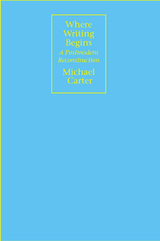 Where Writing Begins: A Postmodern Reconstruction
Michael Carter
Southern Illinois University Press, 2003 Where Writing Begins: A Postmodern Reconstruction is an innovative approach to the postmodern dilemma in rhetoric and composition thatoffers a positive and postmodern pedagogy that redefines and revalues writing and the teaching of writing through reconstructive, postmodern thought. The result is a fresh understanding of both the field of composition and writing instruction. Drawing on the rich potential of “beginning” as a philosophical concept, Michael Carter asks the simple question: Where does writing begin? His findings take readers first to a new view of what it means to begin, and then to a new understanding of writing and teaching writing based on the redefined beginning. Challenging conventional notions that posit “beginning” as a chronological and temporal concept, he instead advocates an ontological and philosophical approach, in which “beginning” embodies both deconstruction and reconstruction—and the very possibility of newness. Adding to a growing body of rhetorical scholarship in postmodern reconstruction, Where Writing Begins illustrates that writing must be understood within the framework of deconstruction and reconstruction. Writing, then, may be newly defined and valued as beginning. Weaving together conceptual, structural, and methodological patterns, Carter’s study is also a journey through the history of philosophy and rhetoric that will leave readers feeling refreshed and teachers eager to return to their classes.
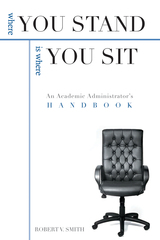 Where You Stand Is Where You Sit: An Academic Administrator's Handbook
Robert V. Smith
University of Arkansas Press, 2006 The old aphorism “Where you stand is where you sit” rings true across many sectors of society. For academic administrators, be they provosts, vice-presidents or vice-chancellors, deans or directors, department chairs or heads, or administrative support professionals, the level and scope of responsibilities clearly influence perspectives. Yet, having a understanding of the higher-education enterprise is essential to ensuring professional success and advancement. Such understanding is at the heart of this work.
This handbook addresses the three key responsibilities of academic officers: inspiration, evaluation, and representation. “Getting a Good Start” deals with the promise of a new position, communicating with supervisors, and “getting around.” “Offering Inspiration and Direction” looks at the integrated scholar and “academic intrapreneurs”; diversity; the joys, challenges, and failure of professional life; and dealing with tragedies. “Guidance to Various Academic Administrators and Support Staff” examines the development, roles, and responsibilities of academic officers and institutional planning and budgeting. Reviewing the state of the institution and its personnel is covered in “Assessments and Evaluations,” and “Policies and Partnerships” deals with ethics-based policies, academic consortia and partnerships, and international outreach.
Throughout this valuable handbook, Smith offers background, advice, and examples that will interest both the novice and seasoned administrator as he takes us on a tour of success stories, challenges, and foibles.
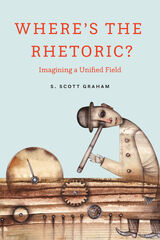 Where's the Rhetoric?: Imagining a Unified Field
S. Scott Graham
Ohio State University Press, 2020 The emergence of rhetorical new materialisms and computational rhetorics has provoked something of an existential crisis within rhetorical studies. In Where’s the Rhetoric?, S. Scott Graham tackles this titular question by arguing first that scholarly efforts in rhetorical new materialisms and computational rhetoric be understood as coextensive with longstanding disciplinary commitments in rhetoric. In making this argument, Graham excavates the shared intellectual history of traditional rhetorical inquiry, rhetorical new materialisms, and computational rhetoric with particular emphasis on the works of Carolyn Miller, Kenneth Burke, and Henri Bergson.
Building on this foundation, Graham then argues for a more unified approach to contemporary rhetorical inquiry—one that eschews disciplinary demarcations between rhetoric’s various subareas. Specifically, Graham uses his unified field theory to explore 1) the rise of the “tweetorial” as a parascientific genre, 2) inventional practices in new media design, 3) statistical approaches to understanding biomedical discourse, and 4) American electioneering rhetorics. The book overall demonstrates how seemingly disparate intellectual approaches within rhetoric can be made to speak productively to one another in the pursuit of shared scholarly goals around questions of genre, media, and political discourse—thereby providing a foundation for imagining a more unified field.
 Wherever the Sound Takes You: Heroics and Heartbreak in Music Making
David Rowell
University of Chicago Press, 2019 David Rowell is a professional journalist and an impassioned amateur musician. He’s spent decades behind a drum kit, pondering the musical relationship between equipment and emotion. In Wherever the Sound Takes You, he explores the essence of music’s meaning with a vast spectrum of players, trying to understand their connection to their chosen instrument, what they’ve put themselves through for their music, and what they feel when they play.
This wide-ranging and openhearted book blossoms outward from there. Rowell visits clubs, concert halls, street corners, and open mics, traveling from the Rock and Roll Hall of Fame in Cleveland to a death metal festival in Maryland, with stops along the way in the Swiss Alps and Appalachia. His keen reportorial eye treats us to in-depth portraits of musicians from platinum-selling legend Peter Frampton to a devout Christian who spends his days alone in a storage unit bashing away on one of the largest drum sets in the world. Rowell illuminates the feelings that both spur music’s creation and emerge from its performance, as well as the physical instruments that enables their expression. With an uncommon sensitivity and grace, he charts the pleasure and pain of musicians consumed with what they do—as all of us listen in.
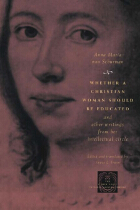 Whether a Christian Woman Should Be Educated and Other Writings from Her Intellectual Circle
Anna Maria van Schurman
University of Chicago Press, 1998 Advocate and exemplar of women's education, female of aristocratic birth and modest demeanor, Anna Maria van Schurman (1607-1678) was one of Reformation Europe's most renowned writers defending women's intelligence. From her early teens, Schurman garnered recognition and admiration for her accomplishments in languages, philosophy, poetry, and painting. As an adult she actively engaged in written correspondence and debate with Europe's leading intellectuals. Nevertheless, Schurman refused to regard herself as an anomaly among women. A supporter of the female sex, she argues that the same rigorous education that shaped her should be made available to all Christian daughters of the aristocracy.
Gathered here in meticulous translation are Anna Maria van Schurman's defense of women's education, her letters to other learned women, and her own account of her early life, as well as responses to her work from male contemporaries, and rare writings by Schurman's mentor, Voetius. This volume will interest the general reader as well as students of women's, religious, and social history.
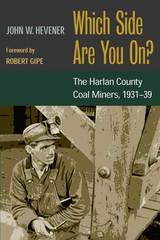 Which Side Are You On?: The Harlan County Coal Miners, 1931-39
John W. Hevener. Foreword by Robert Gipe
University of Illinois Press, 1978 Depression-era Harlan County, Kentucky, was the site of one of the most bitter and protracted labor disputes in American history. The decade-long conflict between miners and the coal operators who adamantly resisted unionization has been immortalized in folksong by Florence Reece and Aunt Molly Jackson, contemplated in prose by Theodore Dreiser and Sherwood Anderson, and long been obscured by popular myths and legends. John W. Hevener separates the fact from the legend in his Weatherford Award-winning investigation of Harlan's civil strife, now available for the first time in paperback. In Which Side Are You On? Hevener attributes the violence–-including the deaths of thirteen union miners–-to more than just labor conflict, viewing Harlan's troubles as sectional economic conflict stemming from the county's rapid industrialization and social disorganization in the preceding decade. Detailing the dimensions of unionization and the balance of power spawned by New Deal labor policy after government intervention, Which Side Are You On? is the definitive analysis of Harlan's bloody decade and a seminal contribution to American labor history.
 Which Socialism, Whose Detente?: West European Communism and the Czechoslovak Crisis of 1968
Maud Bracke
Central European University Press, 2007 This study analyzes the impact of the Czechoslovak crisis of 1968–1969 on the two major communist parties in the West: the Italian and French ones. Discusses the central strategic and ideological tensions which these parties needed to deal with: domestic belonging versus allegiance to the world communist movement, doctrinal orthodoxy in a context of rapid societal changes, and the question of revolution and reform. These key problems were situated in different contexts: the crisis in the "world communist movement" after 1956 and the Sino-Soviet rift, socio-economic modernization and political radicalization in Western Europe, and the shift from Cold War to early détente on the European continent. The research for this work is based on the study of a large collection of recently released primary sources, particularly, the internal records of various communist parties in Europe.
Which Way Goes Capitalism?: In Search of Adequate Policies in a Dramatically Changing World
Daniel Daianu
Central European University Press, 2009 In this title, a well-known academic economist and former finance minister gives a lucid and well balanced overview of the current financial turbulences that have hit the developed economies. Strongly criticizing the excesses of neoliberal capitalism, Daianu calls for implementing necessary regulatory reforms in the financial sector and for restoration of a proper balance between the functions of the state and the market. Daianu goes back to some of the roots of the current crisis and the flaws or weaknesses of the global financial system. In doing so, he extensively discusses the monetary union of the Euro, and the critical question whether, how and when additional countries can and should join the club. This is a timely volume with a very strong and important warning.
Which World?: Scenarios For The 21St Century
Allen Hammond
Island Press, 1998 In Which World?, scientist Allen Hammond imaginatively probes the consequences of present social, economic, and environmental trends to construct three possible worlds that could await us in the twenty-first century: Market World, in which economic and human progress is driven by the liberating power of free markets and human initiative; Fortress World, in which unattended social and environmental problems diminish progress, dooming hundreds of millions of humans to lives of rising conflict and violence; and Transformed World, in which human ingenuity and compassion succeed in offering a better life, not just a wealthier one, and in seeking to extend those benefits to all of humanity.
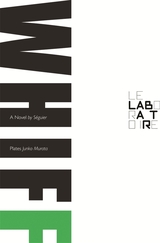 Whiff
David Edwards
Harvard University Press Whiff is the new novel by David Edwards (Séguier). It is illustrated by the Japanese Manga artist Junko Murata and continues the story of Edwards’ first novel, Niche, co-authored with Jay Cantor (Plessis). Whiff derives from an actual experiment performed in Paris at the art and science innovation center, Le Laboratoire. In this latest experiment, the double-Michelin-starred chef Thierry Marx collaborated with the colloidal scientist Jérôme Bibette to introduce a new way of encapsulating flavors. Wishing to present these delectable capsules in an unusual way, a group of art and science college students developed with Edwards a new way of eating by aerosol, called whiffing. Whiff, whose publication coincides with the commercialization by Le Laboratoire of aerosolized chocolate, explores how we dream, and realize our dreams, through surprising combinations of aesthetic and analytical methods. Whiff is also accompanied by the first “whiffing” recipes.
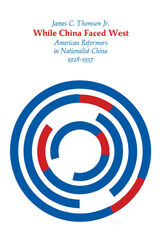 While China Faced West: American Reformers in Nationalist China, 1928–1937
James C. Thomson Jr.
Harvard University Press, 1969 The years from 1928 to 1937 were the “Nanking decade” when the Chinese Nationalist government strove to build a new China with Western assistance. This was an interval of hope between the turbulence of the warlord-ridden twenties and the eight-year war with Japan that began in 1937. James Thomson explores the ways in which Americans, both missionaries and foundation representatives, tried to help the Chinese government and Chinese reformers undertake a transformation of rural society. His is the first in-depth study of these efforts to produce radical change and at the same time avoid the chaos and violence of revolution.
Despite the conservatism of the right wing in the Kuomintang party dictatorship, this Nanking decade saw many promising beginnings. American missionaries—the largest group of Westerners in the Chinese hinterland—often took the initiative locally, and some rallied to support of China’s first modern-minded government. They assisted both in rural reconstruction programs and in efforts of at ideological reform. Thomson analyzes the work of the National Christian Council in an area of Kiangsi province recently recovered from Communist rule. He also traces the deepening involvement of missionaries and the Chinese Christian Church in the “New Life Movement,” sponsored by Chiang Kai-shek.
Unhappily aware of the sharpening polarization of Chinese politics, these American reformers struggled in vain to steer clear of too close an identification with the ruling party. Yet they found themselves increasingly identified with the Nanking regime and their reform efforts obstructed by its disinclination or inability to revolutionize the Chinese countryside. In this way, American reformers in Nationalist China were forerunners of subsequent American attempts, under government sponsorship, to find a middle path between revolution and reaction in other situations of national upheaval.
For this book, James Thomson has used hitherto unexplored archives that document the participation of American private citizens in the process of Chinese social, economic, and political change.
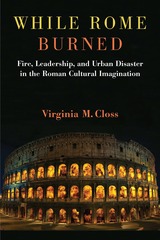 While Rome Burned: Fire, Leadership, and Urban Disaster in the Roman Cultural Imagination
Virginia M. Closs
University of Michigan Press, 2020 While Rome Burned attends to the intersection of fire, city, and emperor in ancient Rome, tracing the critical role that urban conflagration played as both reality and metaphor in the politics and literature of the early imperial period. Urban fires presented a consistent problem for emperors from Augustus to Hadrian, especially given the expectation that the princeps be both a protector and provider for Rome’s population. The problem manifested itself differently for each leader, and each sought to address it in distinctive ways. This history can be traced most precisely in Roman literature, as authors addressed successive moments of political crisis through dialectical engagement with prior incendiary catastrophes in Rome’s historical past and cultural repertoire.
Working in the increasingly repressive environment of the early principate, Roman authors frequently employed “figured” speech and mythopoetic narratives to address politically risky topics. In response to shifting political and social realities, the literature of the early imperial period reimagines and reanimates not just historical fires, but also archetypal and mythic representations of conflagration. Throughout, the author engages critically with the growing subfield of disaster studies, as well as with theoretical approaches to language, allusion, and cultural memory.
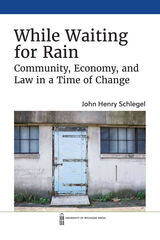 While Waiting for Rain: Community, Economy, and Law in a Time of Change
John Henry Schlegel
University of Michigan Press, 2022 What might a sensible community choose to do if its economy has fallen apart and becoming a ghost town is not an acceptable option? Unfortunately, answers to this question have long been measured against an implicit standard: the postwar economy of the 1950s. After showing why that economy provides an implausible standard—made possible by the lack of economic competition from the European and Asian countries, winners or losers, touched by the war—John Henry Schlegel attempts to answer the question of what to do. While Waiting for Rain first examines the economic history of the United States as well as that of Buffalo, New York: an appropriate stand-in for any city that may have seen its economy start to fall apart in the 1960s, 70s, and 80s. It makes clear that neither Buffalo nor the United States as a whole has had an economy in the sense of “a persistent market structure that is the fusion of an understanding of economic life with the patterns of behavior within the economic, political, and social institutions that enact that understanding” since both economies collapsed. Next, this book builds a plausible theory of how economic growth might take place by examining the work of the famous urbanist, Jane Jacobs, especially her book Cities and the Wealth of Nations. Her work, like that of many others, emphasizes the importance of innovation for economic growth, but is singular in its insistence that such innovation has to come from local resources. It can neither be bought nor given, even by well-intentioned political actors. As a result Americans generally, as well as locally, are like farmers in the midst of a drought, left to review their resources and wait. Finally, it returns to both the local Buffalo and the national economies to consider what these political units might plausibly do while waiting for an economy to emerge.
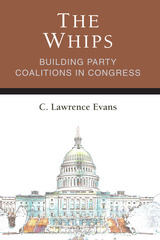 The Whips: Building Party Coalitions in Congress
C. Lawrence Evans
University of Michigan Press, 2018 The party whips are essential components of the U.S. legislative system, responsible for marshalling party votes and keeping House and Senate party members in line. In The Whips, C. Lawrence Evans offers a comprehensive exploration of coalition building and legislative strategy in the U.S. House and Senate, ranging from the relatively bipartisan, committee-dominated chambers of the 1950s to the highly polarized congresses of the 2000s. In addition to roll call votes and personal interviews with lawmakers and staff, Evans examines the personal papers of dozens of former leaders of the House and Senate, especially former whips. These records allowed Evans to create a database of nearly 1,500 internal leadership polls on hundreds of significant bills across five decades of recent congressional history.
The result is a rich and sweeping understanding of congressional party leaders at work. Since the whips provide valuable political intelligence, they are essential to understanding how coalitions are forged and deals are made on Capitol Hill.
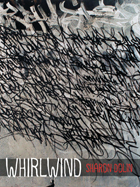 Whirlwind
Sharon Dolin
University of Pittsburgh Press, 2012 Whirlwind is one woman’s frank, witty, mordant, sexy look at the breakup of a marriage and its emotional aftermath. With her characteristic linguistic play and mixture of poetic registers and styles, Sharon Dolin takes her readers on an off-the-tracks emotional ride through the whirlwind that goes by the name of divorce. Hang on tight. Here poems are never merely confessional, but use formal aplomb to ride the white-heat rage, hurt, denial, reflection, regret, wistfulness, desire, and sexual passion as they go hurtling through the many stages of grief after the death of a relationship and the rebirth of a more vital self. Dolin tackles difficult subjects unflinchingly in her poems: such as betrayal and the shame of the one being betrayed, being a parent within a volatile breakup, as well as some startling poems on the reawakening of sexuality and an attention to the natural world and politics. In her poem that won a Pushcart Prize, she dons the mask of the Furies to confront her ex-husband and his lover. A journalist of her own heart, Sharon Dolin has written a brazen collection that seethes with the pressure of a story to tell: cathartic and thrilling in equal measure.
 Whiskerology: The Culture of Hair in Nineteenth-Century America
Sarah Gold McBride
Harvard University Press, 2025 A surprising history of human hair in nineteenth-century America, where length, texture, color, and coiffure became powerful indicators of race, gender, and national belonging.
Hair is always and everywhere freighted with meaning. In nineteenth-century America, however, hair took on decisive new significance as the young nation wrestled with its identity. During the colonial period, hair was usually seen as bodily discharge, even “excrement.” But as Sarah Gold McBride shows, hair gradually came to be understood as an integral part of the body, capable of exposing truths about the individuals from whom it grew—even truths they wanted to hide.
As the United States diversified—intensifying divisions over race, class, citizenship status, and region—Americans sought to understand and classify one another through the revelatory power of hair: its color, texture, length, even the shape of a single strand. While hair styling had long offered clues about one’s social status, the biological properties of hair itself gradually came to be seen as a scientific tell: a reliable indicator of whether a person was a man or a woman; Black, white, Indigenous, or Asian; Christian or heathen; healthy or diseased. Hair was even thought to illuminate aspects of personality—whether one was courageous, ambitious, or perhaps criminally inclined. Yet if hair was a teller of truths, it was also readily turned to purposes of deception in ways that alarmed some and empowered others. Indeed, hair helped many Americans to fashion statements about political belonging, to engage in racial or gender passing, and to reinvent themselves in new cities.
A history inscribed in bangs, curls, and chops, Whiskerology illuminates a period in American history when hair indexed belonging in some ways that may seem strange—but in other ways all too familiar—today.
Whiskey, Etc.: Short (short) stories
Sherrie Flick
Autumn House Press, 2016 These stories are funny and serious, outrageous and completely familiar. Readers will meet a cast of characters ranging from a woman who cleans her soon-to-be ex-husband’s house to a woman who seduces her paper boy. These stories are short, but leave readers completely satisfied and reveling in the complexity of our strange lives.
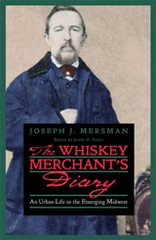 The Whiskey Merchant’s Diary: An Urban Life in the Emerging Midwest
Joseph J. Mersman
Ohio University Press, 2007 Joseph J. Mersman was a liquor merchant, a German American immigrant who aspired—successfully—to become a self-made man. Hundreds of the residents of Mersman’s hometown in Germany immigrated to Cincinnati in the 1830s, joining many thousands of other German immigrants. In 1847, at the age of twenty-three, Mersman began recording his activities in a bound volume, small enough to fit into his coat pocket. His diary, filled with work and play, eating and drinking, flirting and dancing, provides a unique picture of everyday life, first in Cincinnati and then in St. Louis, the new urban centers of the emerging Midwest. Outside of Gold Rush diaries and emigration journals, few narrative records of the antebellum period have been published. Illustrated with photographs, maps, and period advertisements, the diary reveals how a young man worked to establish himself during an era that was rich in opportunity. As a whiskey rectifier, Mersman bought distilled spirits, redistilled or reprocessed them to remove contaminants or increase the alcohol content, and added various flavorings before selling his product to liquor retailers. In his diary, he describes scrambling for capital, marketing his wares, and arranging transportation by steamboat, omnibus, and train. Although the business that he sought to master was eliminated by the passage of the Pure Food Law of 1906, Mersman, like most rectifiers, was a reputable wholesaler. Merchants like him played an important role in distributing liquor in nineteenth-century America. Mersman confronted serious disease, both as a sufferer from syphilis and as a witness to two devastating cholera epidemics. Unlike other residents of St. Louis, who fled the relative safety of the countryside, he remained in the city and saw the impact of the epidemics on the community. Linda A. Fisher’s extensive, insightful, and highly readable annotations add a wealth of background information to Mersman’s story. Her professional training and career as a physician give her a particularly valuable perspective on the public health aspects of Mersman’s life and times.
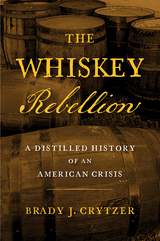 The Whiskey Rebellion: A Distilled History of an American Crisis
Brady J. Crytzer
Westholme Publishing, 2024 In March 1791 Treasury Secretary Alexander Hamilton shocked the western frontier when he proposed a domestic excise tax on whiskey to balance America’s national debt. The law, known colloquially as the “Whiskey Act,” disproportionately penalized farmers in the backcountry, while offering favorable tax incentives designed to protect larger distillers. Although Hamilton viewed the law as a means of both collecting revenue andforcefully imposing federal authority over the notoriously defiant frontier, settlers in Western Pennsylvania bristled at its passage. They demanded that the law be revoked or rewritten to correct its perceived the injustices, and begged their representatives to lobby Congress on their behalf.
As the months passed however the people of Western Pennsylvania grew restless with the inadequacy of the government’s response and they soon turned to more violent means of political expression. Treasury officers across the west were targeted for their involvement in the tax collection, and they were brutally attacked by armed bands of disgruntled locals. They were tarred and feathered, burned with hot irons, and whipped; their homes were ransacked and burned. Extralegal courts were established in a direct challenge to federal authority, and the frontier slowly drifted toward a state of rebellion.
In response President George Washington raised an army of 13,000 men, one of the largest forces he ever commanded, to suppress the rebellion. No major battle ever occurred, but weeks of arrests, illegal detentions, and civil rights violations rocked the west. The event polarized the nation, and highlighted the dramatic differences between Washington’s Federalist perspective and Jefferson’s emerging Democratic-Republican Party. Two centuries later the Whiskey Rebellion stands as the second largest domestic rebellion in American History, only outdone by the Confederate States of America in 1861.
In The Whiskey Rebellion: A Distilled History of an American Crisis, historian Brady J. Crytzer takes the reader on a journey through Western Pennsylvania following the routes of both the rebels and the United States Army to place this important event into context for the reader. Complete with images and maps, the author illuminates what visitors can still see from the period while providing a cogent and engrossing account of this crisis unfolded and how it was resolved.
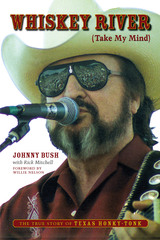 Whiskey River (Take My Mind): The True Story of Texas Honky-Tonk
By Johnny Bush with Rick Mitchell
University of Texas Press, 2007 When it comes to Texas honky-tonk, nobody knows the music or the scene better than Johnny Bush. Author of Willie Nelson's classic concert anthem "Whiskey River," and singer of hits such as "You Gave Me a Mountain," "Undo the Right," "Jim, Jack and Rose," and "I'll Be There," Johnny Bush is a legend in country music, a singer-songwriter who has lived the cheatin', hurtin', hard-drinkin' life and recorded some of the most heart-wrenching songs about it. He has one of the purest honky-tonk voices ever to come out of Texas. And Bush's career has been just as dramatic as his songs—on the verge of achieving superstardom in the early 1970s, he was sidelined by a rare vocal disorder that he combated for thirty years. But, survivor that he is, Bush is once again filling dance halls across Texas and inspiring a new generation of musicians who crave the authenticity—the "pure D" country—that Johnny Bush has always had and that Nashville country music has lost. In Whiskey River (Take My Mind), Johnny Bush tells the twin stories of his life and of Texas honky-tonk music. He recalls growing up poor in Houston's Kashmere Gardens neighborhood and learning his chops in honky-tonks around Houston and San Antonio—places where chicken wire protected the bandstand and deadly fights broke out regularly. Bush vividly describes life on the road in the 1960s as a band member for Ray Price and Willie Nelson, including the booze, drugs, and one-night stands that fueled his songs but destroyed his first three marriages. He remembers the time in the early 1970s when he was hotter than Willie and on the fast track to superstardom—until spasmodic dysphonia forced his career into the slow lane. Bush describes his agonizing, but ultimately successful struggle to keep performing and rebuild his fan base, as well as the hard-won happiness he has found in his personal life. Woven throughout Bush's autobiography is the never-before-told story of Texas honky-tonk music, from Bob Wills and Floyd Tillman to Junior Brown and Pat Green. Johnny Bush has known almost all the great musicians, past and present, and he has wonderful stories to tell. Likewise, he offers shrewd observations on how the music business has changed since he started performing in the 1950s—and pulls no punches in saying how Nashville music has lost its country soul. For everyone who loves genuine country music, Johnny Bush, Willie Nelson, and stories of triumph against all odds, Whiskey River (Take My Mind) is a must-read.
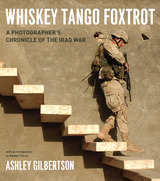 Whiskey Tango Foxtrot: A Photographer's Chronicle of the Iraq War
Ashley Gilbertson
University of Chicago Press, 2007 Arriving in Iraq on the eve of the U.S. invasion, unaffiliated with any newspaper and hoping to pick up assignments along the way, Ashley Gilbertson was one of the first photojournalists to cover the disintegration of America’s military triumph as looting and score settling convulsed Iraqi cities. Just twenty-five years old at the time, Gilbertson soon landed a contract with the New York Times, and his extraordinary images of life in occupied Iraq and of American troops in action began appearing in the paper regularly. Throughout his work, Gilbertson took great risks to document the risks taken by others, whether dodging sniper fire with American infantry, photographing an Iraqi bomb squad as they diffused IEDs, or following marines into the cauldron of urban combat.
Whiskey Tango Foxtrot gathers the best of Gilbertson’s photographs, chronicling America’s early battles in Iraq, the initial occupation of Baghdad, the insurgency that erupted shortly afterward, the dramatic battle to overtake Falluja, and ultimately, the country’s first national elections. No Western photojournalist has done as much sustained work in occupied Iraq as Gilbertson, and this wide-ranging treatment of the war from the viewpoint of a photographer is the first of its kind. Accompanying each section of the book is a personal account of Gilbertson’s experiences covering the conflict. Throughout, he conveys the exhilaration and terror of photographing war, as well as the challenges of photojournalism in our age of embedded reporting. But ultimately, and just as importantly, Whiskey Tango Foxtrot tells the story of Gilbertson’s own journey from hard-drinking bravado to the grave realism of a scarred survivor. Here he struggles with guilt over the death of a marine escort, tells candidly of his own experience with post-traumatic stress, and grapples with the reality that Iraq—despite the sacrifice in Iraqi and American lives—has descended into a civil war with no end in sight.
A searing account of the American experience in Iraq, Whiskey Tango Foxtrot is sure to become one of the classic war photography books of our time.
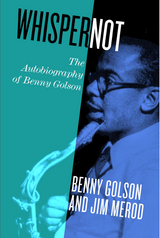 Whisper Not: The Autobiography of Benny Golson
Benny Golson
Temple University Press, 2016 “One of the greatest artists our country has is Benny Golson. He is not only a great musician, but an original and fabulous composer. He is inventive and creative and his work is loved the world over. Benny is a rare, creative genius. All I would like to say is THREE CHEERS for Benny Golson!”—Tony Bennett “Composer supreme, tenor man supreme, jazz man supreme, good guy supreme: that’s BENNY GOLSON!"—Sonny Rollins Born during the de facto inaugural era of jazz, saxophonist Benny Golson learned his instrument and the vocabulary of jazz alongside John Coltrane while Golson was still in high school in Philadelphia. Quickly establishing himself as an iconic fixture on the jazz landscape, Golson performed with dozens of jazz greats, from Sonny Rollins, Coleman Hawkins, and Jimmy Heath to Dizzy Gillespie, Freddie Hubbard, and many others. An acclaimed composer, Golson also wrote music for Hollywood films and television and composed such memorable jazz standards as “Stablemates,” “Killer Joe,” and “Whisper Not.” An eloquent account of Golson’s exceptional life—presented episodically rather than chronologically—Whisper Not includes a dazzling collection of anecdotes, memories, experiences, and photographs that recount the successes, the inevitable failures, and the rewards of a life eternally dedicated to jazz.
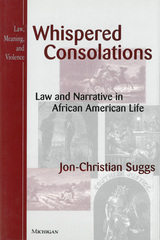 Whispered Consolations: Law and Narrative in African American Life
Jon-Christian Suggs
University of Michigan Press, 2000 African Americans have experienced life under the rule of law in quite different contexts from those of whites, and they have written about those differences in poems, songs, stories, autobiographies, novels, and memoirs. This book examines the tradition of American law as it appears in African American literary life, from pre-Revolutionary murder trials to gangsta rap. The experience, and the critique it produces, changes our pictures of both American law and African American literature.
This study reads the already canonical works of nineteenth- and twentieth-century black literature in the context of their responses to and critiques of American legal history. At the same time, it examines little known texts of African American life, from the urban humor of James D. Corrothers, through the early political essays of Chester Himes, to the adventures of black comic book heroes like Steel, Wise Son, and Xero. These are contextualized within specific legislation and case law, from the slave laws of early Virginia to the Civil Rights Act of 1964, from the case of Phillis and Mark in 1755 to the Simpson trials of the mid 1990s.
Finally, the legal texts presented are themselves critiqued by the fictions and legal analyses of the African Americans who lived out their implications in their daily lives. Through a positing of the legal and cultural concepts of privacy, property, identity, desire and citizenship, and the romantic ideals of authenticity, irony, and innocence, Suggs is able to show how our understanding of American law should be influenced by African American conceptions of it as depicted through literature.
This book will appeal to students and scholars of literary and cultural studies, law and literature, American history, as well as to scholars of African American literature and culture.
Jon-Christian Suggs is Professor of English, John Jay College, City University of New York.
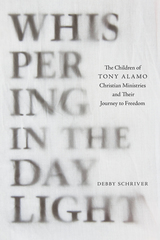 Whispering in the Daylight: The Children of Tony Alamo Christian Ministries and Their Journey to Freedom
Debby Schriver
University of Tennessee Press, 2018 Beginning in the 1960s in California, erstwhile music producer Tony Alamo became interested in authoritarian religion and, along with his charismatic wife, Susan, began gathering followers. By the 1970s, Tony Alamo Christian Ministries had established particularly strong footholds in Arkansas, as well as maintaining outposts in California. The ministry gained a legion of followers, with branches not only in the USA but in places as diverse as Africa and Sri Lanka. Even through their leader’s eventual imprisonment under federal charges (related to transporting minors across state lines for sexual purposes), Alamo’s vision survived—and his community survives him today.
Whispering in the Daylight: The Children of Tony Alamo Christian Ministries and Their Journey to Freedom is based on numerous interviews from group members and, more importantly, on interviews with the children—second and third-generation followers. Author Debby Schriver chronicles how this group was formed, documenting its many abuses and its gradual adoption of cult-like behaviors and practices. Like many cult leaders, Tony Alamo had different faces. The public saw him as a somewhat self-important but harmless music promoter and designer of bedazzling denim jackets. Schriver chronicles firsthand the condemnation, rejection, and torment that the second-generation survivors of Tony Alamo’s abuses experienced. Schriver’s interviews, particularly those with children, illuminate the real horrors of the Alamos’ behavior, ranging from economic exploitation, extreme forced fasts, and beatings, that resulted in permanent injury.
Schriver’s extensive research—including interviews with Tony Alamo himself, harrowing visits to Alamo compounds, and witnessing gut-wrenching confrontations between freed children and their unreformed parents—tells the story of a closed group whose origins and history are unlikely ever to be definitively unraveled.
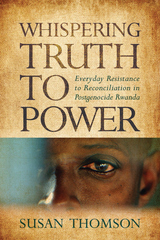 Whispering Truth to Power: Everyday Resistance to Reconciliation in Postgenocide Rwanda
Susan Thomson
University of Wisconsin Press, 2013 For 100 days in 1994, genocide engulfed Rwanda. Since then, many in the international community have praised the country's postgenocide government for its efforts to foster national unity and reconciliation by downplaying ethnic differences and promoting "one Rwanda for all Rwandans." Examining how ordinary rural Rwandans experience and view these policies, Whispering Truth to Power challenges the conventional wisdom on postgenocide Rwanda. Susan Thomson finds that many of Rwanda's poorest citizens distrust the local officials charged with implementing the state program and believe that it ignores the deepest problems of the countryside: lack of land, jobs, and a voice in policies that affect lives and livelihoods. Based on interviews with dozens of Rwandan peasants and government officials, this book reveals how the nation's disenfranchised poor have been engaging in everyday resistance, cautiously and carefully—"whispering" their truth to the powers that be. This quiet opposition, Thomson argues, suggests that some of the nation's most celebrated postgenocide policies have failed to garner the grassroots support needed to sustain peace.
“Reveals the lengths [to which] the current government has gone to restructure all spaces of Rwandan society, and how Rwandans continue to resist this state interference in their everyday lives.”—Ethnic and Racial Studies
“Thomson’s elegant research is praiseworthy and her arguments are forthright. . . . This important publication will be of great value to scholars of Rwanda and genocide as well as students of reconciliation politics and transitional justice.”—Human Rights Quarterly
“Sobering and disturbing. . . . The peasant peoples’ resistance to official policies of national unity and reconciliation emerged because these national schemes do not reflect the peasants’ own lived realities and experiences of state power, genocide, and day-to-day living within their communities. Instead, these official policies disrupt everyday life and endanger existing networks of mutual support and dependence.”—Canadian Journal of Development Studies
Outstanding Academic Title, Choice Magazine
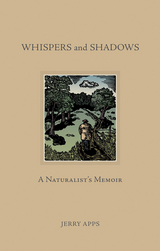 Whispers and Shadows: A Naturalist’s Memoir
Jerry Apps
Wisconsin Historical Society Press, 2015 In these times of technological innovation and fast-paced electronic communication, we often take nature for granted—or even consider it a hindrance to our human endeavors. In Whispers and Shadows: A Naturalist’s Memoir, Jerry Apps explores such topics as the human need for wilderness, rediscovering a sense of wonder, and his father’s advice to “listen for the whispers” and “look in the shadows” to learn nature’s deepest lessons.
Combining his signature lively storytelling and careful observations of nature, Apps draws on a lifetime of experiences, from his earliest years growing up on a central Wisconsin farm to his current ventures as gardener, tree farmer, and steward of wetlands, prairies, and endangered Karner blue butterflies. He also takes inspiration from the writings of Aldo Leopold, Annie Dillard, Henry David Thoreau, Sigurd Olson, Ralph Waldo Emerson, John Muir, Barbara Kingsolver, Wendell Berry, Richard Louv, and Rachel Carson. With these eloquent essays, Jerry Apps reminds us to slow down, turn off technology, and allow our senses to reconnect us to the natural world. For it is there, he writes, that “I am able to return to a feeling I had when I was a child, a feeling of having room to stretch my arms without interfering with another person, a feeling of being a small part of something much larger than I was, and I marvel at the idea.”
 Whispers In The Dark: The Fiction of Louisa May Alcott
Elizabeth Lennox Keyser
University of Tennessee Press, 1995 For decades readers accepted Louisa May Alcott's sentimental portrayal of the domestic world of women and children as evidence of her wholehearted support of the conservative ideologies of Victorian America. The women's movement of the 1970s sparked a reexamination of Alcott's writings, revealing a more radical vein but failing to establish the extent to which this impulse was realized. In an effort to clarify Alcott's intent, Elizabeth Keyser examines representative works: the sensation stories "A Whisper in the Dark," "A Marble Woman," and "Behind a Mask"; the children's classics Little Women, Little Men, and Jo's Boys; and the novels for adults Moods, Work, and Diana and Persis. Keyser discerns in all three genres self-portraits or metafictions that convey what it meant to be a Victorian woman writer. Alcott's wealth of allusion to other writers, such as Charlotte Bronte, Margaret Fuller, and, especially, Nathaniel Hawthorne, and of recurring motifs such as textiles, texts, and theatricals reveals her consistent subversion of conventional values for women. Keyser shows that beneath the mildly progressive feminism of her domestic and children's fiction lurks the more radical feminism of the Gothic thrillers. In some works Alcott symbolically conveys her vision of a feminist future in which men and women fulfill their androgynous potential and live in a harmonious state of equality. But in her most sustained critique of gender relations, the Little Women trilogy, Alcott betrays grave misgivings about the possibility of such a future.
 Whispers in the Echo Chamber: Folklore and the Role of Conspiracy Theory in Contemporary Society
Edited by Jesse A. Fivecoate and Andrea Kitta
University of Wisconsin Press, 2025 Whispers in the Echo Chamber: Folklore and the Role of Conspiracy Theory in Contemporary Society makes the case that conspiracy theories are fundamentally a folklore genre, akin to and often involving other belief narratives like rumor and legend. The editors and contributors show that studying conspiracy theories using the tools of folkloristics is a fruitful and necessary analytical exercise. The volume’s three parts lay out folkloristic approaches to conspiracy theories; ways folkloristics can help us understand how conspiracy theories are constructed; and how the genre of conspiracy theories interacts with particular, contemporary political contexts.
This timely volume complements studies from political science, sociology, psychology, history, and more, while also crucially calling for the field of folklore studies to engage more assertively with conspiracy theories as a genre. Focusing on modern iterations of sometimes quite ancient conspiracy motifs and themes, the editors and contributors forcibly illustrate the crucial relevance of this prevalent and influential form of folklore in today’s interconnected world.
Contributors: Matthew D. Atkinson, John Bodner, Ian Brodie, Darin DeWitt, Bill Ellis, Jesse A. Fivecoate, Sandra Grady, David Guignion, Pavan Holur, Andrea Kitta, Afsane Rezaei, Vwani Roychowdhury, Lisa M. Ruch, Shadi Shahsavari, Timothy R. Tangherlini, Jeannie Banks Thomas, Anika Wilson
 Whispers in the Pines: A Naturalist in the Northeast
Burger, Joanna
Rutgers University Press, 2006 In this book, naturalist Joanna Burger takes us on a series of delightful trips through the Pine Barrens. From the Albany Pine Bush, the Long Island Barrens, and the New Jersey Pine Barrens in the Northeast, to the pinelands of South Carolina and Florida, Burger describes in lively detail how these habitats have come to harbor such a unique assemblage of species. She introduces us to amphibians and reptiles, neotropical migrants and other birds, and a range of common and unusual mammals. Burger also traces the regions’ historic and geologic backgrounds, and the impact of human occupation from the time of the paleo-Indians to the present. She revisits the tension between development and preservation, reminding us that a healthy pine barren region requires uninterrupted land and rejuvenating fires, both of which are increasingly jeopardized. Whispers in the Pines is essential reading for everyone concerned with the history and preservation of these unique landscapes and their wildlife.
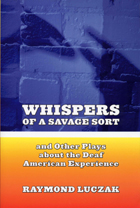 Whispers of a Savage Sort: And Other Plays about the Deaf American Experience
Raymond Luczak
Gallaudet University Press, 2009 “Oh, why can’t the deaf community be more like a family?” is the plaint of a character in Raymond Luczak’s title play Whispers of a Savage Sort. It also goes far in characterizing the main thread that runs through his remarkable collection of work offered in this new volume. Whispers of a Savage Sort and Other Plays about the Deaf American Experience presents a progression of plays that depict Deaf people in situations well-known by the community’s members. Written to be signing-driven, these plays feature Deaf characters from the various strata of Deaf society. Each play centers on different yet equally familiar issues.
Snooty brings to life the difficulties of surviving the social pecking order in a deaf residential school. The main character’s only escape is a rich fantasy life in which he is in control. Doogle confronts its characters with the intrusion of technological communication devices parallel to the virtually forced intimacy of such a small, close community. Brought into stark focus by the specter of AIDS, Love in My Veins explores how trust, betrayal, and ultimately forgiveness can transform a Deaf couple’s love for each other in a Deaf community. The collection’s eponymous Whispers of a Savage Sort reveals the relentless damage that rumor and innuendo can do to a diverse group of Deaf individuals. The emotions, identities, and consequences created by Luczak in these dramas illuminate the Deaf American community in fascinating detail rarely seen in any medium today.
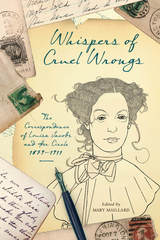 Whispers of Cruel Wrongs: The Correspondence of Louisa Jacobs and Her Circle, 1879-1911
Edited by Mary Maillard
University of Wisconsin Press, 2020 Louisa Jacobs was the daughter of Harriet Jacobs, author of the famous autobiography Incidents in the Life of a Slave Girl. That work included a heartbreaking account of Harriet parting with six-year-old Louisa, taken away to the North by her white father. Now, rediscovered letters reveal the lives of Louisa and her circle and shed light on Harriet's old age.
New voices call out from the lost world of nineteenth-century African American women in this annotated correspondence. Unidentified for nearly one hundred years, over seventy rare letters from Louisa Jacobs, Annie Purvis, and Charlotte Forten to their friend Eugenie Webb disclose the lives of these educated, resourceful women. Jacobs taught at Howard University, ran her own small business, advocated for civil rights, cared for her ailing mother, and worked for two federal agencies. Purvis, Forten, and Webb were descendants of some of Philadelphia's earliest free black abolitionist families. Sustained by friendship and faith, these women created warm and sympathetic relationships, despite difficult family obligations and the racist strife that marked the post-Reconstruction era in Washington, Philadelphia, and New Jersey.
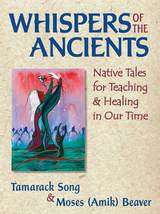 Whispers of the Ancients: Native Tales for Teaching and Healing in Our Time
Tamarack Song and Moses (Amik) Beaver
University of Michigan Press, 2010 "Whispers of the Ancients helps us reconnect with the spirit of story that is a part of all our heritages. With respect for the wisdom of the past and with an eye toward the cross-cultural links that legends can make between us, Tamarack Song offers a gathering of tales and insightful comments that point the way back to the circle."
---Joseph Bruchac, author of more than 70 books for children and adults, including (with coauthor Michael J. Caduto) the best-selling Keepers of the Earth: Native American Stories and Environmental Activities for Children It's easy to imagine yourself transported back to a time when an Elder might have told stories like those in Whispers of the Ancients around a glowing hearth. Thanks to Tamarack Song's storytelling skills, monsters, heroes, and shapeshifters come alive and open a doorway to the mysteries of life. Easily accessible to all ages, this is a book that speaks to each person at his or her own level of comprehension and need. It is as beautiful to read as it is to look at. Stunning Aboriginal artwork by Moses (Amik) Beaver combines with provocative storytelling to renew, in all their traditional splendor, exceptional legends from around the world. Entertaining, profound, passionate, glorious---these are stories that illustrate and evoke themes common to everyone's life, with an ancient wisdom that helps the listener to cope with today's opportunities for tenderness, grief, passion, and irony. Easily accessible to all ages, this is a book that speaks to each person at his or her own level of comprehension and need. It's as beautiful to read as it is to look at. Tamarack Song has sought out the stories of the North African and Central Asian tribal peoples from whom he is descended, and he has listened to the tales of indigenous people from the tundra to the tropics. His books include Journey to the Ancestral Self, and he has contributed to Lois Einhorn's Forgiveness and Child Abuse. He is also a counselor, wilderness skills teacher, rites-of-passage guide, and founder of the Teaching Drum Outdoor School. Song lives in the Nicolet National Forest near Three Lakes, Wisconsin. Moses (Amik) Beaver is an Ojibwe artist from the isolated fly-in community of Nibinamik (Summer Beaver), Ontario, three hundred miles north of Lake Superior. Grants from the Ontario Arts Council and other sources support his ongoing work with youth, and partial support for this book's illustrations comes from the District School Board of Nibinamik.
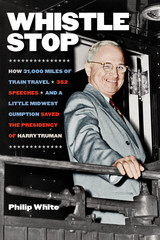 Whistle Stop: How 31,000 Miles of Train Travel, 352 Speeches, and a Little Midwest Gumption Saved the Presidency of Harry Truman
Philip White
University Press of New England, 2015 President Harry Truman was a disappointment to the Democrats, and a godsend to the Republicans. Every attempt to paint Truman with the grace, charm, and grandeur of Franklin Delano Roosevelt had been a dismal failure: Truman’s virtues were simpler, plainer, more direct. The challenges he faced—stirrings of civil rights and southern resentment at home, and communist aggression and brinkmanship abroad—could not have been more critical. By the summer of 1948 the prospects of a second term for Truman looked bleak. Newspapers and popular opinion nationwide had all but anointed as president Thomas Dewey, the Republican New York Governor. Truman could not even be certain of his own party’s nomination: the Democrats, still in mourning for FDR, were deeply riven, with Henry Wallace and Strom Thurmond leading breakaway Progressive and Dixiecrat factions. Finally, with ingenuity born of desperation, Truman’s aides hit upon a plan: get the president in front of as many regular voters as possible, preferably in intimate settings, all across the country. To the surprise of everyone but Harry Truman, it worked. Whistle Stop is the first book of its kind: a micro-history of the summer and fall of 1948 when Truman took to the rails, crisscrossing the country from June right up to Election Day in November. The tour and the campaign culminated with the iconic image of a grinning, victorious Truman holding aloft the famous Chicago Tribune headline: “Dewey Defeats Truman.”
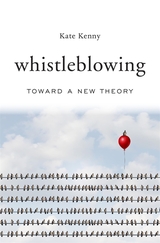 Whistleblowing: Toward a New Theory
Kate Kenny
Harvard University Press, 2019 Society needs whistleblowers, yet to speak up and expose wrongdoing often results in professional and personal ruin. Kate Kenny draws on the stories of whistleblowers to explain why this is, and what must be done to protect those who have the courage to expose the truth.
Despite their substantial contribution to society, whistleblowers are considered martyrs more than heroes. When people expose serious wrongdoing in their organizations, they are often punished or ignored. Many end up isolated by colleagues, their professional careers destroyed. The financial industry, rife with scandals, is the focus of Kate Kenny’s penetrating global study. Introducing whistleblowers from the United States, the United Kingdom, Switzerland, and Ireland working at companies like Wachovia, Halifax Bank of Scotland, and Countrywide–Bank of America, Whistleblowing suggests practices that would make it less perilous to hold the powerful to account and would leave us all better off.
Kenny interviewed the men and women who reported unethical and illegal conduct at major corporations in the run up to the 2008 financial crisis. Many were compliance officers working in influential organizations that claimed to follow the rules. Using the concept of affective recognition to explain how the norms at work powerfully influence our understandings of right and wrong, she reframes whistleblowing as a collective phenomenon, not just a personal choice but a vital public service.
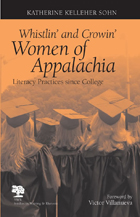 Whistlin' and Crowin' Women of Appalachia: Literacy Practices Since College
Katherine Kelleher Sohn. Foreword by Victor Villanueva
Southern Illinois University Press, 2006 Even some enlightened academicians automatically—and incorrectly—connect illiteracy to Appalachia, contends Katherine Kelleher Sohn. After overhearing two education professionals refer to the southern accent of a waiter and then launch into a few redneck jokes, Sohn wondered why rural, working-class white people are not considered part of the multicultural community. Whistlin’ and Crowin’ Women of Appalachia: Literacy Practices since College examines the power of women to rise above cultural constraints, complete their college degrees, assume positions of responsibility, and ultimately come to voice. Sohn, a born southerner and assimilated Appalachian who moved from the city more than thirty years ago, argues that an underclass of rural whites is being left out of multicultural conversations. She shares how her own search for identity in the academic world (after enrolling in a doctoral program at age fifty) parallels the journeys of eight nontraditional, working-class women. Through interviews and case studies, Sohn illustrates how academic literacy empowers women in their homes, jobs, and communities, effectively disproving the Appalachian adage: “Whistlin’ women and crowin’ hens, always come to no good ends.” Sohn situates the women’s stories within the context of theory, self confidence, and place. She weaves the women’s words with her own, relating voice to language, identity, and power. As the women move from silence to voice throughout and after college—by maintaining their dialect, discovering the power of expressivist writing, gaining economic and social power, and remaining in their communities—they discover their identity as strong women of Appalachia. Sohn focuses on the power of place, which figures predominantly in the identity of these women, and colorfully describes the region. These Appalachian women who move from silence to voice are the purveyors of literacy and the keepers of community, says Sohn. Serving as the foundation of Appalachian culture in spite of a patriarchal society, the women shape the region even as it shapes them. Geared to scholars of literacy studies, women’s studies, and regional studies, Whistlin’ and Crowin’ Women of Appalachia will also resonate with those working with other marginalized populations who are isolated economically, geographically, or culturally.
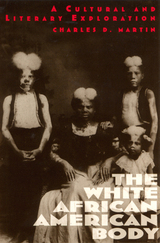 The White African American Body
Martin, Charles D.
Rutgers University Press, 2002 Blacks with white skin. Since colonial times, showmen have exhibited the bodies of African Americans with white or gradually whitening skin in taverns, dime museums, and circus sideshows. The term "white Negro" has served to describe an individual born with albinism as well as those who have vitiligo, a disorder that robs the skin of its pigment in ever-growing patches. In The White African American Body, Charles D. Martin examines the proliferation of the image of the white Negro in American popular culture, from the late eighteenth century to the present day. This enigmatic figure highlights the folly of the belief in immutable racial differences. If skin is a race marker, what does it mean for blacks literally to be white? What does this say not only about blacks but also about whites? Scientists have probed this mystery, philosophers have pondered its meaning, and artists have profited from the sale of images of these puzzling figures. Lavishly illustratedwith many rarely seen photographsThe White African American Body shows how the white Negro occupied, and still occupies, the precarious position between white and black, and how this figure remains resilient in American culture.
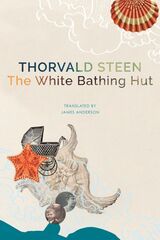 The White Bathing Hut
Thorvald Steen
Seagull Books, 2021 A novel about disability, family secrets, and Norway’s eugenic past.
The White Bathing Hut is a genetic detective story. The narrator uses a wheelchair because of an inherited illness that has caused his muscle tissue to degenerate, making him unable to walk. One day, he falls from his wheelchair. His family is away, his cell phone out of reach, and he has no choice but to lie on the floor of his apartment, dissecting his life, until help arrives. He recalls his parents’ reactions of shame and silence when, as a teenager, his illness was first diagnosed. Now in her old age, his mother remains stubbornly secretive. A chance call from a cousin provides the narrator with clues about his grandfather and uncle, whom he never met and who both also had the disease. His search for the truth about his heredity is given new urgency when his mother is diagnosed with cancer. He must persuade her to speak before she dies, for his own sake and for his daughter’s. The White Bathing Hut is an indictment of contemporary Norwegian society, which claims to abhor its history of eugenics, yet still seeks to control the lives of people with disabilities.
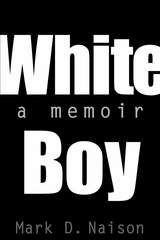 White Boy: A Memoir
Mark D. Naison
Temple University Press, 2002 How does a Jewish boy who spent the bulk of his childhood on the basketball courts of Brooklyn wind up teaching in one of the city's pioneering black studies departments? Naison's odyssey begins as Brooklyn public schools respond to a new wave of Black migrants and Caribbean immigrants, and established residents flee to virtually all-white parts of the city or suburbs. Already alienated by his parents' stance on race issues and their ambitions for him, he has started on a separate ideological path by the time he enters Columbia College. Once he embarks on a long-term interracial relationship, becomes a member of SDS, focuses his historical work on black activists, and organizes community groups in the Bronx, his immersion in the radical politics of the 1960s has emerged as the center of his life. Determined to keep his ties to the Black community, even when the New Left splits along racial lines, Naison joined the fledgling African American studies program at Fordham, remarkable then as now for its commitment to interracial education.This memoir offers more than a participant's account of the New Left's racial dynamics; it eloquently speaks to the ways in which political commitments emerge from and are infused with the personal choices we all make.
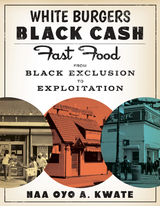 White Burgers, Black Cash: Fast Food from Black Exclusion to Exploitation
Naa Oyo A. Kwate
University of Minnesota Press, 2023 The long and pernicious relationship between fast food restaurants and the African American community - James Beard Foundation: James Beard Media Award for Reference, History, and Scholarship — Winner
- Urban Affairs Association Best Book in Urban Affairs — Winner
- Association for Humanist Sociology Betty and McClung Lee Book Award — Winner
- Black Caucus of the American Library Association — Honor, Nonfiction category
- Museum of African American History Stone Book Award — Shortlist
- Business History Conference: Hagley Prize — Finalist
- Association for the Study of Food and Society: ASFS Book Award — Winner
- Society for the Study of Social Problems: Eduardo Bonilla-Silva Outstanding Book Award — Winner
- Foreword: INDIES — Silver winner, History category
Today, fast food is disproportionately located in Black neighborhoods and marketed to Black Americans through trgeted advertising. But throughout much of the twentieth century, fast food was developed specifically for White urban and suburban customers, purposefully avoiding Black spaces. In White Burgers, Black Cash, Naa Oyo A. Kwate traces the evolution in fast food from the early 1900s to the present, from its long history of racist exclusion to its current damaging embrace of urban Black communities. Fast food has historically been tied to the country’s self-image as the land of opportunity and is marketed as one of life’s simple pleasures, but a more insidious history lies at the industry’s core. White Burgers, Black Cash investigates the complex trajectory of restaurant locations from a decided commitment to Whiteness to the disproportionate densities that characterize Black communities today. Kwate expansively charts fast food’s racial and spatial transformation and centers the cities of Chicago, New York City, and Washington, D.C., in a national examination of the biggest brands of today, including White Castle, KFC, Burger King, McDonald’s, and more. Deeply researched, compellingly told, and brimming with surprising details, White Burgers, Black Cash reveals the inequalities embedded in America’s popular national food tradition.
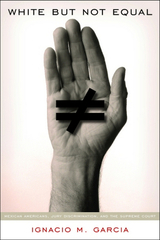 White But Not Equal: Mexican Americans, Jury Discrimination, and the Supreme Court
Ignacio M. García
University of Arizona Press, 2008 Check out "A Class Apart" - the new PBS American Experience documentary that explores this historic case! In 1952 in Edna, Texas, Pete Hernández, a twenty-one-year-old cotton picker, got into a fight with several men and was dragged from a tavern, robbed, and beaten. Upon reaching his home he collected his .22-caliber rifle, walked two miles back to the tavern, and shot one of the assailants. With forty eyewitnesses and a confession, the case appeared to be open and shut. Yet Hernández v. Texas turned into one of the nation’s most groundbreaking Supreme Court cases. Ignacio García’s White But Not Equal explores this historic but mostly forgotten case, which became the first to recognize discrimination against Mexican Americans. Led by three dedicated Mexican American lawyers, the case argued for recognition of Mexican Americans under the 14th Amendment as a “class apart.” Despite a distinct history and culture, Mexican Americans were considered white by law during this period, yet in reality they were subjected to prejudice and discrimination. This was reflected in Hernández’s trial, in which none of the selected jurors were Mexican American. The concept of Latino identity began to shift as the demand for inclusion in the political and judicial system began. García places the Hernández v. Texas case within a historical perspective and examines the changing Anglo-Mexican relationship. More than just a legal discussion, this book looks at the whole case from start to finish and examines all the major participants, placing the story within the larger issue of the fight for Mexican American civil rights.
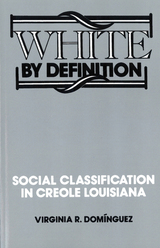 White By Definition: Social Classification in Creole Louisiana
Dominguez, Virginia
Rutgers University Press, 1993 "A profound study of the nebulous Creoles. . . . Domínguez's use of original sources . . . is scholarship at its best. . . . Her study is fascinating, thought-provoking, controversial, and without a doubt, one of the most objective analyses of Creole Louisiana. Her emphasis on social stratification and her excellent integration of ethnic and racial classification of Creoles with legal and social dynamics and individual choice of ethnic identity elucidates strikingly the continuing controversy of who and what is a Louisiana Creole."--Journal of American Ethnic History
"Domínguez's most important contribution lies in her conceptualization of the problem of identity. She treats ethnic identity as something that can change over time, warning us against imposing current meanings on the past and requiring us to consider evidence of how terms were actually used in the past. . . . It is hard to imagine a frame of reference more ideally suited to historical analysis."--Louisiana History
"A valuable interdisciplinary examination of the processes of racial definition in Louisiana's history. Her study combines the anthropologist's sensitivity to language and self definition within a community with a skillful exploitation of historical sources."--Law and Society
"I highly recommend this book to all persons interested in social stratification."--Alvin L. Bertrand, Contemporary Sociology
"A vivid and insightful reading of the historical circumstances that have shaped definitions of Creoles within Louisiana law and society."--Journal of Southern History
"A profound study of the nebulous Creoles. . . . Domínguez's use of original sources . . . is scholarship at its best. . . . Her study is fascinating, thought-provoking, controversial, and without a doubt, one of the most objective analyses of Creole Louisiana. Her emphasis on social stratification and her excellent integration of ethnic and racial classification of Creoles with legal and social dynamics and individual choice of ethnic identity elucidates strikingly the continuing controversy of who and what is a Louisiana Creole."--Journal of American Ethnic History
"Domínguez's most important contribution lies in her conceptualization of the problem of identity. She treats ethnic identity as something that can change over time, warning us against imposing current meanings on the past and requiring us to consider evidence of how terms were actually used in the past. . . . It is hard to imagine a frame of reference more ideally suited to historical analysis."--Louisiana History
"A valuable interdisciplinary examination of the processes of racial definition in Louisiana's history. Her study combines the anthropologist's sensitivity to language and self definition within a community with a skillful exploitation of historical sources."--Law and Society
"I highly recommend this book to all persons interested in social stratification."--Alvin L. Bertrand, Contemporary Sociology
"A vivid and insightful reading of the historical circumstances that have shaped definitions of Creoles within Louisiana law and society."--Journal of Southern History
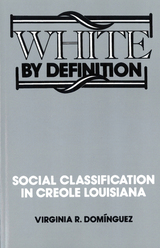 White By Definition: Social Classification in Creole Louisiana
Virginia Domínguez
Rutgers University Press, 1986 "An unusual and powerful study."--Eric R. Wolf, Herbert H. Lehman College, CUNY "A profound study of the nebulous Creoles. . . . Domínguez's use of original sources . . . is scholarship at its best. . . . Her study is fascinating, thought-provoking, controversial, and without a doubt, one of the most objective analyses of Creole Louisiana. Her emphasis on social stratification and her excellent integration of ethnic and racial classification of Creoles with legal and social dynamics and individual choice of ethnic identity elucidates strikingly the continuing controversy of who and what is a Louisiana Creole."--Journal of American Ethnic History "Domínguez's most important contribution lies in her conceptualization of the problem of identity. She treats ethnic identity as something that can change over time, warning us against imposing current meanings on the past and requiring us to consider evidence of how terms were actually used in the past. . . . It is hard to imagine a frame of reference more ideally suited to historical analysis."--Louisiana History "A valuable interdisciplinary examination of the processes of racial definition in Louisiana's history. Her study combines the anthropologist's sensitivity to language and self definition within a community with a skillful exploitation of historical sources."--Law and Society "I highly recommend this book to all persons interested in social stratification."--Alvin L. Bertrand, Contemporary Sociology "A vivid and insightful reading of the historical circumstances that have shaped definitions of Creoles within Louisiana law and society."--Journal of Southern History "A provocative, often brilliant book. It offers fresh perspectives on fundamental questions and deserves a wide readership among American social historians."--Journal of American History
 White Care: The Impact of Race on American Infrastructure
Cotten Seiler
University of Chicago Press Framing infrastructure as the expression of a state’s care for its population, White Care explores the crucial role of race in the building, maintenance, scope, and quality of US infrastructure.
Infrastructure delivers to its users a range of benefits, from health, safety, and sanitation to mobility, energy, and education. It is, as Cotten Seiler argues, how modern states show care for their populations. White Care recounts the rise and fall of public infrastructure in the United States, unearthing its origins as an investment in those Americans deemed most highly evolved, showing the political stakes of its desegregation, and accounting for its current state of dilapidation.
From the late nineteenth century through much of the twentieth, government investments in physical (“hard”) and social (“soft”) infrastructure constituted a regime of care that Seiler calls “custodial liberalism.” This regime achieved legitimacy with the New Deal, which conferred upon white citizens a bounty of life-enhancing public works. But custodial liberalism began to unravel in the postwar decades, as Americans of color gained access to public schools, housing, swimming pools, parks, and other sites from which they had long been excluded. As the infrastructural commons were desegregated, white Americans withdrew from the social compact that had empowered them and turned toward neoliberalism, with its program of austerity and privatization. This racialized renunciation has deprived everyone—including themselves—of a cleaner, greener, healthier, safer, more affordable, and more functional environment.
 The White Cell
Martin J. Cline
Harvard University Press, 1975 This is the only comprehensive and critical account, in a single volume, of the leukocytes. It cuts across scientific and clinical disciplines to provide a unified review of granulocytes, monocytes, and lymphocytes, both as individual cell types and as they form an integrated system of defense against the body's foreign invaders. Sections on each cell type discuss first normal and then abnormal aspects of morphogenesis and morphology, the kinetics of production, distribution, life span, metabolism and function. Specific disease states are reviewed in the context of pathophysiological mechanisms.
Readable, and beautifully illustrated with photomicrographs, electron micrographs, diagrams and drawings, this book will serve a broad audience of physicians and scientists as well as students seeking a basic grounding in the field. More than 6,000 references are cited; the reader will find a perspective on the historical development of leukocyte biology as well as a current summary of a rapidly changing field. Not only hematologists, but workers in the basic disciplines of immunology and cell biology, and in the clinical fields of oncology, genetics, infectious disease, surgery, and related areas, will turn to this book as the fundamental teaching and reference work on white cells.
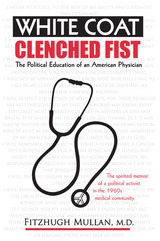 White Coat, Clenched Fist: The Political Education of an American Physician
Fitzhugh Mullan, M.D.
University of Michigan Press, 2006 In the sixties, Fitzhugh Mullan was an activist in the civil rights struggle. While in medical school, Mullan was shocked by gaps in what the students learned, and the lack of humanity in the classroom. Later, Dr. Mullan was outraged at the conditions he discovered when he began to practice. He helped found the Student Health Organization, organized the Controversial Medical Collective at Lincoln Hospital in the Bronx, and struggled to offer improved medical care to those who needed it most and could afford it least. This landmark book charts the state of medical school and practices in the 1960s and 70s. This new edition is updated with a preface in which Dr. Mullan reflects on the changes in the medical field over the last thirty-plus years. Fitzhugh Mullan is Murdock Head Professor of Medicine and Health Policy at George Washington University. He worked at the U.S. Public Health Service where he attained the rank of Assistant Surgeon General (1991-1996). Dr. Mullan is the co-founder of the National Coalition for Cancer Survivorship and the author of numerous books, including Plagues and Politics: The Story of the United States Public Health Service, and his most recent book, Narrative Matters: The Power of the Personal Essay in Health Policy.
 White Collar Radicals: TVA’s Knoxville Fifteen, the New Deal, and the McCarthy Era
Aaron D. Purcell
University of Tennessee Press, 2009 “This book will make a real contribution to the history of McCarthyism, the history of Tennessee, and the history of TVA.” —Russell B. Olwell, At Work in the Atomic City: A Labor and Social History of Oak Ridge, Tennessee
They came from all corners of the country-fifteen young, idealistic, educated men and women drawn to Knoxville, Tennessee, to work for the Tennessee Valley Authority, one of the first of President Franklin D. Roosevelt's New Deal projects. Mostly holding entry-level jobs, these young people became friends and lovers, connecting to one another at work and through other social and political networks..
What the fifteen failed to realize was that these activities-union organizing and, for most, membership in the Communist Party-would plunge them into a maelstrom that would endanger, and for some, destroy their livelihoods, social standing, and careers. White Collar Radicals follows their lives from New Deal activism in the 1930s through the 1940s and 1950s government investigations into what were perceived as subversive deeds.
Aaron D. Purcell shows how this small group of TVA idealists was unwillingly thrust from obscurity into the national spotlight, victims and participants of the second? [not sure is it is needed] Red Scare in the years following World War II. The author brings into sharp focus the determination of the government to target and expose alleged radicals of the 1930s during the early Cold War period. The book also demonstrates how the national hysteria affected individual lives.
White Collar Radicals is both a historical study and a cautionary tale. The Knoxville Fifteen, who endured the dark days of the McCarthy Era, now have their story told for the first time-a story that offers modern-day lessons on freedom, civil liberties, and the authority of the government.
Aaron D. Purcell is an associate professor and director of special collections at Virginia Tech in Blacksburg
White Death: The Epic of the Soviet-Finnish Winter War
Allen F. Chew
Michigan State University Press, 1971 The 105-day war between Finland and the Soviet Union in the winter of 1939-1940 has been overshadowed by the larger conflicts of the Second World War, which followed closely after it. The courageous resistence of the only neighbor of Stalin's Russia, which fought the Red Army and survived as a free and independent nation merits this closer look. Although the diplomatic background of the Winter War has been covered before, this is the first substantial English-language study of its dramatic military encounters.
White Decimal
Jean Daive
Omnidawn, 2017 “The publication of Décimale blanche in 1967 marked a major shift in French poetry, introducing an entirely new sensibility. Fifty years later, Norma Cole’s superb new translation is no less exciting. Not only is it a masterful rendition of this classic, capturing all its spare force and uncanny grace, but it also stands in its own right as an important contribution to American poetry. White Decimal is a striking literary event, and an extremely beautiful one.” —Cole Swensen, author of Noise That Stays Noise
White Dog
Romain Gary
University of Chicago Press, 2004 Both a personal memoir and a French novelist's encounter with American reality, White Dog is an unforgettable portrait of racism and hypocrisy. Set in the tumultuous Los Angeles of 1968, Romain Gary's story begins when a German shepherd strays into his life: "He was watching me, his head cocked to one side, with that unbearable intensity of dogs in the pound waiting for a rescuer." A lost police canine, this "white dog" is programmed to respond violently to the sight of a black man and Gary's attempts to deprogram it—like his attempts to protect his wife, the actress Jean Seberg; like her endeavors to help black activists; like his need to rescue himself from the "predicament of being trapped, lock, stock and barrel within a human skin"—lead from crisis to grief.
Using the re-education of this adopted pet as a metaphor for the need to quash American racism, Gary develops a domestic crisis into a full-scale social allegory.
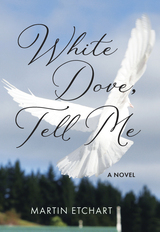 White Dove, Tell Me: A Novel
Martin Etchart
University of Nevada Press, 2024 In the town of Urepel, Arizona, Xabier Etxea, a young Basque-American sheep rancher, and his wife grapple with the rituals, mores, and spirituality of their heritage and the realities of living in the new American West. Their tenuous balance of the past and the present is disrupted when Xabier’s father is unexpectedly killed.
In the wake of this tragedy, Xabier learns that not only is the family ranch in jeopardy of foreclosure but his father’s death may not have been the accident it first appeared to be. Now, he must find a way to save his family’s ranch while unraveling the mysteries leading to his father’s death. Along the way, Xabier strives to adhere to his father’s memory and words—the invitation to stay true to who he is without losing his arima (soul).
In lyrical language that evokes the mythologies that have shaped the Etxeas’s worldview, White Dove, Tell Me speaks to the divided self that seeks to honor the family’s Basque heritage, while they strive for understanding in a new land.
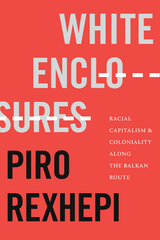 White Enclosures: Racial Capitalism and Coloniality along the Balkan Route
Piro Rexhepi
Duke University Press, 2022 For all its history of intersecting empires, the Balkans has been rarely framed as a global site of race and coloniality. This, as Piro Rexhepi argues in White Enclosures is not surprising, given the perception of the Balkans as colorblind and raceless, a project that spans post-Ottoman racial formations, transverses Socialist modernity and is negotiated anew in the process of postsocialist Euro-Atlantic integration. Connecting severed colonial histories from the vantage point of body politic, Rexhepi turns to the borderland zones of the Balkans to trace past and present geopolitical attempts of walling whiteness. From efforts to straighten the sexualities of post-Ottoman Muslim subjects, to Yugoslav nonaligned solidarities between Muslims of the second and third world, to Roma displacement and contemporary emergence of refugee carceral technologies along the Balkan Route, Rexhepi points not only to the epistemic erasures that maintain the fantasy of whiteness but also to the disruption emanating from the solidarities between queer- and transpeople that fold the Balkans back into global efforts to resist the politics of racial capitalism.
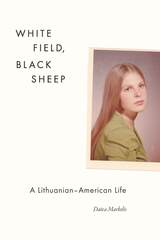 White Field, Black Sheep: A Lithuanian-American Life
Daiva Markelis
University of Chicago Press, 2010 Her parents never really explained what a D.P. was. Years later Daiva Markelis learned that “displaced person” was the designation bestowed upon European refugees like her mom and dad who fled communist Lithuania after the war. Growing up in the Chicago suburb of Cicero, though, Markelis had only heard the name T.P., since her folks pronounced the D as a T: “In first grade we had learned about the Plains Indians, who had lived in tent-like dwellings made of wood and buffalo skin called teepees. In my childish confusion, I thought that perhaps my parents weren’t Lithuanian at all, but Cherokee. I went around telling people that I was the child of teepees.” So begins this touching and affectionate memoir about growing up as a daughter of Lithuanian immigrants. Markelis was raised during the 1960s and 1970s in a household where Lithuanian was the first language. White Field, Black Sheep derives much of its charm from this collision of old world and new: a tough but cultured generation that can’t quite understand the ways of America and a younger one weaned on Barbie dolls and The Brady Bunch, Hostess cupcakes and comic books, The Monkees and Captain Kangaroo. Throughout, Markelis recalls the amusing contortions of language and identity that animated her childhood. She also humorously recollects the touchstones of her youth, from her First Communion to her first game of Twister. Ultimately, she revisits the troubles that surfaced in the wake of her assimilation into American culture: the constricting expectations of her family and community, her problems with alcoholism and depression, and her sometimes contentious but always loving relationship with her mother. Deftly recreating the emotional world of adolescence, but overlaying it with the hard-won understanding of adulthood, White Field, Black Sheep is a poignant and moving memoir—a lively tale of this Lithuanian-American life.
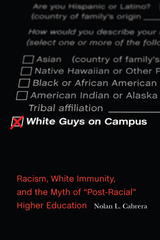 White Guys on Campus: Racism, White Immunity, and the Myth of "Post-Racial" Higher Education
Cabrera, Nolan L
Rutgers University Press, 2019 Winner of the 2019 AERA Division J Outstanding Publication Award and the 2019 ASHE Outstanding Book Award
On April 22, 2015, Boston University professor Saida Grundy set off a Twitter storm with her provocative question: “Why is white America so reluctant to identify white college males as a problem population?” White Guys on Campus is a critical examination of race in higher education, centering Whiteness, in an effort to unveil the frequently unconscious habits of racism among White male undergraduates. Nolan L. Cabrera moves beyond the “few bad apples” frame of contemporary racism, and explores the structures, policies, ideologies, and experiences that allow racism to flourish. This book details many of the contours of contemporary, systemic racism, while engaging the possibility of White students to participate in anti-racism. Ultimately, White Guys on Campus calls upon institutions of higher education to be sites of social transformation instead of reinforcing systemic racism, while creating a platform to engage and challenge the public discourse of “post- racialism.”
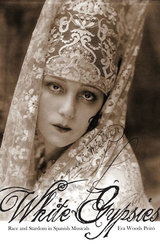 White Gypsies: Race and Stardom in Spanish Musicals
Eva Woods Peiró
University of Minnesota Press, 2012 Little has been written about the Spanish film musical, a genre usually associated with the early Franco dictatorship and dismissed by critics as reactionary, escapist fare. A timely and valuable corrective, White Gypsies shows how the Spanish folkloric musical films of the 1940s and ’50s are inextricably tied to anxious concerns about race—especially, but not only, Gypsiness. Focusing on the processes of identity formation in twentieth-century Spain—with multifaceted readings of the cinematic construction of class, gender, and sexuality—Eva Woods Peiró explores how these popular films allowed audiences to negotiate and imaginatively, at times problematically, resolve complex social contradictions. The intricate interweaving of race and modernity is particularly evident in her scrutiny of a striking popular phenomenon: how the musicals progressively whitened their stars, even as their story lines became increasingly Andalusianized and Gypsified. White Gypsies reveals how these imaginary individuals constituted a veritable cultural barometer of how racial thinking was projected and understood across a broad swath of popular Spanish cinema.
White Heat
Edited, with an introduction by Patrick McGilligan; Tino T. Balio, Series Editor
University of Wisconsin Press, 1984 Among the countless gangster films produced by Hollywood, few are as haunting, complex, or ingeniously crafted as White Heat (1948). Students of film history and screen writing will appreciate this treatment—an engaging study of teh various artistic elements that turned what might have been just another gangster film into an innovative classic of the genre and a model of cooperative filmmaking at its best.
Crucial to White Heat's success, McGilligan stresses, was the rare manner in which every aspect of production coalesced: studio, script, cast, crew, and director.
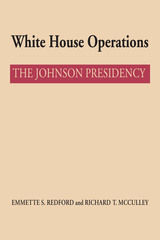 White House Operations: The Johnson Presidency
By Emmette S. Redford; and Richard T. McCulley
University of Texas Press, 1986 The relation of White House assistants to the president, their appropriate role in the governmental process, and the most effective means for organizing and managing the White House have been subjects of both public concern and academic dispute. White House Operations addresses these and related questions by providing the first thorough analysis of how the thirty-sixth president managed his staff. By grounding their study in original documents from the Lyndon B. Johnson Presidential Library, the authors lift the veil of secrecy that clouds the inner workings of the White House. The result is an insightful elaboration of the complex, extensive, and diverse roles of White House aides—and av fascinating look at such key White House figures as McGeorge Bundy, Joseph Califano, Bill Moyers, George Reedy, Walt Rostow, Lawrence O’Brien, and Johnson himself. This exploration of Johnson’s highly personalized White House operations provides far-reaching implications for the nature of effective presidential management. The comprehensive analysis of the range of work done under Johnson and the unique nature of White House assistance leads the authors to a strong and vigorous assertion for a positive role for the White House staff that clashes sharply with the thrust of many recommendations for reorganizing the presidency. Redford and McCulley convincingly demonstrate that management of the White House staff and other parts of the president’s advisory system will remain crucial for successful presidential performance. The book is the fifth volume in a series designed to provide a comprehensive administrative history of the Johnson presidency. The book will be of interest to the informed general reader, presidential scholars, political scientists, U.S. historians, and students of public management and will be an important addition to academic library collections.
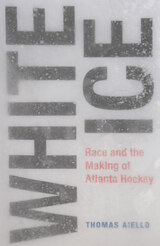 White Ice: Race and the Making of Atlanta Hockey
Thomas Aiello
University of Tennessee Press, 2023 Having skyrocketed from six to fourteen teams between 1966 and 1970, leaders of the National Hockey League had planned to wait a few more years before expanding any further. But as its rivalry with the World Hockey Association intensified, competition for markets rose, and the race for continued expansion became too urgent to ignore. Not to be outdone, the NHL introduced two new teams in 1971: one in Long Island, New York, and one in Atlanta, Georgia.
For its own part, Atlanta had been watching as White residents left the city for the suburbs over the course of the 1960s. As the turn of the decade approached, city leadership was searching for ways to mitigate white flight and bring residents of the surrounding suburbs back to the city center. So when a stereotypically White sport came to the Deep South in 1971 in the form of the Atlanta Flames, ownership saw a new opportunity to appeal to White audiences.
But the challenge would be selling a game that was foreign to most of Atlanta’s longtime sports fans.
Filling a significant gap in scholarly literature concerning race and hockey within US history, White Ice: Race and the Making of Atlanta Hockey is a response to two simple questions: How did a cold-climate sport like hockey end up in a majority Black city in the Deep South? And why did it come when it did? Over seven chronological chapters, Thomas Aiello unpacks the history, culture, and context surrounding these questions, teasing out what the story of the Atlanta Flames can teach us about the NHL, Atlanta, race, and the business of professional sports expansion.
White Identities: A Critical Sociological Approach
Steve Garner and Simon Clarke
Pluto Press, 2009 The study of white ethnicities is becoming increasingly important in the social sciences. This book provides a critical introduction to the topic.
Whiteness has traditionally been seen as "ethnically transparent" - the marker against which other ethnicities are measured. This analysis is clearly incorrect, but only recently have many race and ethnicity scholars moved away from focusing on ethnic minorities and instead oriented their studies around the construction of white identities. Simon Clarke and Steve Garner's book is designed to guide students as they explore how white identities are forged using both sociological and psycho-social ideas.
Including an excellent survey of the existing literature and original research from the UK, this book will be an invaluable guide for sociology students taking modules in race and ethnicity.
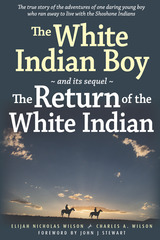 The White Indian Boy: and its sequel The Return of the White Indian Boy
Elijah Nicholas Wilson and Charles A. Wilson
University of Utah Press, 1985 First published in 1910, The White Indian Boy quickly became a western classic. Readers fascinated by real-life 'cowboys and Indians' thrilled to Nick Wilson’s frontier exploits, as he recounted running away to live with the Shoshone in his early teens, riding for the Pony Express, and helping settle Jackson Hole, Wyoming. The volume was so popular that Wilson’s son Charles was compelled to write a second book, The Return of the White Indian, which picks up in 1895 where the first memoir ends, telling the adventures of Nick Wilson’s later life.
These books, published here as a single volume, are testaments to a unique time and place in American history. Because he had a heart for adventure and unusual proficiency with Native American languages, Wilson’s life became an historical canvas on which was painted both the exploration and the closing of a frontier, as he went from childhood among the Shoshone to work as an interpreter for the U.S. government on Indian reservations in Wyoming and Idaho in his later years. This volume includes new introductory material, a family tree, and a background of Indian-white relations in Jackson Hole. Packed with amazing details about life in the Old West, Wilson’s colorful escapades are once again available to a new generation of readers.
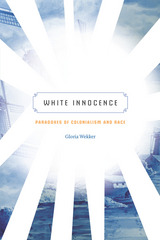 White Innocence: Paradoxes of Colonialism and Race
Gloria Wekker
Duke University Press, 2016 In White Innocence Gloria Wekker explores a central paradox of Dutch culture: the passionate denial of racial discrimination and colonial violence coexisting alongside aggressive racism and xenophobia. Accessing a cultural archive built over 400 years of Dutch colonial rule, Wekker fundamentally challenges Dutch racial exceptionalism by undermining the dominant narrative of the Netherlands as a "gentle" and "ethical" nation. Wekker analyzes the Dutch media's portrayal of black women and men, the failure to grasp race in the Dutch academy, contemporary conservative politics (including gay politicians espousing anti-immigrant rhetoric), and the controversy surrounding the folkloric character Black Pete, showing how the denial of racism and the expression of innocence safeguards white privilege. Wekker uncovers the postcolonial legacy of race and its role in shaping the white Dutch self, presenting the contested, persistent legacy of racism in the country.
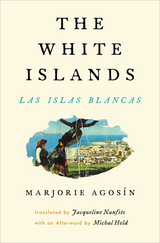 The White Islands / Las Islas Blancas
Marjorie Agosín
Swan Isle Press, 2015 “I only wanted to write about them, / Narrate their fierce audacity, / Their voyages through the channels of the Mediterranean.” So begins a poetic journey through the islands of the Mediterranean that served as homes and refuge for the Sephardic Jews after the Alhambra Decree, which ordered their expulsion from Spain. Inspired by her own journey to Salonika and the Greek Islands, Rhodes, Crete, as well as the Balkans, Marjorie Agosín searches for the remnants of the Sepharad.
Presented in a beautiful bilingual Spanish-English edition, Agosín’s poems speak to a wandering life of exile on distant shores. We hear the rhythm of the waves and the Ladino-inflected voices of Sephardi women past and present: Paloma, Estrella, and Luna in the fullness of their lives, loves, dreams, and faith. An evocative and sensual voyage to communities mostly lost after the Holocaust, The White Islands offers a lighthouse of remembrance, a lyrical world recovered with language and song, lament and joy, longing and hope.
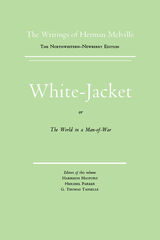 White Jacket, or The World in a Man-of-War: Volume Five, Scholarly Edition
Herman Melville
Northwestern University Press, 1970 Herman Melville wrote White-Jacket; or, The World in a Man-of-War during two months of intense work in the summer of 1849. He drew upon his memories of naval life, having spent fourteen months as an ordinary seaman aboard a frigate as it sailed the Pacific and made the homeward voyage around Cape Horn.
Already that same summer Melville had written Redburn, and he regarded the books as "two jobs, which I have done for money--being forced to it, as other men are to sawing wood." The reviewers were not as hard on White-Jacket as Melville himself was. The English liked its praise of British seamen. The Americans were more interested in Melville's attack on naval abuses, particularly flogging, and his advocacy of humanitarian causes. Soon Melville was acclaimed the best sea writer of the day.
Part autobiography, part epic fiction, White-Jacket remains a brilliantly imaginative social novel by one of the great writers of the sea. This text of the novel is an Approved Text of the Center for Editions of American Authors (Modern Language Association of America).
White Light: The Poetry of Alberto Blanco
Ronald J. Friis
Bucknell University Press, 2022 White Light: The Poetry of Alberto Blanco examines the interplay of complementary images and concepts in the award-winning Mexican writer's cycle of poems from 1979 to 2018. Blanco’s poetic trilogy A la luz de siempre is characterized by its broad range of form and subject and by the poet's own eclectic background as a chemist, maker of collages, and musician. Blanco speaks the language of the visual arts, science, mathematics, music, and philosophy, and creates work with deep interdisciplinary roots. This book explores how polarities such as space and place, reading and writing, sound and silence, visual and verbal representation, and faith and doubt are woven through A la luz de siempre. These complements reveal how Blanco’s poetry, like the phenomenon of white light, embraces paradox and transforms into something more than the sum of its disparate and polychromatic parts.
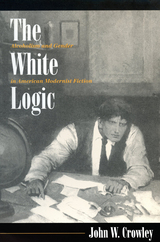 The White Logic: Alcoholism and Gender in American Modernist Fiction
John W. Crowley
University of Massachusetts Press, 1994
The first extended literary analysis to take account of recent work by social historians on the temperance movement, this book examines the relationship between intoxication and addiction in American life and letters during the first half of the twentieth century. In explaining the transition from Victorian to modern paradigms of heavy drinking, Crowley focuses on representative fictions by W. D. Howells (The Landlord at Lion's Head), Jack London (John Barleycorn), Ernest Hemingway (The Sun Also Rises), F. Scott Fitzgerald (Tender Is the Night), John O'Hara (Appointment in Samarra), Djuna Barnes (Nightwood), and Charles Jackson (The Lost Weekend).
Crowley considers the historical formation of "alcoholism" and earlier concepts of habitual drunkenness and their bearing on the social construction of gender roles. He also defines the "drunk narrative," a mode of fiction that expresses the conjunction of modernism and alcoholism in a pervasive ideology of despair--the White Logic of John Barleycorn, London's nihilistic lord of the spirits.
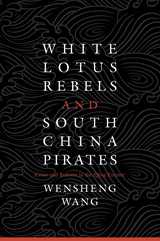 White Lotus Rebels and South China Pirates: Crisis and Reform in the Qing Empire
Wensheng Wang
Harvard University Press, 2014 The reign of Emperor Jiaqing (1796–1820 CE) has long occupied an awkward position in studies of China’s last dynasty, the Qing (1644–1911 CE). Conveniently marking a watershed between the prosperous eighteenth century and the tragic post–Opium War era, this quarter century has nevertheless been glossed over as an unremarkable interlude separating two well-studied epochs of great transformation. White Lotus Rebels and South China Pirates presents a major reassessment of this misunderstood period by examining how the emperors, bureaucrats, and foreigners responded to the two crises that shaped the transition from the Qianlong to the Jiaqing reign.
Wensheng Wang argues that the dramatic combination of internal uprising and transnational piracy, rather than being a hallmark of inexorable dynastic decline, propelled the Manchu court to reorganize itself through a series of modifications in policymaking and bureaucratic structure. The resulting Jiaqing reforms initiated a process of state retreat that pulled the Qing Empire out of a cycle of aggressive overextension and resistance, and back onto a more sustainable track of development. Although this pragmatic striving for political sustainability was unable to save the dynasty from ultimate collapse, it represented a durable and constructive approach to the compounding problems facing the late Qing regime and helped sustain it for another century. As one of the most comprehensive accounts of the Jiaqing reign, White Lotus Rebels and South China Pirates provides a fresh understanding of this significant turning point in China’s long imperial history.
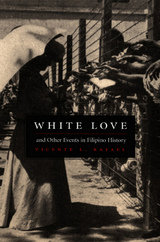 White Love and Other Events in Filipino History
Vicente L. Rafael
Duke University Press, 2000 In this wide-ranging cultural and political history of Filipinos and the Philippines, Vicente L. Rafael examines the period from the onset of U.S. colonialism in 1898 to the emergence of a Filipino diaspora in the 1990s. Self-consciously adopting the essay form as a method with which to disrupt epic conceptions of Filipino history, Rafael treats in a condensed and concise manner clusters of historical detail and reflections that do not easily fit into a larger whole. White Love and Other Events in Filipino History is thus a view of nationalism as an unstable production, as Rafael reveals how, under what circumstances, and with what effects the concept of the nation has been produced and deployed in the Philippines.
With a focus on the contradictions and ironies that suffuse Filipino history, Rafael delineates the multiple ways that colonialism has both inhabited and enabled the nationalist discourse of the present. His topics range from the colonial census of 1903-1905, in which a racialized imperial order imposed by the United States came into contact with an emergent revolutionary nationalism, to the pleasures and anxieties of nationalist identification as evinced in the rise of the Marcos regime. Other essays examine aspects of colonial domesticity through the writings of white women during the first decade of U.S. rule; the uses of photography in ethnology, war, and portraiture; the circulation of rumor during the Japanese occupation of Manila; the reproduction of a hierarchy of languages in popular culture; and the spectral presence of diasporic Filipino communities within the nation-state. A critique of both U.S. imperialism and Filipino nationalism, White Love and Other Events in Filipino History creates a sense of epistemological vertigo in the face of former attempts to comprehend and master Filipino identity.
This volume should become a valuable work for those interested in Southeast Asian studies, Asian-American studies, postcolonial studies, and cultural studies.
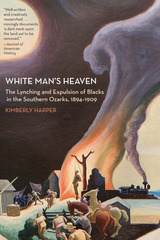 White Man's Heaven: The Lynching and Expulsion of Blacks in the Southern Ozarks, 1894-1909
Kimberly Harper
University of Arkansas Press, 2010 Drawing on court records, newspaper accounts, penitentiary records, letters, and diaries, White Man’s Heaven is a thorough investigation into the lynching and expulsion of African Americans in the Missouri and Arkansas Ozarks in the late nineteenth and early twentieth centuries. Kimberly Harper explores events in the towns of Monett, Pierce City, Joplin, and Springfield, Missouri, and Harrison, Arkansas, to show how post–Civil War vigilantism, an established tradition of extralegal violence, and the rapid political, economic, and social change of the New South era happened independently but were also part of a larger, interconnected regional experience. Even though some whites, especially in Joplin and Springfield, tried to stop the violence and bring the lynchers to justice, many African Americans fled the Ozarks, leaving only a resilient few behind and forever changing the racial composition of the region.
White Man's Paper Trail: Grand Councils and Treaty-Making on the Central Plains
Stan Hoig
University Press of Colorado, 2006 White Man's Paper Trail presents a poignant history of the U.S. government's attempts to peacefully negotiate treaties with tribes in Arkansas, the Dakotas, Kansas, Oklahoma, Texas, Colorado, and Wyoming. Stan Hoig shows how treaty-making - once considered a viable method of peaceably resolving conflicts - degenerated into a deeply flawed system sullied by political deceptions and broken promises. White Man's Paper Trail illuminates the pivotal role of treaty negotiations in the buildup to the Plains Indian wars, in American Indians' loss of land and self-determination, and in Euro-American westward expansion.
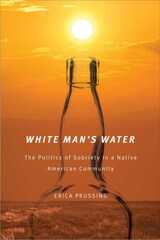 White Man's Water: The Politics of Sobriety in a Native American Community
Erica Prussing
University of Arizona Press, 2011 In recent years, efforts to recognize and accommodate cultural diversity have gained some traction in the politics of US health care. But to date, anthropological perspectives have figured unevenly in efforts to define and address mental health problems. Particularly challenging are examinations of Native peoples’ experiences with alcohol.
Erica Prussing provides the first in-depth assessment of the politics of Native sobriety by focusing on the Northern Cheyenne community in southeastern Montana, where for many decades the federally funded health care system has relied on the Twelve Step program of Alcoholics Anonymous. White Man’s Water provides a thoughtful and careful analysis of Cheyenne views of sobriety and the politics that surround the selective appeal of Twelve Step approaches despite wide-ranging local critiques. Narratives from participants in these programs debunk long-standing stereotypes about ”Indian drinking” and offer insight into the diversity of experiences with alcohol that actually occur among Native North Americans.
This critical ethnography employs vivid accounts of the Northern Cheyenne people to depict how problems with alcohol are culturally constructed, showing how differences in age, gender, and other social features can affect involvement with both drinking and sobriety. These testimonies reveal the key role that gender plays in how Twelve Step program participants engage in a selective and creative process of appropriation at Northern Cheyenne, adapting the program to accommodate local cultural priorities and spiritual resources. The testimonies also illuminate community reactions to these adaptations, inspiring deeper inquiry into how federally funded health services are provided on the reservation.
This book will appeal to readers with an interest in Native studies, ethnography, women’s studies, and medical anthropology. With its critical consideration of how cultural context shapes drinking and sobriety, White Man’s Water offers a multivocal perspective on alcohol’s impact on health and the cultural complexities of sobriety.
 White Market Drugs: Big Pharma and the Hidden History of Addiction in America
David Herzberg
University of Chicago Press, 2020 The contemporary opioid crisis is widely seen as new and unprecedented. Not so. It is merely the latest in a long series of drug crises stretching back over a century. In White Market Drugs, David Herzberg explores these crises and the drugs that fueled them, from Bayer’s Heroin to Purdue’s OxyContin and all the drugs in between: barbiturate “goof balls,” amphetamine “thrill pills,” the “love drug” Quaalude, and more. As Herzberg argues, the vast majority of American experiences with drugs and addiction have taken place within what he calls “white markets,” where legal drugs called medicines are sold to a largely white clientele.
These markets are widely acknowledged but no one has explained how they became so central to the medical system in a nation famous for its “drug wars”—until now. Drawing from federal, state, industry, and medical archives alongside a wealth of published sources, Herzberg re-connects America’s divided drug history, telling the whole story for the first time. He reveals that the driving question for policymakers has never been how to prohibit the use of addictive drugs, but how to ensure their availability in medical contexts, where profitability often outweighs public safety. Access to white markets was thus a double-edged sword for socially privileged consumers, even as communities of color faced exclusion and punitive drug prohibition. To counter this no-win setup, Herzberg advocates for a consumer protection approach that robustly regulates all drug markets to minimize risks while maintaining safe, reliable access (and treatment) for people with addiction.
Accomplishing this requires rethinking a drug/medicine divide born a century ago that, unlike most policies of that racially segregated era, has somehow survived relatively unscathed into the twenty-first century.
By showing how the twenty-first-century opioid crisis is only the most recent in a long history of similar crises of addiction to pharmaceuticals, Herzberg forces us to rethink our most basic ideas about drug policy and addiction itself—ideas that have been failing us catastrophically for over a century.
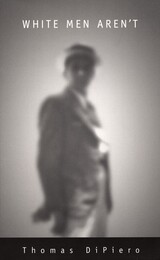 White Men Aren't
Thomas DiPiero
Duke University Press, 2002 Psychoanalytic theory has traditionally taken sexual difference to be the fundamental organizing principle of human subjectivity. White Men Aren’t contests that assumption, arguing that other forms of difference—particularly race—are equally important to the formation of identity. Thomas DiPiero shows how whiteness and masculinity respond to various, complex cultural phenomena through a process akin to hysteria and how differences traditionally termed “racial” organize psychic, social, and political life as thoroughly as sexual difference does. White masculinity is fraught with anxiety, according to DiPiero, because it hinges on the unstable construction of white men’s cultural hegemony. White men must always struggle against the loss of position and the fear of insufficiency—against the specter of what they are not. Drawing on the writings of Freud, Lacan, Butler, Foucault, and Kaja Silverman, as well as on biology, anthropology, and legal sources, Thomas DiPiero contends that psychoanalytic theory has not only failed to account for the role of race in structuring identity, it has in many ways deliberately ignored it. Reading a wide variety of texts—from classical works such as Oedipus Rex and The Iliad to contemporary films including Boyz 'n' the Hood and Grand Canyon—DiPiero reveals how the anxiety of white masculine identity pervades a surprising range of Western thought, including such ostensibly race-neutral phenomena as Englightenment forms of reason.
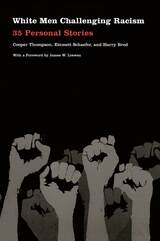 White Men Challenging Racism: 35 Personal Stories
Cooper Thompson, Emmett Schaefer, and Harry Brod
Duke University Press, 2003 White Men Challenging Racism is a collection of first-person narratives chronicling the compelling experiences of thirty-five white men whose efforts to combat racism and fight for social justice are central to their lives. Based on interviews conducted by Cooper Thompson, Emmett Schaefer, and Harry Brod, these engaging oral histories tell the stories of the men’s antiracist work. While these men discuss their accomplishments with pride, they also talk about their mistakes and regrets, their shortcomings and strategic blunders. A foreword by James W. Loewen, author of Lies My Teacher Told Me, provides historical context, describing antiracist efforts undertaken by white men in America during past centuries. Ranging in age from twenty-six to eighty-six, the men whose stories are presented here include some of the elder statesmen of antiracism work as well as members of the newest generation of activists. They come from across the United States—from Denver, Nashville, and San Jose; rural North Carolina, Detroit, and Seattle. Some are straight; some are gay. A few—such as historian Herbert Aptheker, singer/songwriter Si Kahn, Stetson Kennedy (a Klan infiltrator in the 1940s), and Richard Lapchick (active in organizing the sports community against apartheid)—are relatively well known; most are not. Among them are academics, ministers, police officers, firefighters, teachers, journalists, union leaders, and full-time community organizers. They work with Latinos and African-, Asian-, and Native-Americans. Many ground their work in spiritual commitments. Their inspiring personal narratives—whether about researching right-wing groups, organizing Central American immigrants, or serving as pastor of an interracial congregation—connect these men with one another and with their allies in the fight against racism in the United States. All authors’ royalties go directly to fund antiracist work. To read excerpts from the book, please visit http://www.whitemenchallengingracism.com/
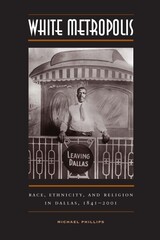 White Metropolis: Race, Ethnicity, and Religion in Dallas, 1841-2001
By Michael Phillips
University of Texas Press, 2006 Winner, T. R. Fehrenbach Award, Texas Historical Commission, 2007 From the nineteenth century until today, the power brokers of Dallas have always portrayed their city as a progressive, pro-business, racially harmonious community that has avoided the racial, ethnic, and class strife that roiled other Southern cities. But does this image of Dallas match the historical reality? In this book, Michael Phillips delves deeply into Dallas's racial and religious past and uncovers a complicated history of resistance, collaboration, and assimilation between the city's African American, Mexican American, and Jewish communities and its white power elite. Exploring more than 150 years of Dallas history, Phillips reveals how white business leaders created both a white racial identity and a Southwestern regional identity that excluded African Americans from power and required Mexican Americans and Jews to adopt Anglo-Saxon norms to achieve what limited positions of power they held. He also demonstrates how the concept of whiteness kept these groups from allying with each other, and with working- and middle-class whites, to build a greater power base and end elite control of the city. Comparing the Dallas racial experience with that of Houston and Atlanta, Phillips identifies how Dallas fits into regional patterns of race relations and illuminates the unique forces that have kept its racial history hidden until the publication of this book.
White Mountain Redware: A Pottery Tradition of East-Central Arizona and Western New Mexico
Roy L. Carlson
University of Arizona Press, 1970 A study of the styles of decoration found on the early southwestern pottery known as White Mountain Redware. The White Mountain Redware tradition, an arbitrary division of the Cibola painted pottery tradition, is composed of those vessels which have a red slip and painted decoration in either black or black and white, which when grouped into pottery types have a geographic locus within or immediately adjacent to the Cibola area, and which share a number of other attributes indicative of close historical relationships.
The White Museum
George Bilgere
Autumn House Press, 2010 Bilgere has published six collections of poetry. His fifth collection "The White Museum" uses humor and thoughtfulness to portray modern American life and language.
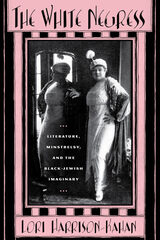 The White Negress: Literature, Minstrelsy, and the Black-Jewish Imaginary
Harrison-Kahan, Lori
Rutgers University Press, 2010 During the first half of the twentieth century, American Jews demonstrated a commitment to racial justice as well as an attraction to African American culture. Until now, the debate about whether such black-Jewish encounters thwarted or enabled Jews’ claims to white privilege has focused on men and representations of masculinity while ignoring questions of women and femininity. The White Negress investigates literary and cultural texts by Jewish and African American women, opening new avenues of inquiry that yield more complex stories about Jewishness, African American identity, and the meanings of whiteness.
Lori Harrison-Kahan examines writings by Edna Ferber, Fannie Hurst, and Zora Neale Hurston, as well as the blackface performances of vaudevillian Sophie Tucker and controversies over the musical and film adaptations of Show Boat and Imitation of Life. Moving between literature and popular culture, she illuminates how the dynamics of interethnic exchange have at once produced and undermined the binary of black and white.
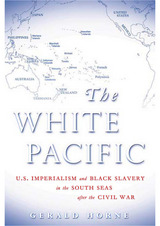 The White Pacific: U.S. Imperalism and Black Slavery in the South Seas after the Civil War
Gerald Horne
University of Hawaii Press, 2007 Worldwide supplies of sugar and cotton were impacted dramatically as the U.S. Civil War dragged on. New areas of production entered these lucrative markets, particularly in the South Pacific, and plantation agriculture grew substantially in disparate areas such as Australia, Fiji, and Hawaii. The increase in production required an increase in labor; in the rush to fill the vacuum, freebooters and other unsavory characters began a slave trade in Melanesians and Polynesians that continued into the twentieth century.
The White Pacific ranges over the broad expanse of Oceania to reconstruct the history of "blackbirding" (slave trading) in the region. It examines the role of U.S. citizens (many of them ex-slaveholders and ex-confederates) in the trade and its roots in Civil War dislocations. What unfolds is a dramatic tale of unfree labor, conflicts between formal and informal empire, white supremacy, threats to sovereignty in Hawaii, the origins of a White Australian policy, and the rise of Japan as a Pacific power and putative protector. It also pieces together a wonderfully suggestive history of the African American presence in the Pacific.
Based on deft archival research in Australia, New Zealand, Fiji, Hawaii, the United States, and Great Britain, The White Pacific uncovers a heretofore hidden story of race, labor, war, and intrigue that contributes significantly to the emerging intersectional histories of race and ethnicity.
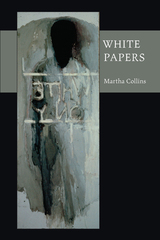 White Papers
Martha Collins
University of Pittsburgh Press, 2012
White Papers is a series of untitled poems that deal with issues of race from a number of personal, historical, and cultural perspectives. Expanding the territory of her 2006 book Blue Front, which focused on a lynching her father witnessed as a child, this book turns, among other things, to Martha Collins' childhood. Throughout, it explores questions about what it means to be white, not only in the poet’s life, but also in our culture and history, even our pre-history. The styles and forms are varied, as are the approaches; some of the poems address race only implicitly, and the book, like Blue Front, includes some documentary and “found” material. But the focus is always on getting at what it has meant and what it means to be white—to have a race and racial history, much of which one would prefer to forget, if one is white, but all of which is essential to remember and to acknowledge in a multi-racial society that continues to live under the influence of its deeply racist past.
White Pass: Gateway to the Klondike
Roy Minter
University of Alaska Press, 2002 By the thousands they came, the gold-seekers of 1897, pouring through Alaska's White and Chilkoot passes on their way to the Klondike and to fortune. Fast behind them came the entrepreneurs, the bunco artists, and before long, the engineers and financiers whose driving ambition was to build a railway through the White Pass's rocky precipices. This is the epic northern adventure of the men who rushed for gold, the workers who toiled in winter storms and thaw-time muck, carving the grade and laying rail, and the ingenious characters who dreamed, schemed, promoted, and finally built the White Pass and Yukon Railway.
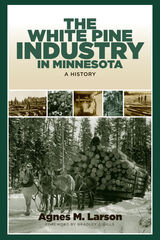 The White Pine Industry in Minnesota: A History
Agnes M. Larson
University of Minnesota Press, 2007 “From the first logging operation to the closing of the last mill this book is so thorough, so comprehensive, so well organized, and so useful that it must take its place with the outstanding monographs of economic and western history.” —Journal of Economic History The old-growth forests of Minnesota, at one time covering 70 percent of the state, played a major role in the development of the Upper Mississippi Valley. Telling the complete history of the white pine industry, Agnes Larson brings us back to a time when Minnesota’s lumber business was thriving. Larson recounts the development of the region with a wealth of information, including the building of the railroads and bustling mill towns; the daily lives of lumberjacks, loggers, river-drivers, and jam-breakers; and the final devastation of the forests. “An excellent contribution to the regional history and historical geography of the Upper Great Lakes area and the upper Mississippi Valley.” —Geographical Review Agnes M. Larson (1892–1967) was professor of history at St. Olaf College. Bradley J. Gills is adjunct professor of history at Grand Valley State University.
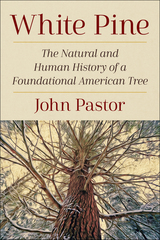 White Pine: The Natural and Human History of a Foundational American Tree
John Pastor
Island Press, 2022 America was built on white pine. From the 1600s through the Civil War and beyond, it was used to build the nation’s ships and houses, barns, and bridges. It became a symbol of independence, adorning the Americans’ flag at Bunker Hill, and an economic engine, generating three times more wealth than the California gold rush. Yet this popularity came at a cost: by the end of the 19th century, clear cutting had decimated much of America’s white pine forests. In White Pine: The Natural and Human History of a Foundational American Tree, ecologist and writer John Pastor takes readers on walk through history, connecting the white pine forests that remain today to a legacy of destruction and renewal.
Since the clear-cutting era, naturalists, foresters, and scientists have taken up the quest to restore the great white pine forests. White Pine follows this centuries-long endeavor, illuminating how the efforts shaped Americans’ understanding of key scientific ideas, from forest succession to the importance of fire. With his keen naturalist’s eye, Pastor shows us why restoring the vitality of these forests has not been simple: a host of other creatures depend on white pine and white pine depends on them. In weaving together cultural and natural history, White Pine celebrates the way humans are connected to the forest—and to the larger natural world.
Today, white pine forests have begun to recover, but face the growing threat of climate change. White Pine shows us that hope for healthy forests lies in understanding the lessons of history, so that iconic species survive as a touchstone for future generations.
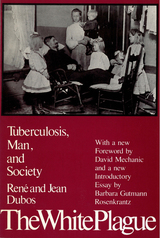 The White Plague: Tuberculosis, Man and Society
Dubos, Jean
Rutgers University Press, 1987 In The White Plague, René and Jean Dubos argue that the great increase of tuberculosis was intimately connected with the rise of an industrial, urbanized society and—a much more controversial idea when this book first appeared forty years ago—that the progress of medical science had very little to do with the marked decline in tuberculosis in the twentieth century. The White Plague has long been regarded as a classic in the social and environmental history of disease. This reprint of the 1952 edition features new introductory writings by two distinguished practitioners of the sociology and history of medicine. David Mechanic's foreword describes the personal and intellectual experience that shaped René Dubos's view of tuberculosis. Barbara Gutmann Rosenkrantz's historical introduction reexamines The White Plague in light of recent work on the social history of tuberculosis. Her thought-provoking essay pays particular attention to the broader cultural and medical assumptions about sickness and sick people that inform a society’s approach to the conquest of disease.
The White Plum: A Biography of Ume Tsuda, Pioneer of Women's Higher Education in Japan
Yoshiko Furuki
University of Hawaii Press, 2015 At the age of six, Ume Tsuda (1865-1929) was sent on a mission by the Japanese government to the United States with four other girls. Their task was first to educate themselves in modern ways and Western learning, and then return to bring that gift to their sisters in Japan. When Ume finally did return, ready to carry out her duty, she found a new government quite unprepared to make use of her skills. Undaunted, she devoted the rest of her life to seeking a way to achieve the goal of making modern higher education available to Japanese women for the first time. Eventually she founded her own Tsuda College, which has remained one of the bastions of women’s education in Japan to this day.
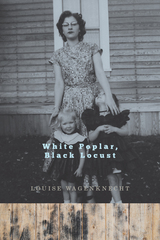 White Poplar, Black Locust
Louise Wagenknecht
Oregon State University Press, 2021 Growing up in one of the West’s last company lumber towns, a small community called Hilt on the California-Oregon border, Louise Wagenknecht witnessed the dying years of a unique way of life. The lumber boom of the 1950s and 1960s would devastate the ancient old-growth forests of the Klamath Mountains as well as the people of Hilt, whose lives were inextricably tied to the company lumber mill. White Poplar, Black Locust is the story of that transformation, but it is also something more—a noteworthy addition to the literature of place, and a sensitive and richly textured family memoir. As Wagenknecht unravels the threads that still bind her to both Hilt’s history and her own, unforgettable characters emerge, and what should have been the happy ending to this story, the marriage of her divorced mother to a forester working for the Fruit Growers Supply Company, becomes instead the end of childhood innocence, foretelling the demise of the mill and the end of Hilt itself.
Originally published by the University of Nebraska Press in 2003, this first book in Louise Wagenknecht’s trilogy about life in the Klamath Mountains is now available through Oregon State University Press, together with Light on the Devils (2011) and Shadows on the Klamath (2021).
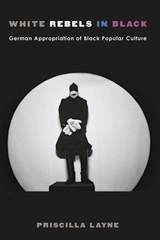 White Rebels in Black: German Appropriation of Black Popular Culture
Priscilla Layne
University of Michigan Press, 2018 Analyzing literary texts and films, White Rebels in Black shows how German authors have since the 1950s appropriated black popular culture, particularly music, to distance themselves from the legacy of Nazi Germany, authoritarianism, and racism, and how such appropriation changes over time. Priscilla Layne offers a critique of how blackness came to symbolize a positive escape from the hegemonic masculinity of postwar Germany, and how black identities have been represented as separate from, and in opposition to, German identity, foreclosing the possibility of being both black and German. Citing four autobiographies published by black German authors Hans Jürgen Massaquo, Theodor Michael, Günter Kaufmann, and Charly Graf, Layne considers how black German men have related to hegemonic masculinity since Nazi Germany, and concludes with a discussion on the work of black German poet, Philipp Khabo Köpsell.
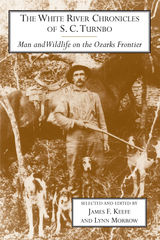 The White River Chronicles of S. C. Turnbo: Man and Wildlife on the Ozarks Frontier
James Keefe
University of Arkansas Press, 1999 This highly readable folklore collection highlights the most representative and evocative tales in the twenty-five hundred pages of backwoods stories collected by Silas Tunbo toward the end of the last century. Turnbo and his informants, antebellum Ozarks natives, believed that the legends of the hunt were, as William Faulkner would write, “the best of all breathing and forever the best of all listening.”
With no apology, the first settlers on the southern frontiers became predators in their own environment. They embraced blood sport and sought its rewards at every turn. The chase promised them a sureness of profit more predictable than land speculation, timbering, or commercial agriculture. These early opportunists believed that the greatest natural resource along the lush White River drainages in Missouri and Arkansas was large game. Although surrounded by living waters, climax forests, and luxuriant grasses, the tellers of Turnbo’s stories only incidentally made mention of flora. Silas Turnbo and his informants were fascinated by animals and the settlers’ ongoing relationship with them—a relationship often defined by contents for supremacy. Significantly, Tunbo’s education included only a few years in subscription schools of the 1850s. His writing is direct and in the idiom of hte Ozarks, including spellings that are occasionally whimsical, perfectly befitting these “fireside stories” of the great outdoor drama of the southern frontiers.
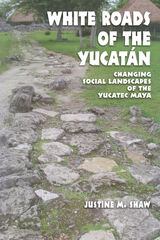 White Roads of the Yucatán: Changing Social Landscapes of the Yucatec Maya
Justine M. Shaw
University of Arizona Press, 2008 Maya sacbeob, or raised “white roads,” are often considered a single class of features, with a sole purpose. In this first systematic examination of their functions, meanings, arrangements, and construction styles, Justine Shaw reveals that these causeways served a variety of cultural and natural functions. In White Roads of the Yucatán, author Justine Shaw presents original field data collected with the Cochuah Regional Archaeological Survey at two ancient Maya sites, Ichmul and Yo’okop. Both centers chose to invest enormous resources in the construction of monumental roadways during a time of social and political turmoil in the Terminal Classic period. Shaw carefully examines why it was at this point—and no other—that the settlements made such a decision. She argues that both settlements used the sacbeob as a method of socially integrating the largest, most diverse and dispersed population in the Cochuah region. She further demonstrates that their use of the sacbeob, in concert with other innovative strategies, allowed Ichmul and Yo’okop to outlast many of the sites that they may have sought to emulate and to flourish during a time of tremendous sociopolitical and economic change. In addition to her detailed discussion of these two sites, Shaw provides an exhaustive review of the literature of Maya sacbeob archaeology, describing various interpretations of construction, features, and variability. This synthetic and interpretive treatment will aid researchers working on a variety of complex civilizations with road systems, as well as those interested in core-periphery relationships, cultural collapse, and social integration.
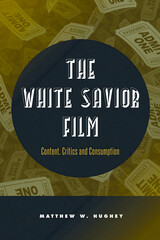 The White Savior Film: Content, Critics, and Consumption
Matthew Hughey
Temple University Press, 2014 The cinematic trope of the white savior film-think of Sandra Bullock in The Blind Side, Kevin Costner in Dances with Wolves, or Tom Cruise in The Last Samurai--features messianic characters in unfamiliar or hostile settings discovering something about themselves and their culture in the process of saving members of other races from terrible fates. In The White Savior Film, Matthew Hughey provides a cogent, multipronged analysis of this subgenre of films to investigate the underpinnings of the Hollywood-constructed images of idealized (and often idealistic) white Americans. Hughey considers the production, distribution, and consumption of white savior films to show how the dominant messages of sacrifice, suffering, and redemption are perceived by both critics and audiences. Examining the content of fifty films, nearly 3,000 reviews, and interviews with viewer focus groups, he accounts for the popularity of this subgenre and its portrayal of "racial progress." The White Savior Film shows how we as a society create and understand these films and how they reflect the political and cultural contexts of their time.
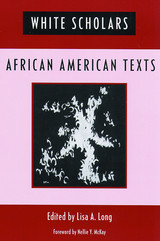 White Scholars/African American Texts
Edited by Lisa A. Long
Rutgers University Press, 2005 What makes someone an authority? What makes one person's knowledge more credible than another's? In the ongoing debates over racial authenticity, some attest that we can know each other's experiences simply because we are all "human," while others assume a more skeptical stance, insisting that racial differences create unbridgeable gaps in knowledge. Bringing new perspectives to these perennial debates, the essays in this collection explore the many difficulties created by the fact that white scholars greatly outnumber black scholars in the study and teaching of African American literature. Contributors, including some of the most prominent theorists in the field as well as younger scholars, examine who is speaking, what is being spoken and what is not, and why framing African American literature in terms of an exclusive black/white racial divide is problematic and limiting. In highlighting the "whiteness" of some African Americanists, the collection does not imply that the teaching or understanding of black literature by white scholars is definitively impossible. Indeed such work is not only possible, but imperative. Instead, the essays aim to open a much needed public conversation about the real and pressing challenges that white scholars face in this type of work, as well as the implications of how these challenges are met.
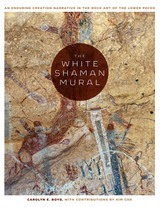 The White Shaman Mural: An Enduring Creation Narrative in the Rock Art of the Lower Pecos
By Carolyn E. Boyd, with contributions by Kim Cox
University of Texas Press, 2016 Winner, Society for American Archaeology Book Award, 2017
San Antonio Conservation Society Publication Award, 2019 The prehistoric hunter-gatherers of the Lower Pecos Canyonlands of Texas and Coahuila, Mexico, created some of the most spectacularly complex, colorful, extensive, and enduring rock art of the ancient world. Perhaps the greatest of these masterpieces is the White Shaman mural, an intricate painting that spans some twenty-six feet in length and thirteen feet in height on the wall of a shallow cave overlooking the Pecos River. In The White Shaman Mural, Carolyn E. Boyd takes us on a journey of discovery as she builds a convincing case that the mural tells a story of the birth of the sun and the beginning of time—making it possibly the oldest pictorial creation narrative in North America. Unlike previous scholars who have viewed Pecos rock art as random and indecipherable, Boyd demonstrates that the White Shaman mural was intentionally composed as a visual narrative, using a graphic vocabulary of images to communicate multiple levels of meaning and function. Drawing on twenty-five years of archaeological research and analysis, as well as insights from ethnohistory and art history, Boyd identifies patterns in the imagery that equate, in stunning detail, to the mythologies of Uto-Aztecan-speaking peoples, including the ancient Aztec and the present-day Huichol. This paradigm-shifting identification of core Mesoamerican beliefs in the Pecos rock art reveals that a shared ideological universe was already firmly established among foragers living in the Lower Pecos region as long as four thousand years ago.
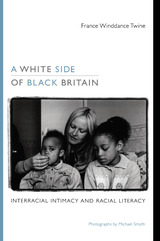 A White Side of Black Britain: Interracial Intimacy and Racial Literacy
France Winddance Twine
Duke University Press, 2010 A White Side of Black Britain explores the racial consciousness of white women who have established families and had children with black men of African Caribbean heritage in the United Kingdom. Filling a gap in the sociological literature on racism and antiracism, France Winddance Twine introduces new theoretical concepts in her description and analysis of white “transracial” mothers raising their children of African Caribbean ancestry in a racially diverse British city. Varying in age, income, education, and marital status, the transracial mothers at the center of Twine’s ethnography share moving stories about how they cope with racism and teach their children to identify and respond to it. They also discuss how and why their thinking about race, racism, and whiteness changed over time. Interviewing and observing more than forty multiracial families over a decade, Twine discovered that in most of them, the white woman’s racial consciousness and her ability to recognize and negotiate racism were derived as much from her relationships with her black partner and his extended family as from her female friends. In addition to the white birth mothers, Twine interviewed their children, spouses, domestic partners, friends, and members of their extended families. Her book is best characterized as an ethnography of racial consciousness and a dialogue between black and white family members about the meaning of race, racism, and whiteness. It includes intimate photographs of the family members and their communities.
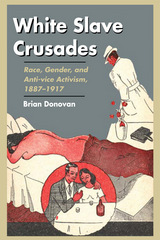 White Slave Crusades: Race, Gender, and Anti-vice Activism, 1887-1917
Brian Donovan
University of Illinois Press, 2005 During the early twentieth century, individuals and organizations from across the political spectrum launched a sustained effort to eradicate forced prostitution, commonly known as "white slavery." White Slave Crusades is the first comparative study to focus on how these anti-vice campaigns also resulted in the creation of a racial hierarchy in the United States.
Focusing on the intersection of race, gender, and sex in the antiprostitution campaigns, Brian Donovan analyzes the reactions of native-born whites to new immigrant groups in Chicago, to African Americans in New York City, and to Chinese immigrants in San Francisco. Donovan shows how reformers employed white slavery narratives of sexual danger to clarify the boundaries of racial categories, allowing native-born whites to speak of a collective "us" as opposed to a "them." These stories about forced prostitution provided an emotionally powerful justification for segregation, as well as other forms of racial and sexual boundary maintenance in urban America.
 White Slaves, African Masters: An Anthology of American Barbary Captivity Narratives
Edited by Paul Baepler
University of Chicago Press, 1999 Some of the most popular stories in nineteenth-century America were sensational tales of whites captured and enslaved in North Africa. White Slaves, African Masters for the first time gathers together a selection of these Barbary captivity narratives, which significantly influenced early American attitudes toward race, slavery, and nationalism.
Though Barbary privateers began to seize North American colonists as early as 1625, Barbary captivity narratives did not begin to flourish until after the American Revolution. During these years, stories of Barbary captivity forced the U.S. government to pay humiliating tributes to African rulers, stimulated the drive to create the U.S. Navy, and brought on America's first post-revolutionary war. These tales also were used both to justify and to vilify slavery.
The accounts collected here range from the 1798 tale of John Foss, who was ransomed by Thomas Jefferson's administration for tribute totaling a sixth of the annual federal budget, to the story of Ion Perdicaris, whose (probably staged) abduction in Tangier in 1904 prompted Theodore Roosevelt to send warships to Morocco and inspired the 1975 film The Wind and the Lion. Also included is the unusual story of Robert Adams, a light-skinned African American who was abducted by Arabs and used by them to hunt negro slaves; captured by black villagers who presumed he was white; then was sold back to a group of Arabs, from whom he was ransomed by a British diplomat.
Long out of print and never before anthologized, these fascinating tales open an entirely new chapter of early American literary history, and shed new light on the more familiar genres of Indian captivity narrative and American slave narrative.
"Baepler has done American literary and cultural historians a service by collecting these long-out-of-print Barbary captivity narratives . . . . Baepler's excellent introduction and full bibliography of primary and secondary sources greatly enhance our knowledge of this fascinating genre."—Library Journal
The White Snake: A Play
Mary Zimmerman
Northwestern University Press, 2013 In her latest theatrical production inspired by a classic story, Mary Zimmerman reimagines The White Snake, an ancient Chinese legend in which a snake spirit transforms herself into a beautiful woman in order to experience the human world. Adventuring down her mountainside with her companion, Green Snake, White Snake meets and falls in love with the humble, virtuous Xu Xian and convinces him to marry her. Together, the three friends open a pharmacy, but soon the remarkable healing powers of White Snake draw the attention of a treacherous monk, Fa Hai. Outraged at the union between a mortal and a snake spirit, Fa Hai takes it upon himself to destroy it. Zimmerman brings to this timeless romance her usual brilliant mix of ingenious stagecraft, song, abundant humor, and compassion.
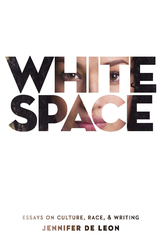 White Space: Essays on Culture, Race, & Writing
Jennifer De Leon
University of Massachusetts Press, 2021 Sometime in her twenties, Jennifer De Leon asked herself, "What would you do if you just gave yourself permission?" While her parents had fled Guatemala over three decades earlier when the country was in the grips of genocide and civil war, she hadn't been back since she was a child. She gave herself permission to return—to relearn the Spanish that she had forgotten, unpack her family's history, and begin to make her own way.
Alternately honest, funny, and visceral, this powerful collection follows De Leon as she comes of age as a Guatemalan-American woman and learns to navigate the space between two worlds. Never rich or white enough for her posh college, she finds herself equally adrift in her first weeks in her parents' home country. During the years to follow, she would return to Guatemala again and again, meet ex-guerrillera and genocide survivors, get married in the old cobblestoned capital of Antigua, and teach her newborn son about his roots.
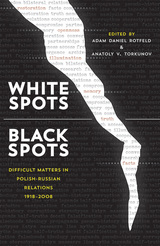 White Spots—Black Spots: Difficult Matters in Polish-Russian Relations, 1918–2008
Adam Daniel Rotfeld
University of Pittsburgh Press, 2015 Poland and Russia have a long relationship that encompasses centuries of mutual antagonism, war, and conquest. The twentieth century has been particularly intense, including world wars, revolution, massacres, national independence, and decades of communist rule—for both countries. Since the collapse of communism, historians in both countries have struggled to come to grips with this difficult legacy.
This pioneering study, prepared by the semi-official Polish-Russian Group on Difficult Matters, is a comprehensive effort to document and fully disclose the major conflicts and interrelations between the two nations from 1918 to 2008, events that have often been avoided or presented with a strong political bias. This is the English translation of this major study, which has received acclaim for its Polish and Russian editions.
The chapters offer parallel histories by prominent Polish and Russian scholars who recount each country’s version of the event in question. Among the topics discussed are the 1920 Polish-Russian war, the origins of World War II and the notorious Hitler-Stalin pact, the infamously shrouded Katyn massacre, the communization of Poland, Cold War relations, the Solidarity movement and martial law, and the renewed relations of contemporary Poland and Russia.
White Summer
Joelle Biele
Southern Illinois University Press, 2002 In White Summer, Joelle Biele investigates the problems of personal and cultural memory. Rich with images of flight and displacement, Biele’s poems show a love for words, their music and physicality. In lyric addresses, historical meditations, and autobiographical narratives, she takes readers on a journey that includes stops at a dinner party in ancient Rome, a market square in Germany, an Italian feast in the Bronx, and the main concourse of Manhattan’s Grand Central Station. She shows a sharp eye for the telling detail whether she is studying the migrations of birds or sketching portraits of people wishing to escape the confines of their lives. Throughout her first collection, Biele reveals and revels in the power of language to shape and create experience.
 WHITE TATTOO: A COLLECTION OF SHORT STORIES
William J. Cobb
Ohio State University Press, 2002 The White Tattoo is a smart, always surprising collection of American stories. William J. Cobb knows and loves his character and places. His first collection of short stories, The White Tattoo, revels in the undeniable allure of the physical world even as it is juxtaposed with the twists and kinks of psychological and emotional pain. At one extreme is the tense, torturous psychology of “Motel Ice,” whose narrative voice emerges from the mind of a mentally disturbed Jehovah’s Witness gazing out on a world of temptation and redemption. Similarly hyperdramatic in its conclusion and its arc of betrayal and violent aftermath, “For All You Dorks, Blah Blah Blah” conjures up a sleepwalking, murderous father who is less culpable in the harm he causes but all the while most destructive. Stylistically, the stories crackle, snap, and zing. Several of them, including “The Wishes,” “The Atmosphere of Vienna,” and “Dark Matter,” use an idiosyncratic, Tilt-O-Whirl narrative marked by a swirling, shifting focus and point of view, trying to create a multifaceted, complex vision of the world by dipping in and out of the consciousness of various characters.
White Teacher: With a New Preface, Third Edition
Vivian Gussin Paley
Harvard University Press, 2000 Vivian Paley presents a moving personal account of her experiences teaching kindergarten in an integrated school within a predominantly white, middle-class neighborhood. In a new preface, she reflects on the way that even simple terminology can convey unintended meanings and show a speaker's blind spots. She also vividly describes what her readers have taught her over the years about herself as a "white teacher."
The White Terror and the Political Reaction after Waterloo
Daniel P. Resnick
Harvard University Press In this first monograph on the White Terror since Ernest Daudet wrote on the subject in 1878, Daniel Resnick presents the only documented account of the magnitude of the political reaction of 1815–16 in France. By means of a statistical record of police arrests and judicial convictions, he demonstrates the nature, extent, and impact on French political history of the widespread repression that grew out of the royalist crusade to extirpate any trace of Napoleonic influences. The calculated policy of intimidation pursued by the royalists, the author argues, engendered the political reflexes that were to prove fatal to the House of Bourbon.
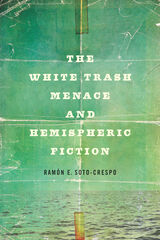 The White Trash Menace and Hemispheric Fiction
Ramón E. Soto-Crespo
Ohio State University Press, 2020 The White Trash Menace and Hemispheric Fiction uncovers a rich archive of “white trash” fiction in the Caribbean and its surrounding regions. After the abolition of slavery, affluent white planters underwent a period of identity crisis where wealth no longer maintained their privileges, and yet they did not belong to the group of newly freed peoples. Ramón E. Soto-Crespo analyzes the literary legacy of those who came under the label of “white trash.” This book argues that during the mid-twentieth century, “white trash” started off as a trope in pulp fiction and subsequently became absorbed into what we now think of as canonical literature. In The White Trash Menace, Soto-Crespo pairs novels from William Faulkner and Jean Rhys with pulp authors such as Edgar Mittelholzer and Kyle Onstott in order to provide an alternate account of the literary development of race and class in the Americas. Together these works constitute a circum-Atlantic, white-trash world of letters: a hemispheric network of decapitalized whiteness that challenges how we imagine literary history by departing from nation-based models of aesthetic development. By providing a genealogy of literary circulation, The White Trash Menace likewise challenges conventional understandings of “white trash,” and more broadly challenges our understanding of literature, class, and race in the Americas.
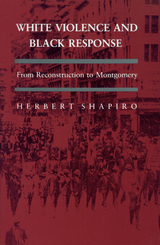 White Violence and Black Response: From Reconstruction to Montgomery
Herbert Shapiro
University of Massachusetts Press, 1988 We are taught that America is a society based on respect for the law and orderly procedures. That the Constitution stands as a safeguard of individual freedom, and the courts and the police are supposedly established to enforce the law. When a controversial issue arises in the American fabric, it is to be resolved not in the streets but through the democratic processes of elections. Yet, for blacks these liberal values have been turned into their opposites. The courts have most often stood silent in the face of racist violence or have turned their wrath against the victims, not the perpetrators; the police have protected the mob rather than the mobbed and have often either aided the lynchers or displayed amazing inability to identify them. Where race is concerned, legislative or judicial action to deal with controversial issues has often come late and been partial in nature, while white violence has continued to terrorize black Americans without hindrance.
In White Violence and Black Response: From Reconstruction to Montgomery, Herbert Shapiro explores the depths of violence generated by white racism and the irony of the American association with violence as a behavior of black people. Citing the nation's political leadership, educational institutions, and news media as institutions that fail to educate Americans about the oppressive social conditions that have root in these criminal acts, Shapiro is able to expose the ways in which white supremacy operates within American institutions and the responses by black people in this powerful read.
White Waters and Black
Gordon MacCreagh
University of Chicago Press, 2001 With a wicked eye for absurdities, Gordon MacCreagh recounts his adventures with eight "Eminent Scientificos" as they set out to explore the Amazon in 1923 without any idea of what lies ahead of them: rapids, malaria, monkey stew, and "dangerous savages." A combination of Twain's The Innocents Abroad and a cautionary tale for explorers, this is one of the most honest accounts ever written of a scientific expedition.
 White Wedding
Kathleen J. Woods
University of Alabama Press, 2022 An enigmatic woman wanders from a pleasure mansion to a backyard wedding, upending the lives of everyone present
No one knows the woman at the wedding. Not the caterer, an easy target, succumbing to her advances. Not the pregnant bride or her tangled family, trying to spin a fairytale wedding under a melting hot summer sun. Not even the bride’s stepsister, Charlotte, who, in the middle of the night and despite her better judgment, allows this wandering wedding crasher into her car.
Crusted in dried blood and other bodily fluids, the woman exists in layers of sense and story, a nesting doll of pornographic tales in which fantasy and banality collide and blur. In this novel that is at once visceral, vivid, and spare, the uninvited guest gives each of those she meets what they want, whether they like it or not.
Here writhe distinct bodies in distinct ecstasies, echoing and defying inherited American narratives about gender, shame, and pleasure. With an edge of humor and horror, Woods explores if —and how—we consent to our own desires.
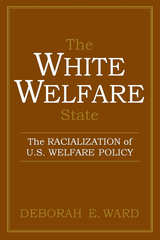 The White Welfare State: The Racialization of U.S. Welfare Policy
Deborah E. Ward
University of Michigan Press, 2005 The White Welfare State challenges common misconceptions of the development of U.S. welfare policy. Arguing that race has always been central to welfare policy-making in the United States, Deborah Ward breaks new ground by showing that the Mothers' Pensions--the Progressive-Era precursors to modern welfare programs--were premised on a policy of racial discrimination against blacks and other minorities. Ward's rigorous and thoroughly documented analysis demonstrates that the creation and implementation of the mothers' pensions program was driven by debates about who "deserved" social welfare and not who needed it the most.
"In The White Welfare State, Deborah Ward assembles a powerful array of documentary and statistical evidence to reveal the mechanisms, centrality, and deep historical continuity of racial exclusion in modern 'welfare' provision in the United States. Bringing unparalleled scrutiny to the provisions and implementation of state-level mothers' pensions, she argues persuasively that racialized patterns of welfare administration were firmly entrenched in this Progressive Era legislation, only to be adopted and reinforced in the New Deal welfare state. With rigorous and clear-eyed analysis, she pushes us to confront the singular role of race in welfare's development, from its early 20th-century origins to its official demise at century's end."
--Alice O'Connor, University of California at Santa Barbara
"This is a richly informative and arresting work. The White Welfare State will force a reevaluation of the role racism has played as a fundamental feature in even the most progressive features of the American welfare state. Written elegantly, this book will provoke a wide-ranging discussion among social scientists, historians, and students of public policy."
--Ira Katznelson, Ruggles Professor of Political Science and History, Columbia University
"This book offers an original and absorbing account of early policies that shaped the course of the American welfare state. It extends yet challenges extant interpretations and expands our understanding of the interconnections of race and class issues in the U.S., and American political development more broadly."
--Rodney Hero, University of Notre Dame
White Wolf: Sixteen Stories
Krisztina Tóth
Seagull Books, 2026 A powerful collection of sixteen unsettling stories that delve into the hidden traumas of everyday life.
“Every home is a different story,” says one narrator in White Wolf while looking for her own childhood home. Every unhappy home is unhappy in its own way—and so are the stories in Krisztina Tóth’s new volume, in which the writer’s voice is darker and more radical than ever.
These are stories of trauma, oppression, submission, exclusion, stigma, and violence. Many of them tell of childhood abuses, unpunished crimes, lost children—suffering that goes without punishment, apology, and forgiveness. Her mostly nameless heroes are everywhere around us, stepping into the same elevator, running behind us on the staircase. Many of them are so wounded or tormented that they behave in strange ways. In White Wolf, Tóth observes these characters with acute sensitivity and attentiveness to detail.
 Whitebark Pine Communities: Ecology And Restoration
Edited by Diana F. Tomback, Stephen F. Arno, and Robert E. Keane
Island Press, 2001 Whitebark pine is a dominant feature of western high-mountain regions, offering an important source of food and high-quality habitat for species ranging from Clark's nutcracker to the grizzly bear. But in the northwestern United States and southwestern Canada, much of the whitebark pine is disappearing. Why is a high-mountain species found in places rarely disturbed by humans in trouble? And what can be done about it.Whitebark Pine Communities addresses those questions, explaining how a combination of altered fire regimes and fungal infestation is leading to a rapid decline of this once abundant -- and ecologically vital -- species. Leading experts in the field explain what is known about whitebark pine communities and their ecological value, examine its precarious situation, and present the state of knowledge concerning restoration alternatives. The book. presents an overview of the ecology and status of whitebark pine communities offers a basic understanding of whitebark pine taxonomy, distribution, and ecology, including environmental tolerances, community disturbance processes, regeneration processes, species interactions, and genetic population structure identifies the threats to whitebark pine communities explains the need for management intervention surveys the extent of impact and losses to dateMore importantly, the book clearly shows that the knowledge and management tools are available to restore whitebark pine communities both locally and on a significant scale regionally, and it provides specific information about what actions can and must be taken.Whitebark Pine Communities offers a detailed portrait of the ecology of whitebark pine communities and the current threats to them. It brings together leading experts to provide in-depth information on research needs, management approaches, and restoration activities, and will be essential reading for ecologists, land managers, and anyone concerned with the health of forest ecosystems in the western United States.
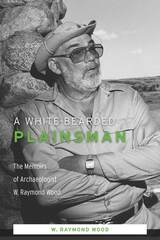 A White-Bearded Plainsman: The Memoirs of Archaeologist W. Raymond Wood
W. Raymond Wood
University of Utah Press, 2011 W. Raymond Wood played a leading role in the early days of Great Plains archaeology. In A White-Bearded Plainsman, he tells how his own career emerged, as the discipline of Plains archaeology developed during the post-World War II era. Readers will learn of the childhood influences that lead Wood to pursue the path of archaeologist, and of the events and people that shaped his professional life. In addition to telling Wood’s personal story, the book provides an intellectual history of the discipline of mid-continental archaeology over the last half century. It will thus be valuable to students and scholars in the field, as it describes how the paradigms in Plains and midwestern prehistory have changed over time. To understand the discipline, one must understand the cultural and intellectual underpinnings that shaped it. Wood’s book helps map for a new generation of archaeologists from whence they’ve come, and his role in the developments along the way.
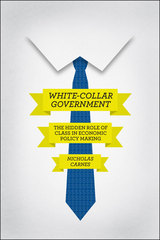 White-Collar Government: The Hidden Role of Class in Economic Policy Making
Nicholas Carnes
University of Chicago Press, 2013 Eight of the last twelve presidents were millionaires when they took office. Millionaires have a majority on the Supreme Court, and they also make up majorities in Congress, where a background in business or law is the norm and the average member has spent less than two percent of his or her adult life in a working-class job. Why is it that most politicians in America are so much better off than the people who elect them— and does the social class divide between citizens and their representatives matter?
With White-Collar Government, Nicholas Carnes answers this question with a resounding—and disturbing—yes. Legislators’ socioeconomic backgrounds, he shows, have a profound impact on both how they view the issues and the choices they make in office. Scant representation from among the working class almost guarantees that the policymaking process will be skewed toward outcomes that favor the upper class. It matters that the wealthiest Americans set the tax rates for the wealthy, that white-collar professionals choose the minimum wage for blue-collar workers, and that people who have always had health insurance decide whether or not to help those without. And while there is no one cause for this crisis of representation, Carnes shows that the problem does not stem from a lack of qualified candidates from among the working class. The solution, he argues, must involve a variety of changes, from the equalization of campaign funding to a shift in the types of candidates the parties support.
If we want a government for the people, we have to start working toward a government that is truly by the people. White-Collar Government challenges long-held notions about the causes of political inequality in the United States and speaks to enduring questions about representation and political accountability.
 Whitehorn's Windmill
Kazys Boruta
Central European University Press, 2009 Because of his political views, Kazys Boruta spent years in prison both before and after WWII. In the last phase of his life in Soviet Lithuania, he earned a living by translations published under a pseudonym. Most of Whitehorn’s Windmill (Baltaragio malunas) was written in 1942, during the German occupation. Bearing a lyrical style that gives full rein to the oral folktale tradition Lithuania is famous for, the novel is by turns romantic, farcical, fantastic, and tragic. The sense of spirituality that permeates the work reflects Lithuania’s pagan roots that were overlaid with an occasionally over-zealous Catholicism not so very long ago. The story is about Whitehorn the miller’s efforts to find a match for his beautiful daughter, Jurga, against various calamities with and among suitors, neighbors, priests and other inhabitants of the village, and ultimately against the devil’s spell. The interesting plot made the novel popular as juvenile literature, too.
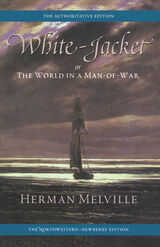 White-Jacket; or, The World in a Man-of-War: Volume Five
Herman Melville
Northwestern University Press, 2000 Herman Melville wrote White-Jacket; or, The World in a Man-of-War during two months of intense work in the summer of 1849. He drew upon his memories of naval life, having spent fourteen months as an ordinary seaman aboard a frigate as it sailed the Pacific and made the homeward voyage around Cape Horn.
Already that same summer Melville had written Redburn, and he regarded the books as "two jobs, which I have done for money--being forced to it, as other men are to sawing wood." The reviewers were not as hard on White-Jacket as Melville himself was. The English liked its praise of British seamen. The Americans were more interested in Melville's attack on naval abuses, particularly flogging, and his advocacy of humanitarian causes. Soon Melville was acclaimed the best sea writer of the day.
Part autobiography, part epic fiction, White-Jacket remains a brilliantly imaginative social novel by one of the great writers of the sea. This text of the novel is an Approved Text of the Center for Editions of American Authors (Modern Language Association of America).
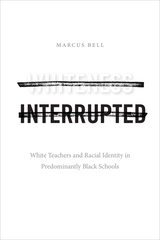 Whiteness Interrupted: White Teachers and Racial Identity in Predominantly Black Schools
Marcus Bell
Duke University Press, 2021 In Whiteness Interrupted Marcus Bell presents a revealing portrait of white teachers in majority-black schools in which he examines the limitations of understandings of how white racial identity is formed. Through in-depth interviews with dozens of white teachers from a racially segregated, urban school district in Upstate New York, Bell outlines how whiteness is constructed based on localized interactions and takes a different form in predominantly black spaces. He finds that in response to racial stress in a difficult teaching environment, white teachers conceptualized whiteness as a stigmatized category predicated on white victimization. When discussing race outside majority-black spaces, Bell's subjects characterized American society as postracial, in which race seldom affects outcomes. Conversely, in discussing their experiences within predominantly black spaces, they rejected the idea of white privilege, often angrily, and instead focused on what they saw as the racial privilege of blackness. Throughout, Bell underscores the significance of white victimization narratives in black spaces and their repercussions as the United States becomes a majority-minority society.
|
|

